20-25 June 2019
Robert has wanted to go to Croatia for a long time. Fran Violich, one of his professors at Berkeley, recommended visiting the Dalmatian Coast back in 1970. He said that it was the most beautiful coast in the world. Robert thought it was about time to go.
While Fran Violich’s assessment of this landscape might have been swayed by his Croatian ancestry, the coastline is beautiful and varied.
We have seen the tourists and we are them
The biggest change in coming to Croatia is that we now feel like the tourists we saw in Rome trying to decipher routes, menus, etc. Conversations are very simple—How big a beer? What flavor of gelato? Where is the restroom? Does Sephora have a store here? How much is the ferry ride? Do you accept credit cards? No. Do you sell soy milk?
In fact, the younger Croatians have a lot of education in English starting in first grade and continuing through high school. But many we spoke to feel they really learned English by watching television and movies. When asked, they are eager to speak to you about their country and their day-to-day life. They also have a keen sense of humor. One waiter told Bonnie with a straight face (after she told him about her intolerance to milk and cheese) that he would bring her a side of Parmesan for her salad . . . and he did!
While a little daunting at times, it is not to hard to navigate and the beautiful scenery (as in Rome) makes up for the effort.
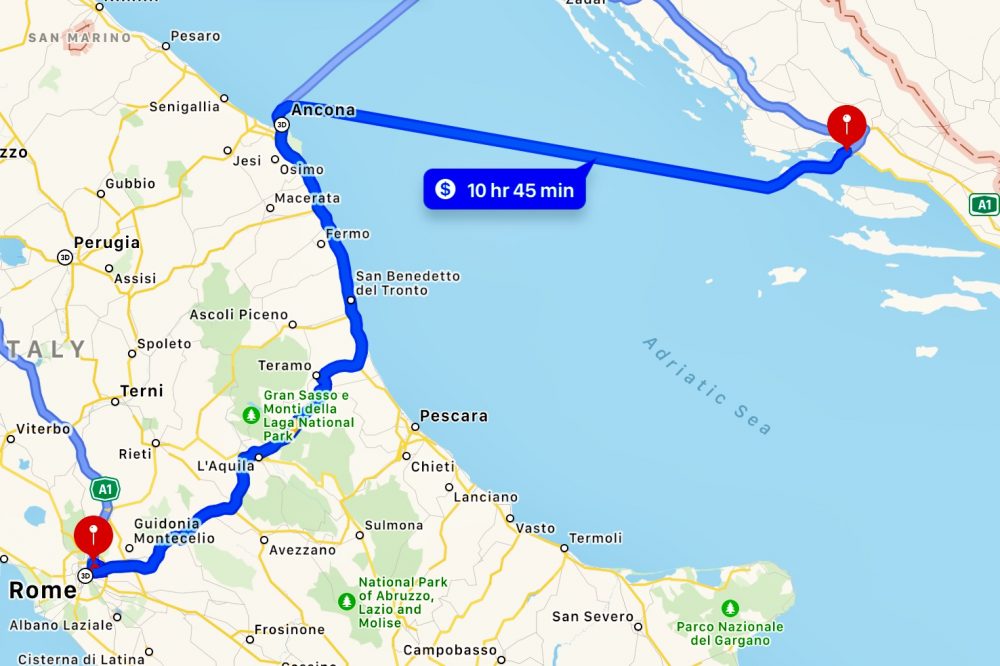
Ferry—Ancona to Split
The car ferry left the port of Ancona on the east coast of Italy around 8 PM and arrived in Split around 7 AM. The sea was calm and the beds comfortable enough. Robert took advantage of the shower (the shower is the tiny bathroom in the cabin with a drain in floor). We prepaid for the dinner, which was good—salad, first and second course, and dessert.
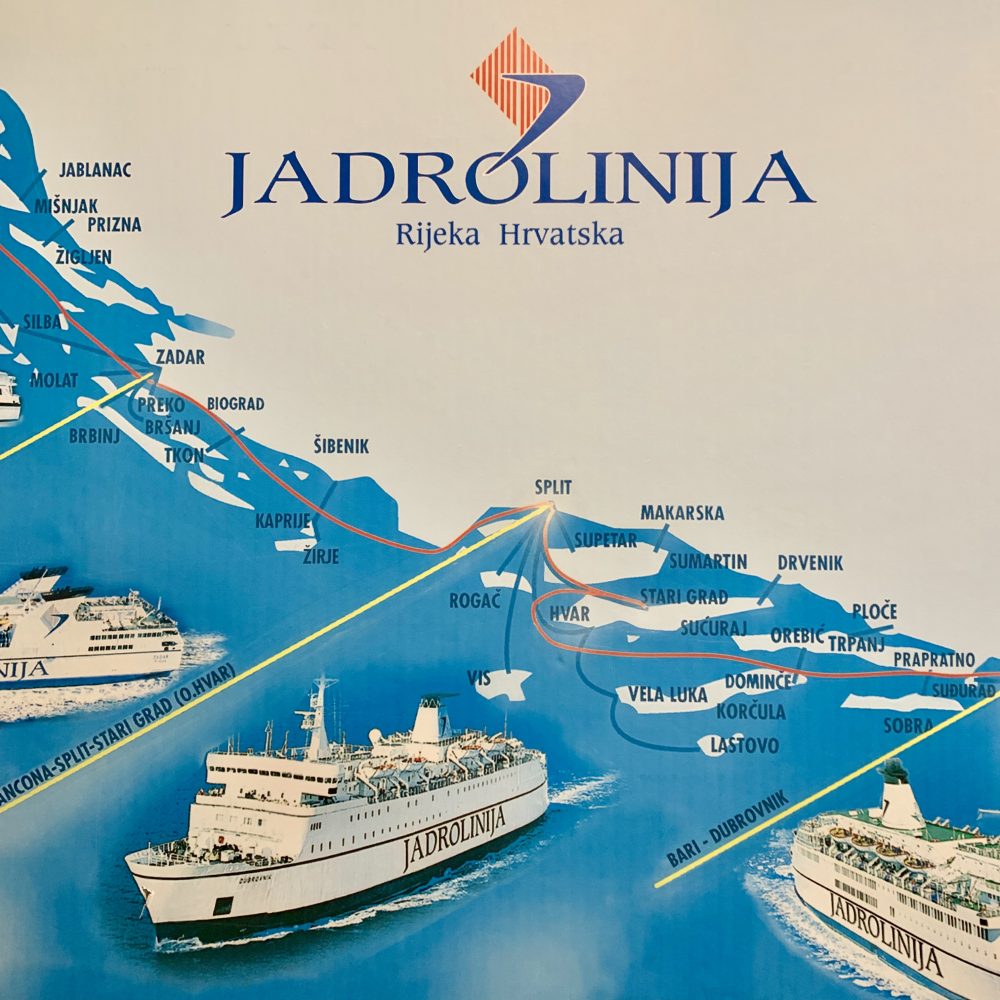
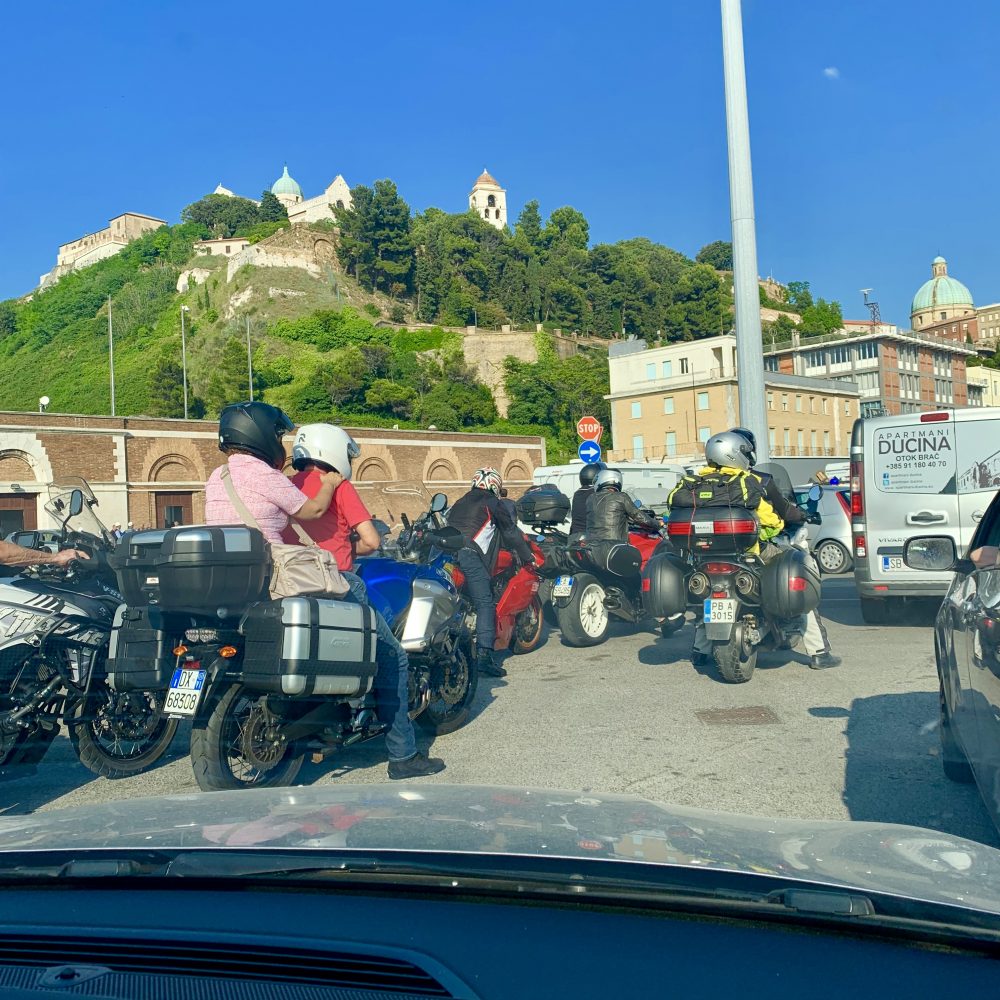
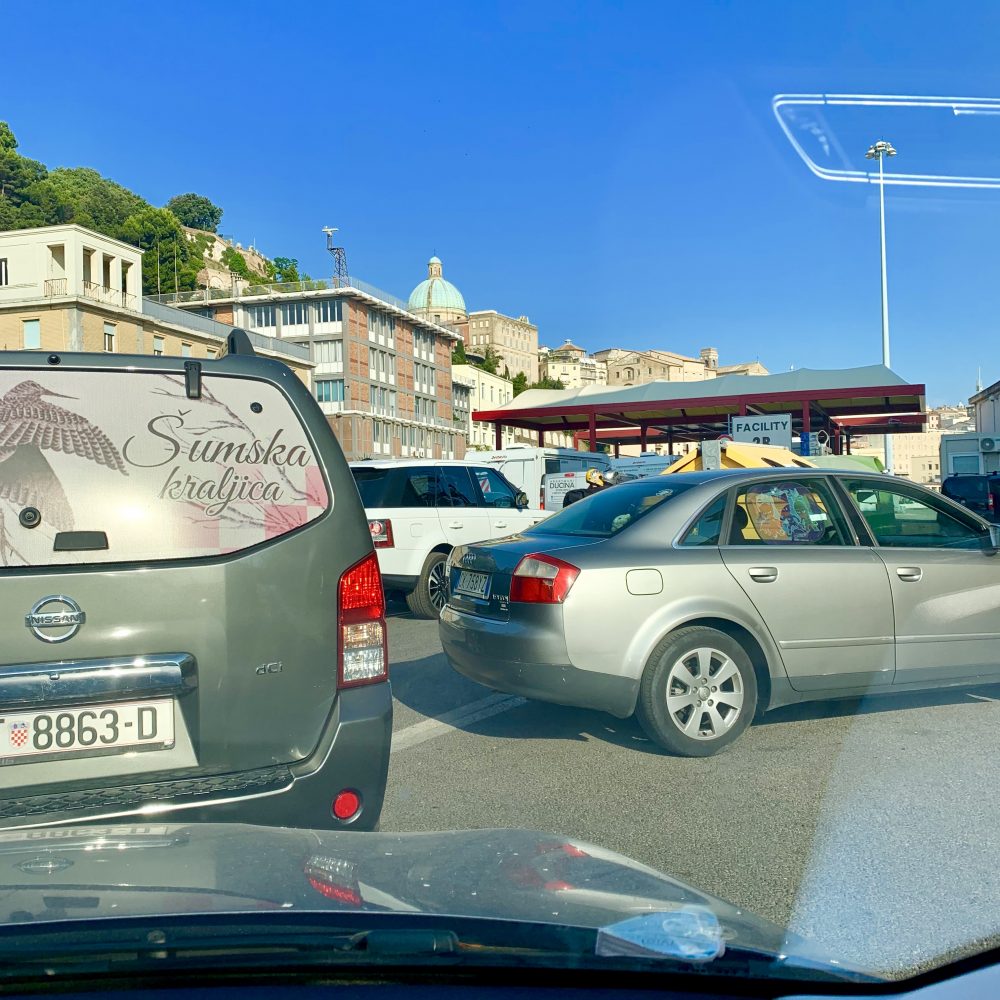
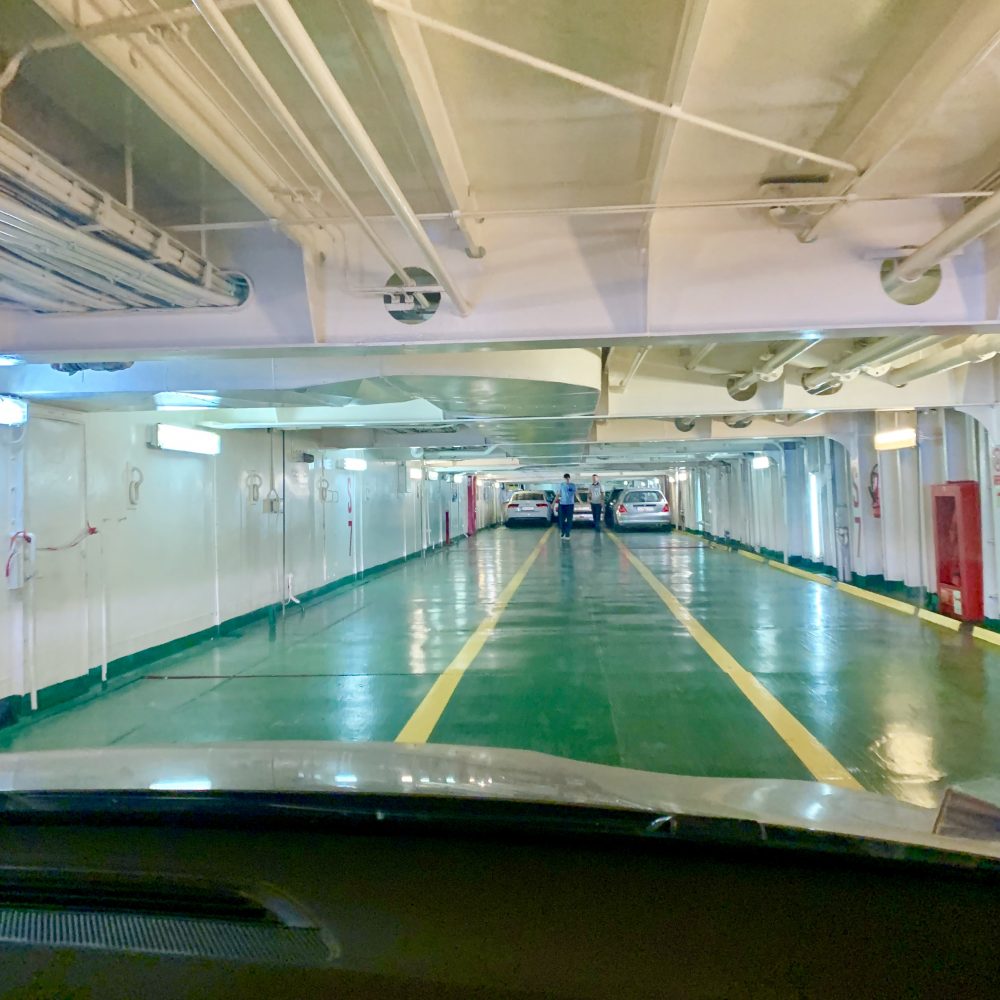
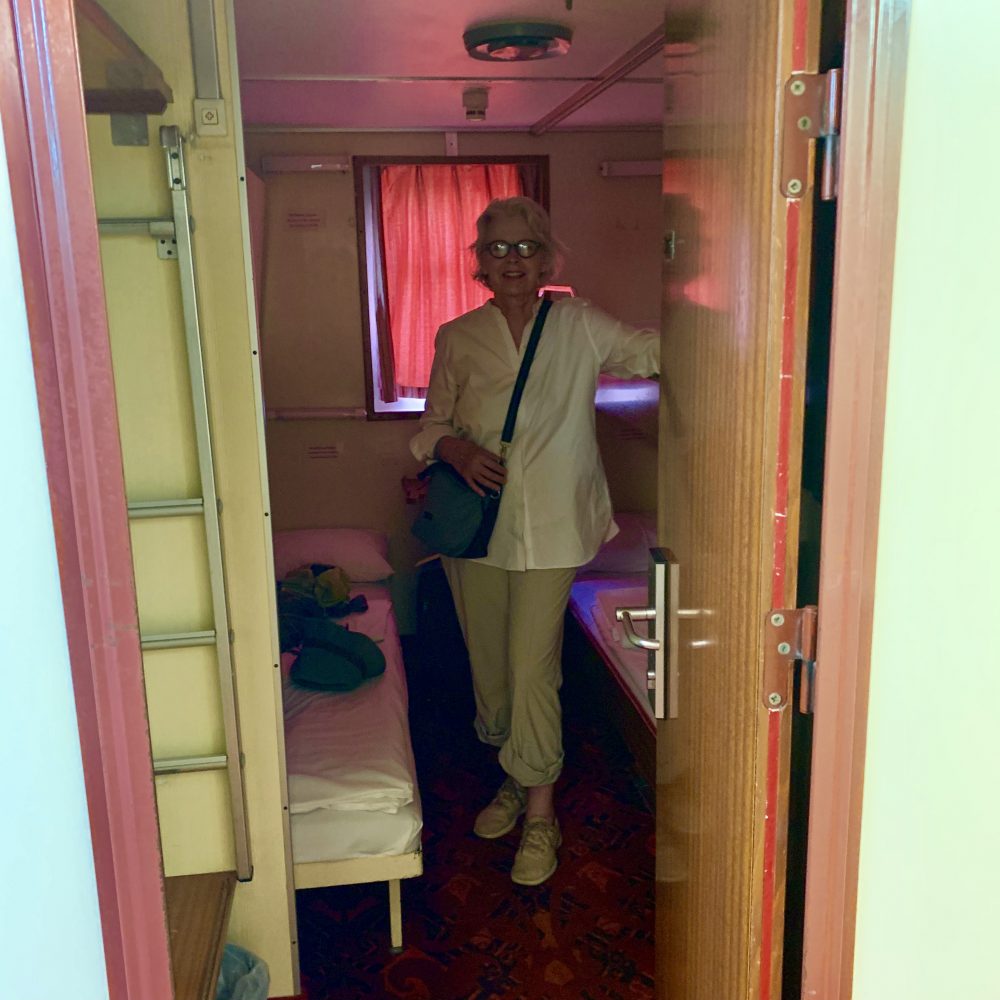
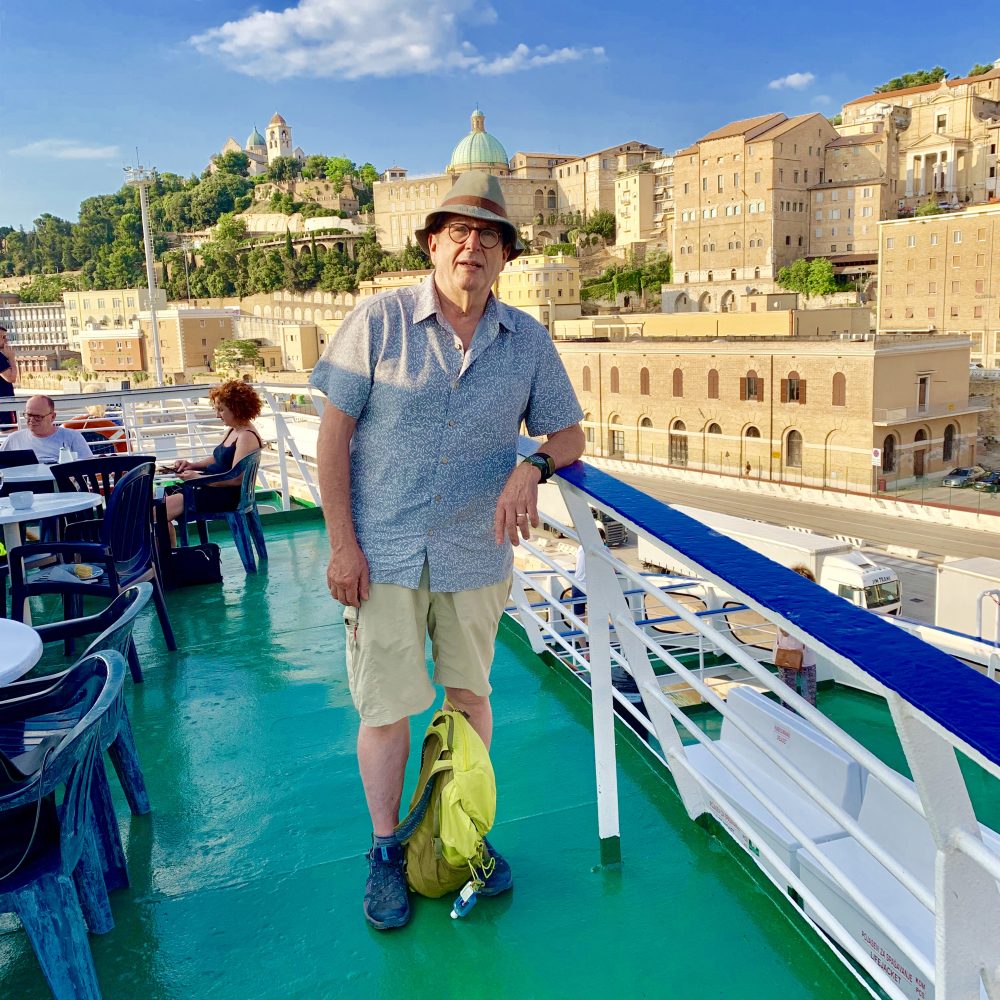
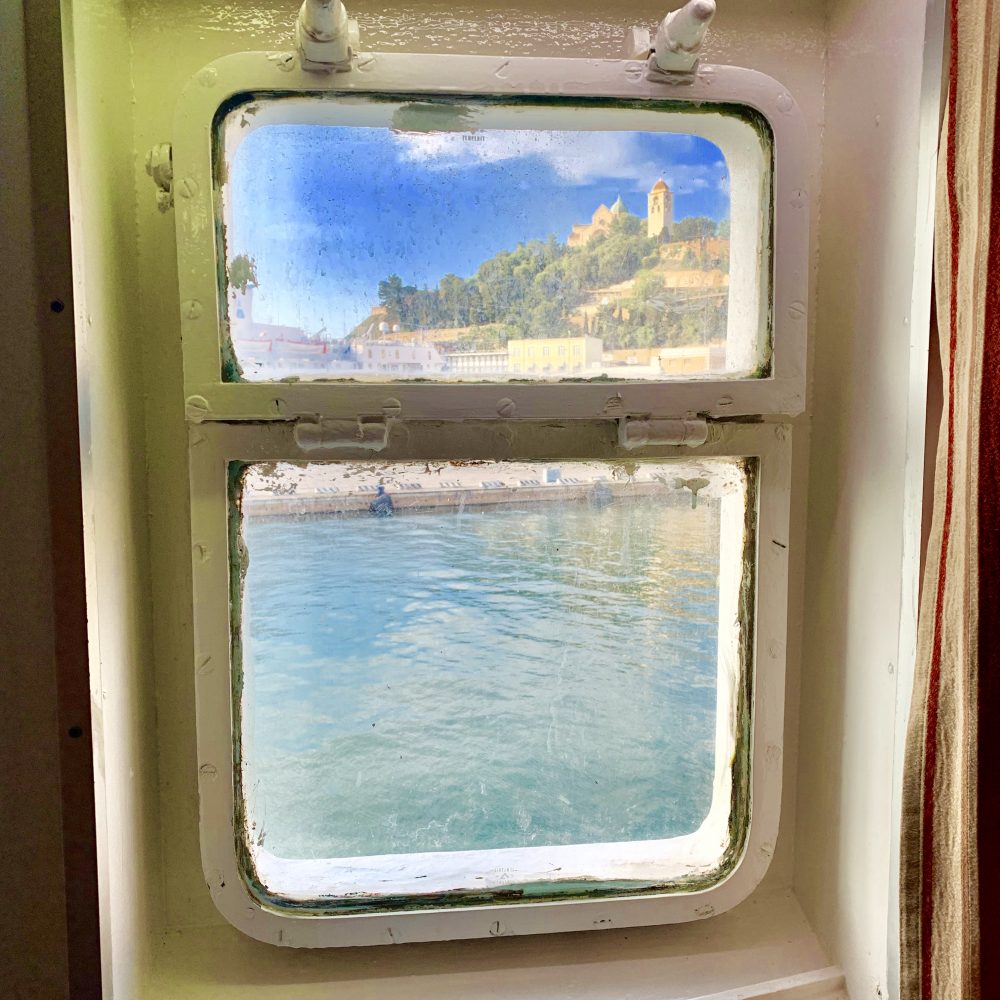

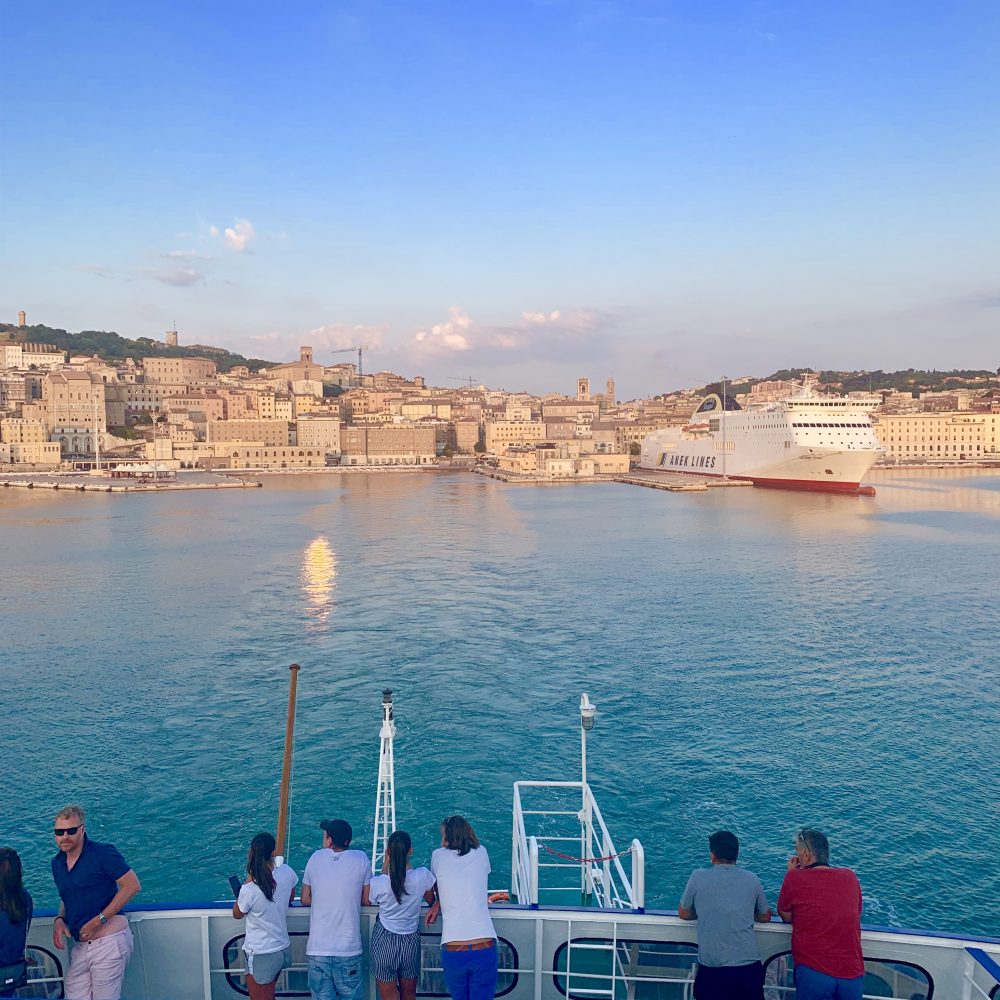
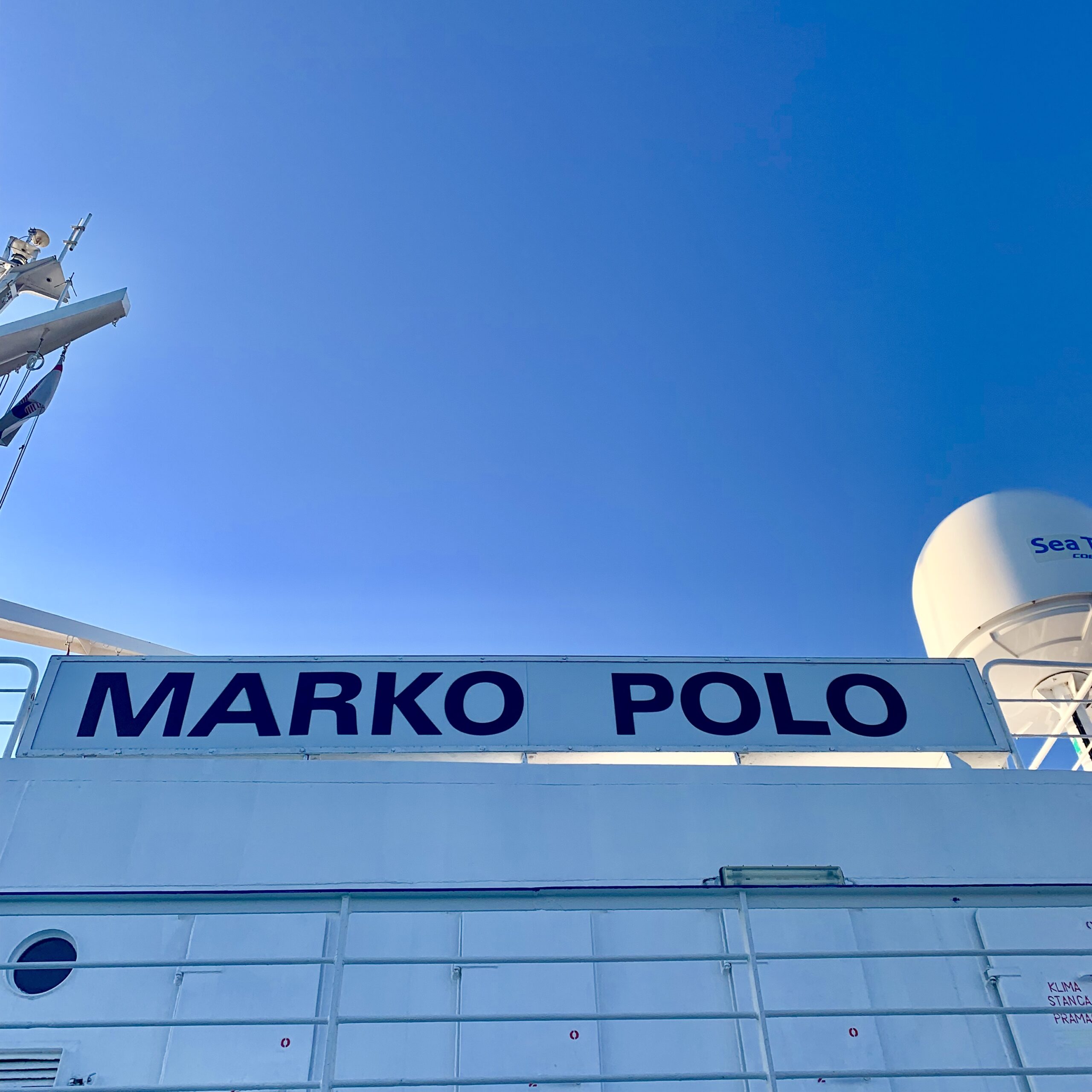
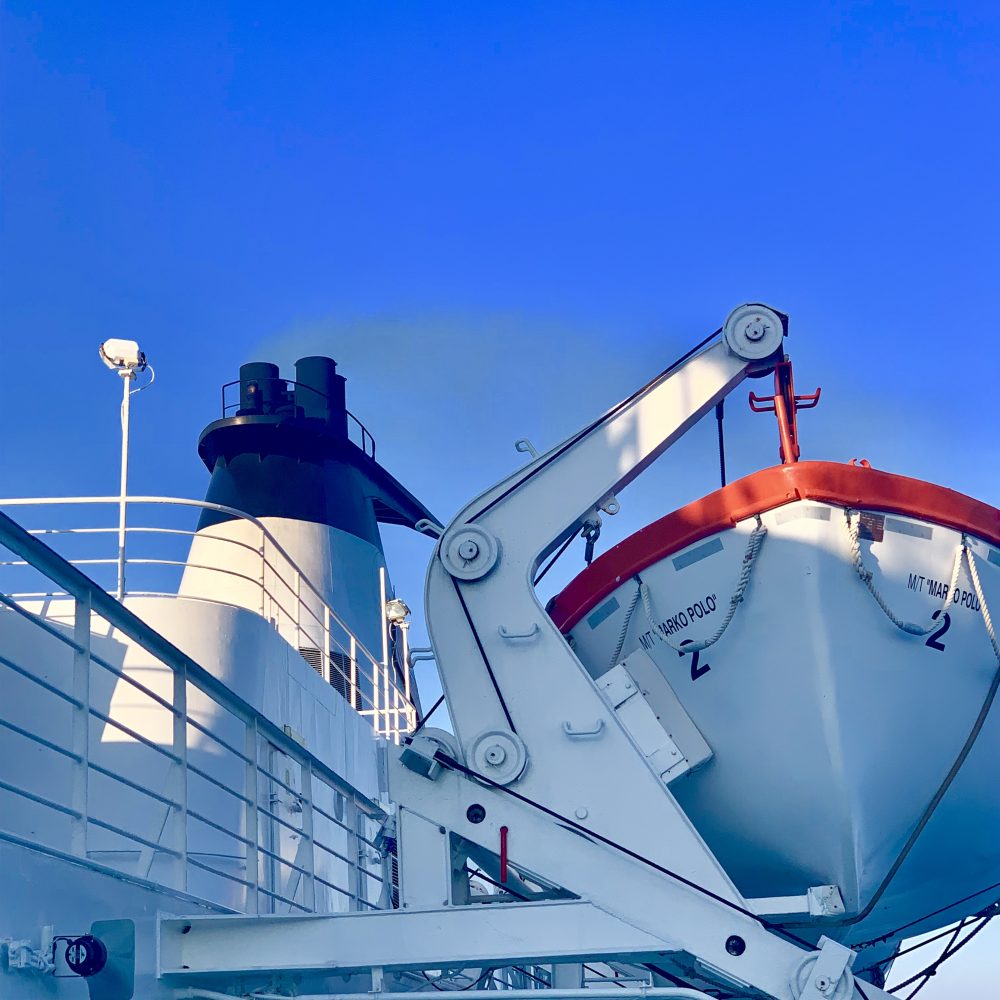
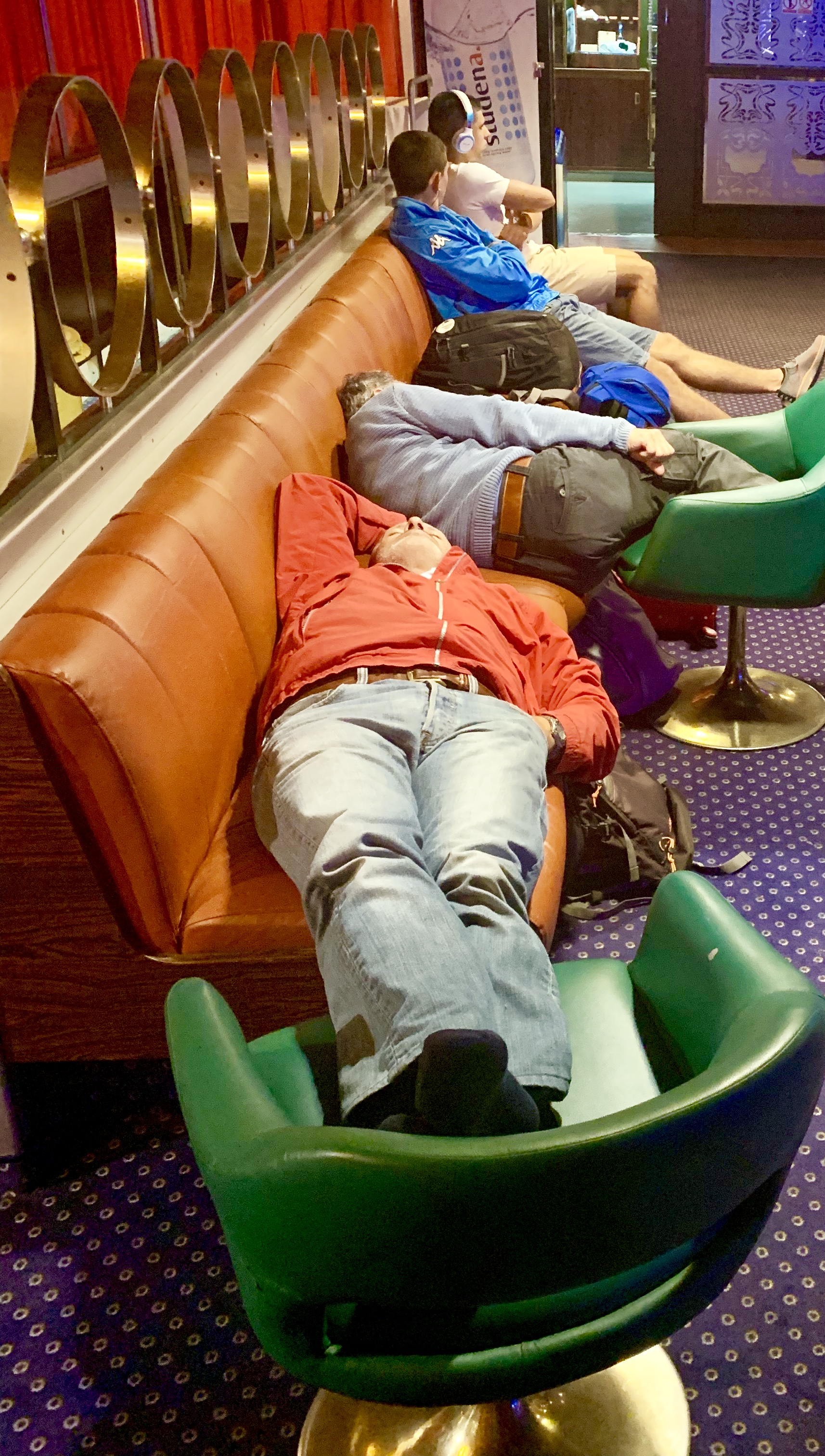
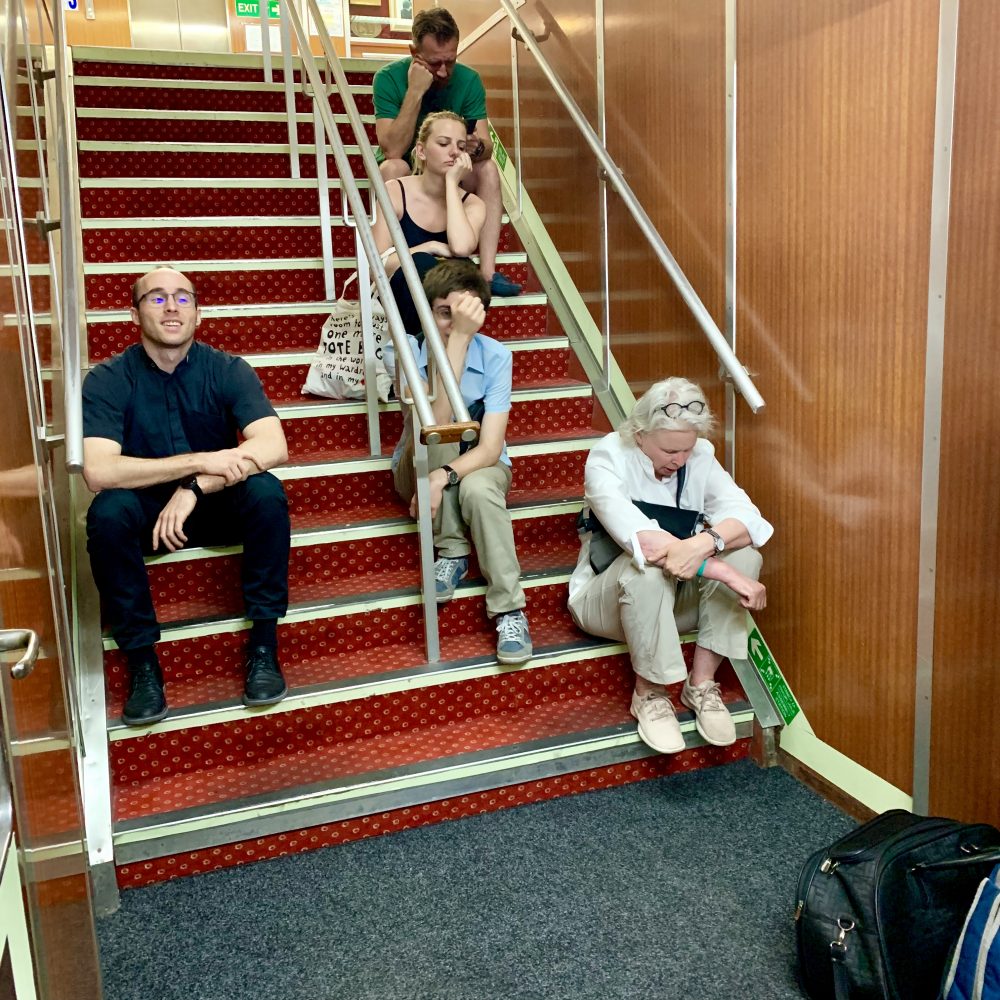
Split to Dubrovnik
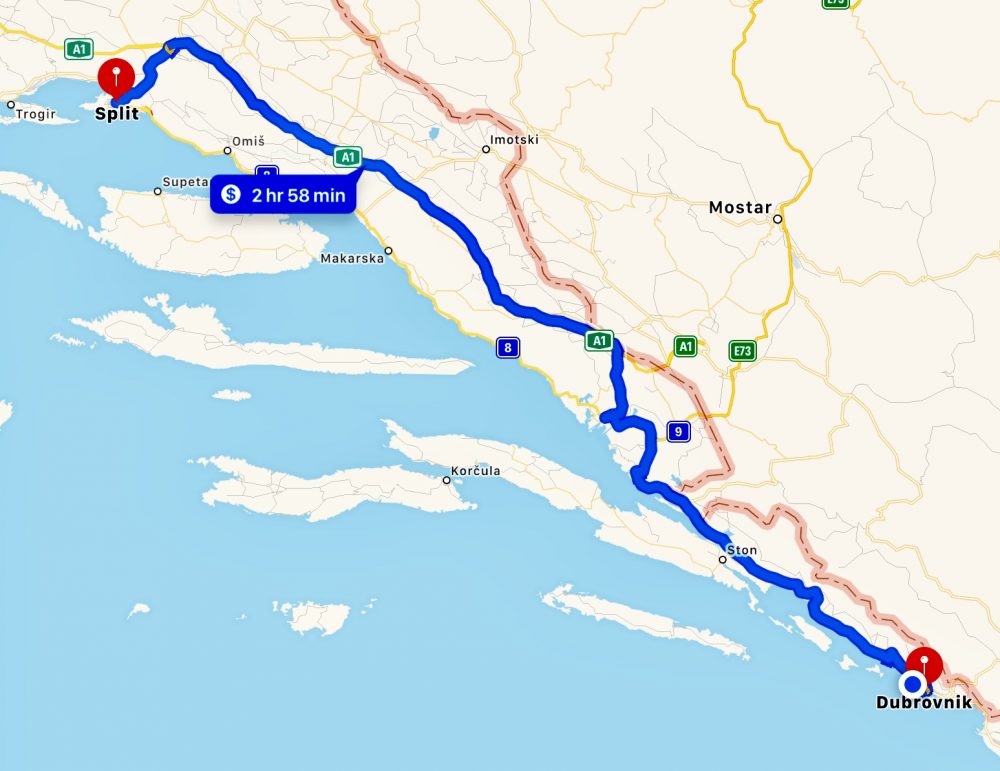
After getting off the ferry in Split, the four-hour drive along the Dalmatian coast to Dubrovnik required three passport checks—one when we got off the boat and when we crossed into and out of Bosnia Herzegovina.
Our major takeaway from the drive is that there are vast undeveloped areas comprised of rolling hills and an occasional mountain. At times, mountains jut out of the Adriatic Ocean surrounded by water. It reminds us of Eastern Oregon combined with some of the eastern Sierras except that on occasion it has the Adriatic Sea nearby. Overall, the vegetation appears stunted perhaps due to lack of soil and low rainfall. But most of the hills along the coast are green. This changes when we get to Dubrovnik.
When land meets water and with access to the shoreline, there is extensive residential and hotel development that cascades many stories down to the water where it meets boat docks, canopied terraces, and some beaches. Sort of an Orange County development pattern of the late 1970s early 1980s—clean and crisp without a lot of detail. The color palette is a basic off white with red tile roofs. Occasionally you see stone.
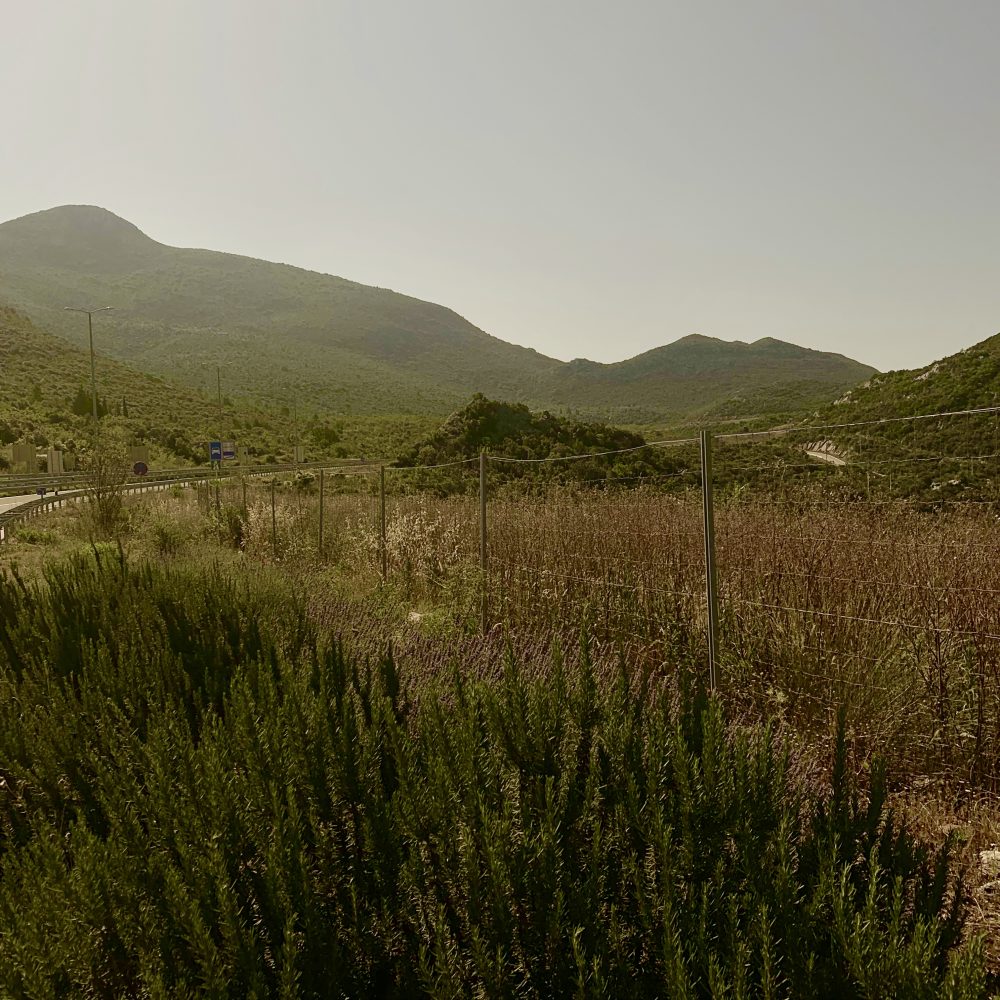
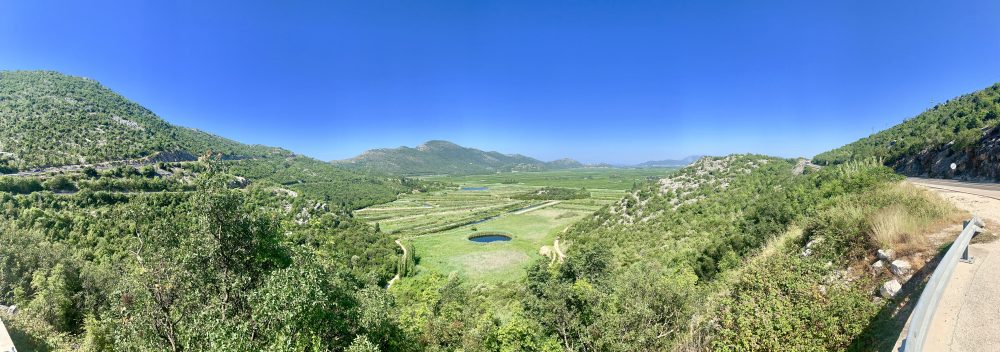
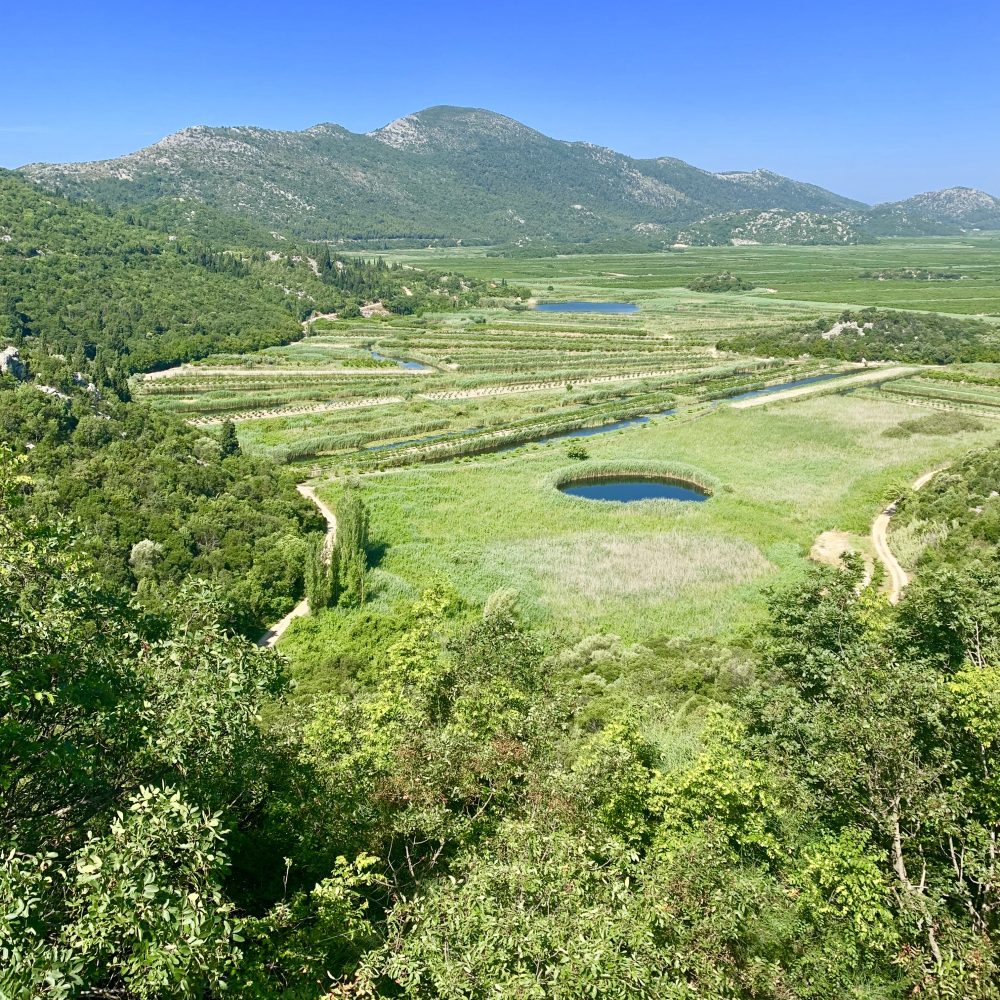
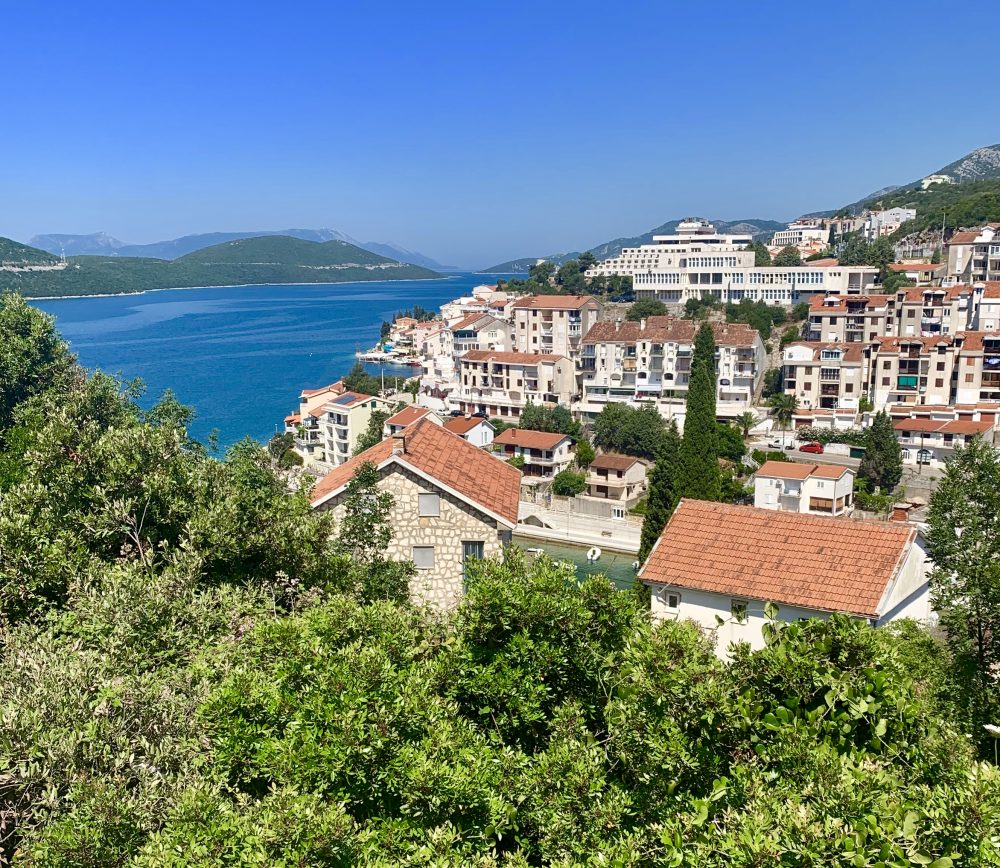
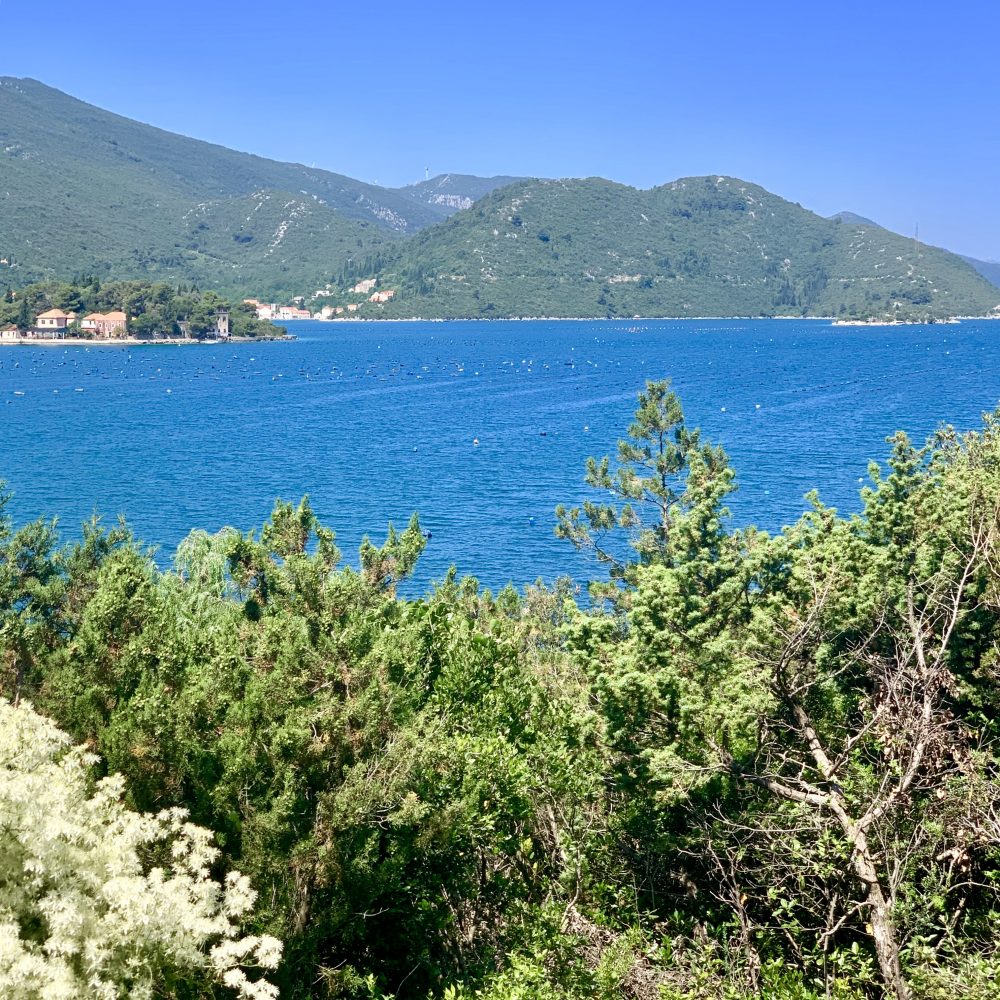
Dubrovnik
We got to our Airbnb apartment early. It was well outside the historic walled city in a complex of modern five-story residential buildings with lots of trees. Very quiet. Grocery store nearby. Big beach scene a short walk away.
Before tackling the famed old city, we decided to walk along the beaches around the peninsula. This area is more than just dotted with hotels. Hotels are everywhere. It seems they are owned by Valamar because that name prefaces every Grand, President, and Sole hotel in the area. The large hotels are very modern but in a 1970s sort of way—not much detail or intimate scale. Turns out that many of these hotels were built by the Yugoslav communist government back in the day. Every inch of beach and accessible rock is occupied by swimmers or their beach towels. The water here turns from aqua green to deep blues, all crystal clear.
We strolled the promenade that went past numerous restaurants and gelaterias. All were craftily sited in the woods or alongside the natural rock of the hillside—not overstated in their presence.
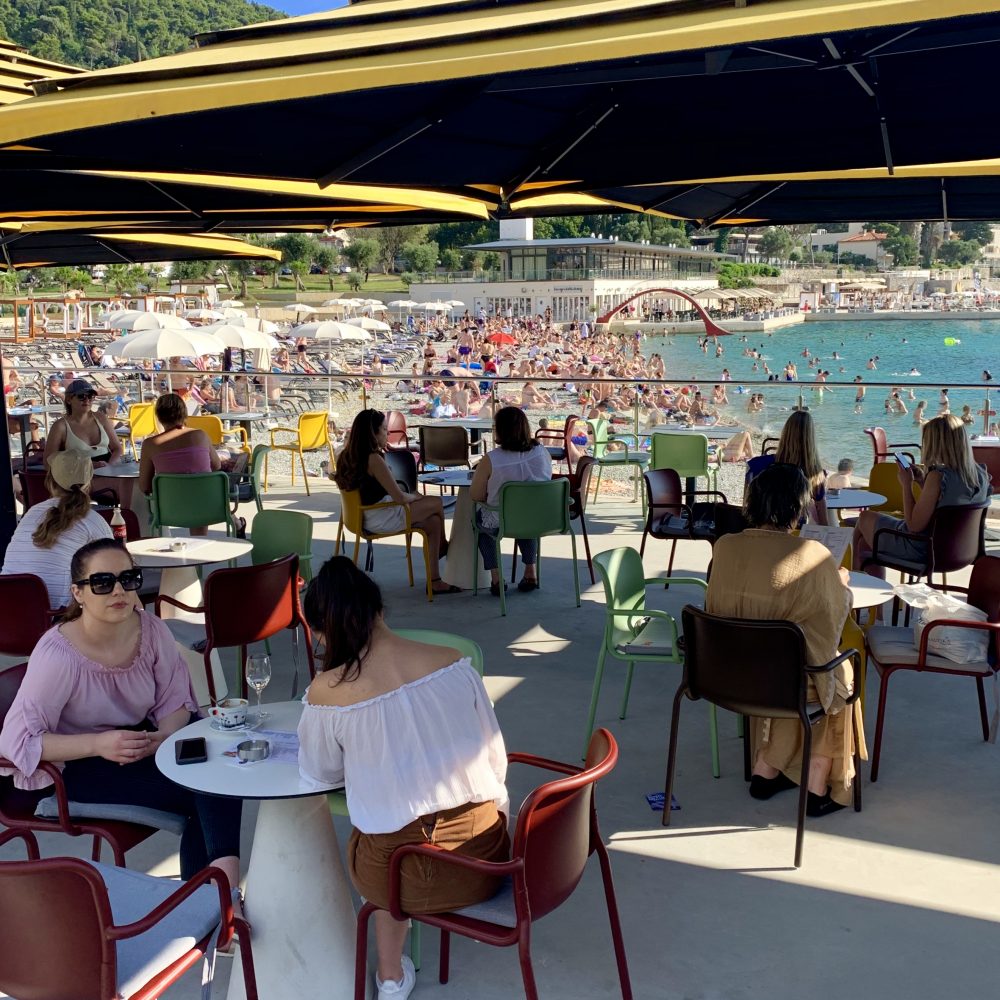
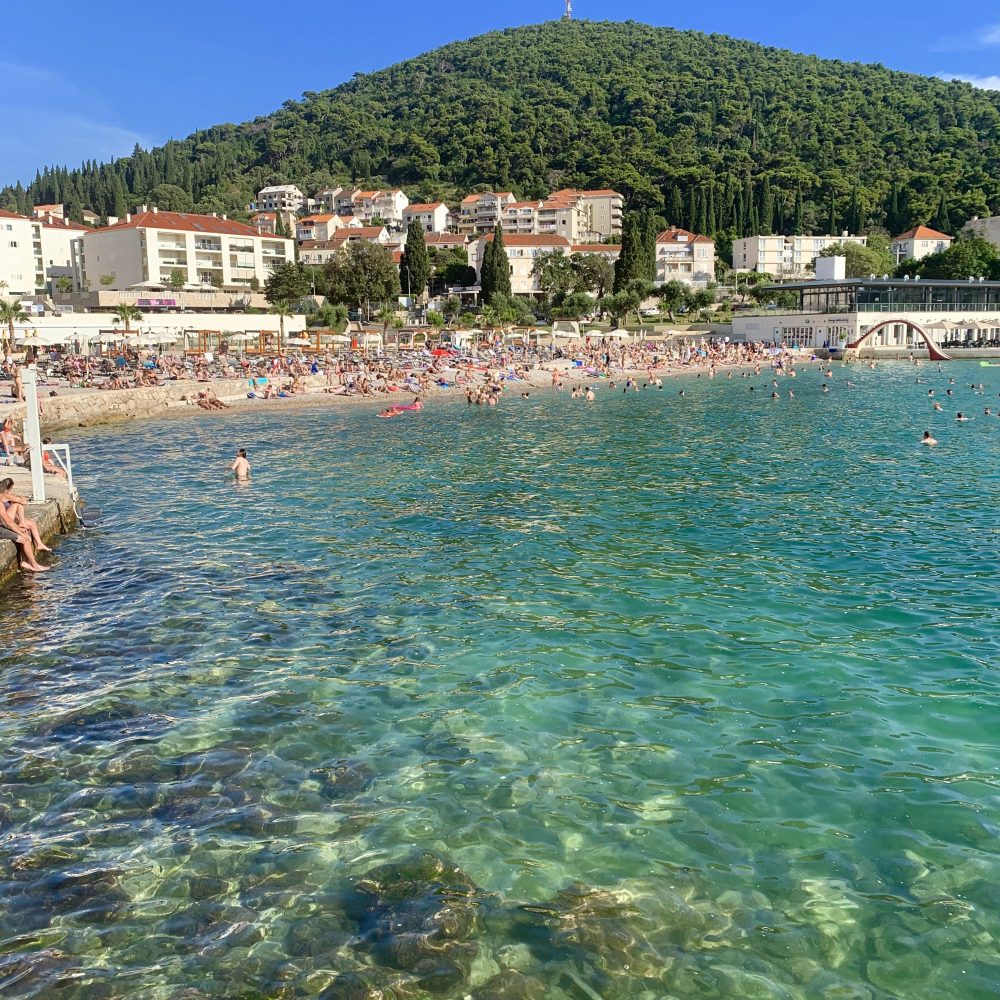
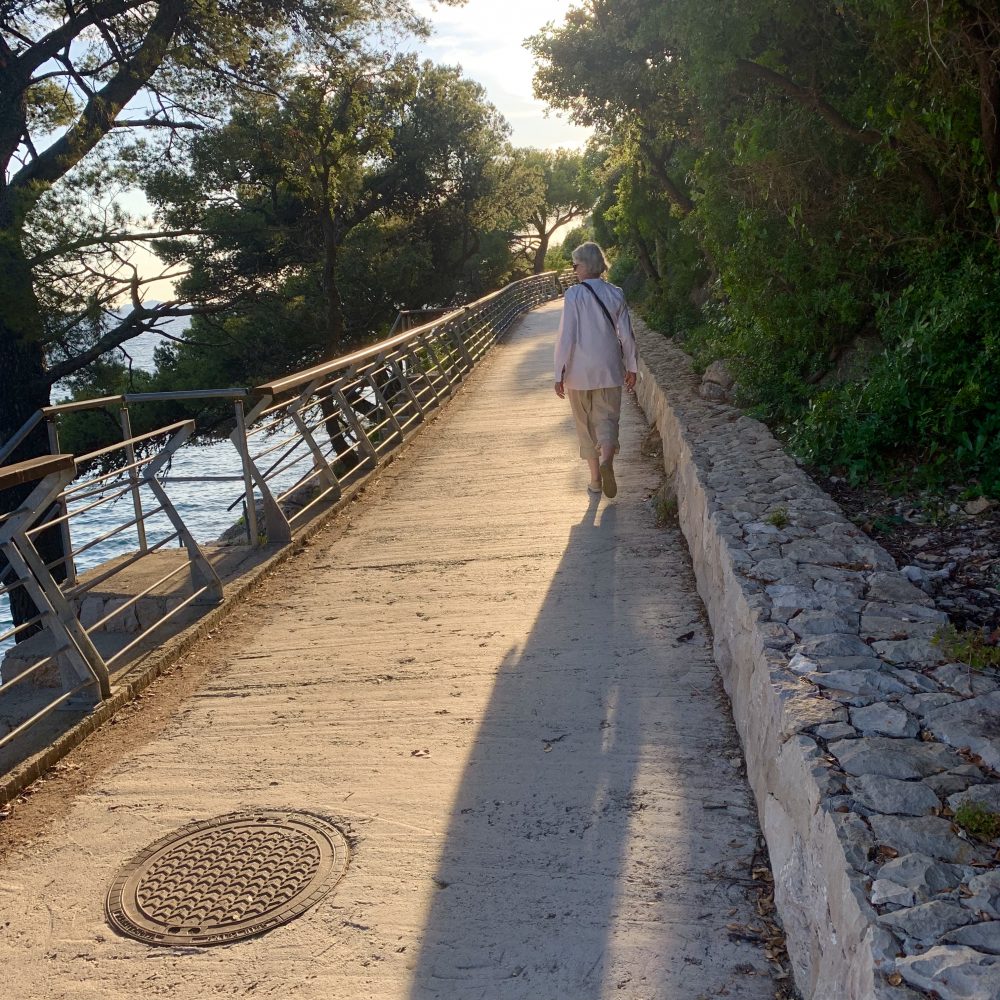
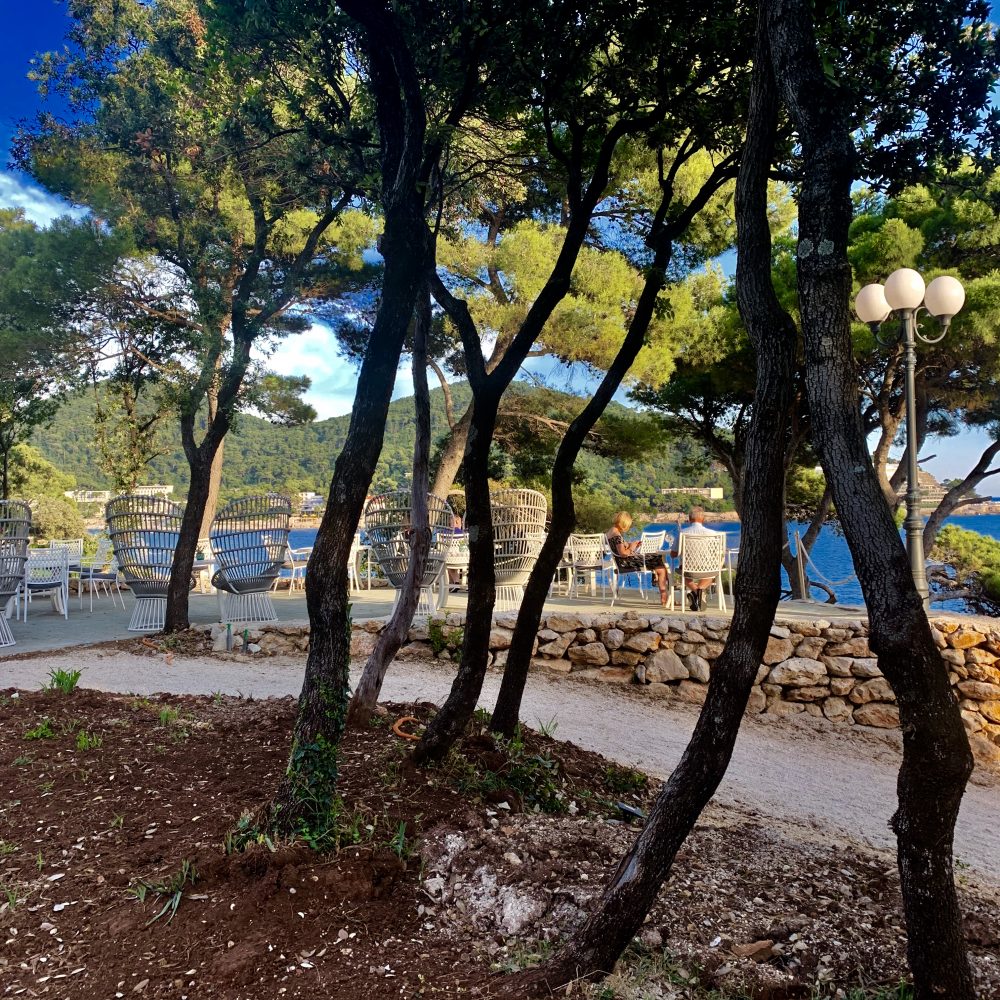
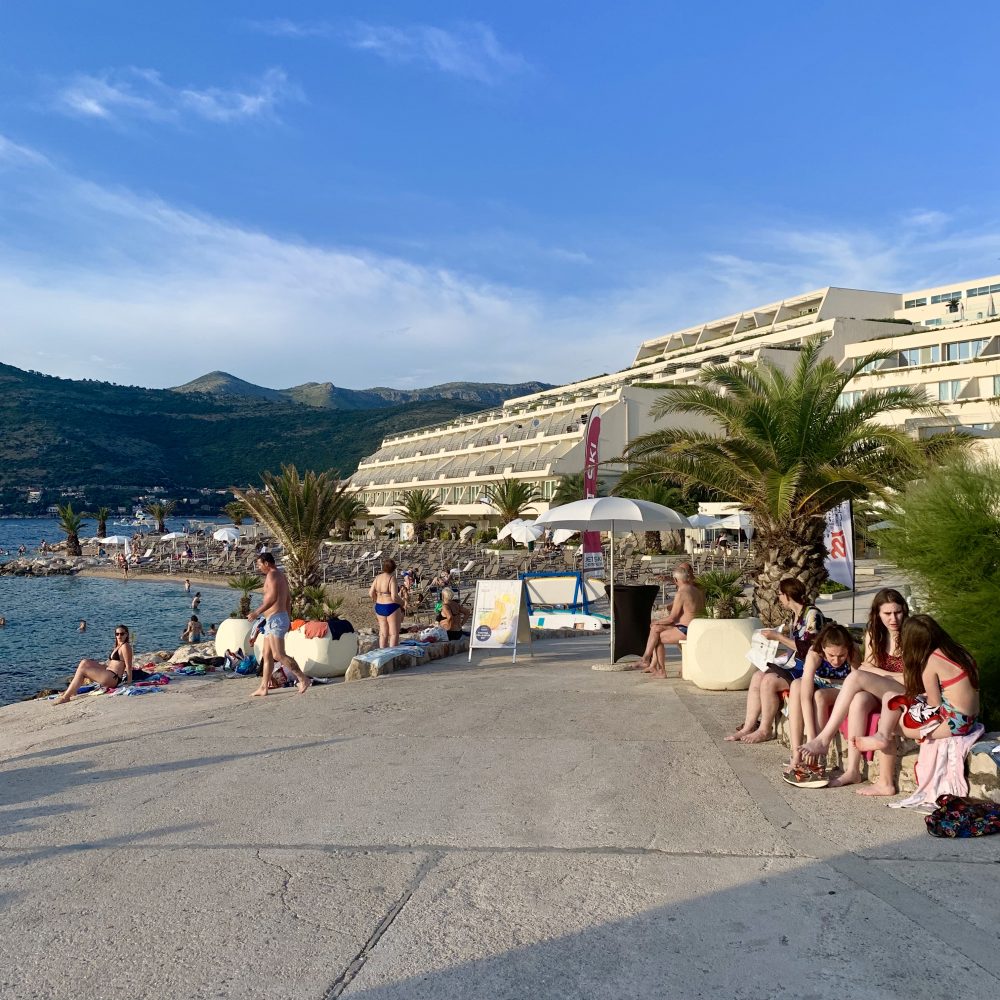
Old Walled City
This is one ready-for-the-cruise-ships place to be. We took Uber to the old city as it does not cost much more than the bus fare for two. We were dropped off at the Pile Gate, one of two main entrances to the walled city. Went past hordes of tourists in their designated lines ready for their guided tour to start.
Upon going through the narrow city entrance gate, we were stunned by the number of tourists on the main street. This short street ends at the other town gate, this one facing the water. Very narrow streets for pedestrians only run perpendicular to this street, many with steps up the steep hillside.
The city is very pristine in that every stone is laid with precision and is very clean. No graffiti. No trash. One poster revealed that the city was shelled many times during the 1990’s war, leveling some homes by direct hits and others by fire.
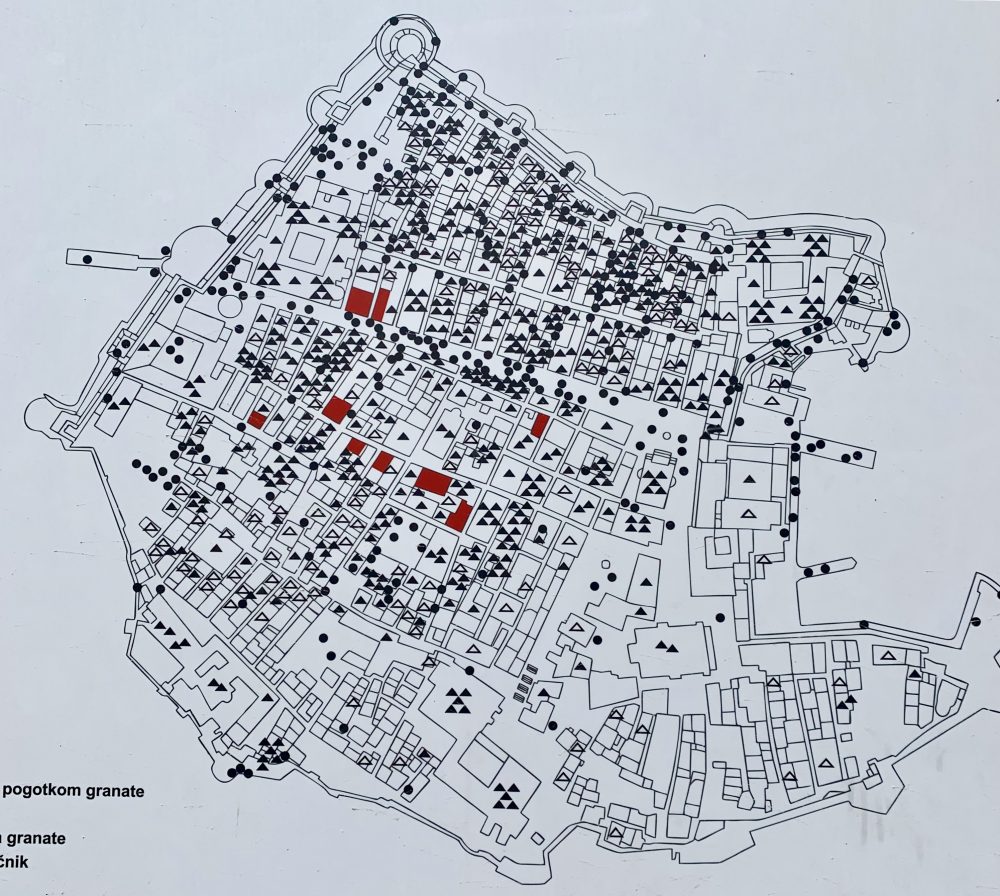
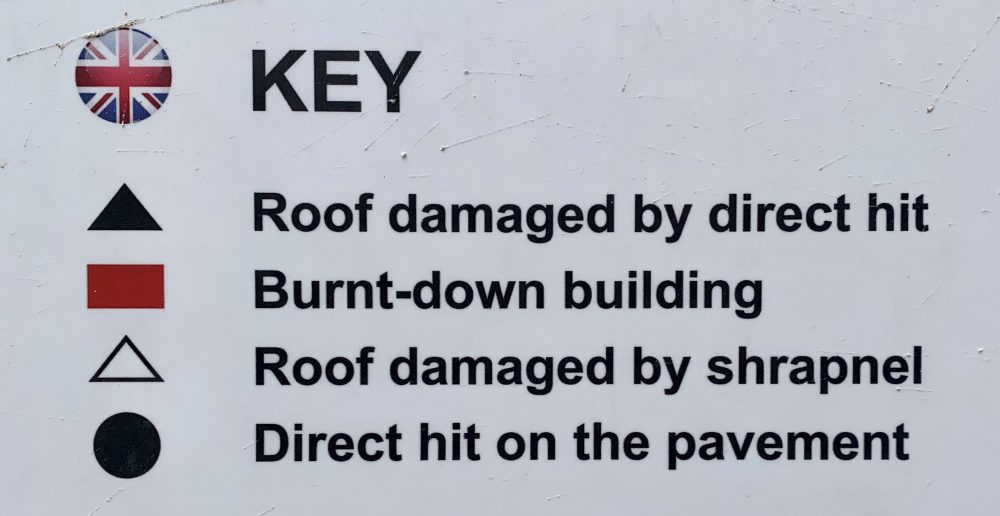
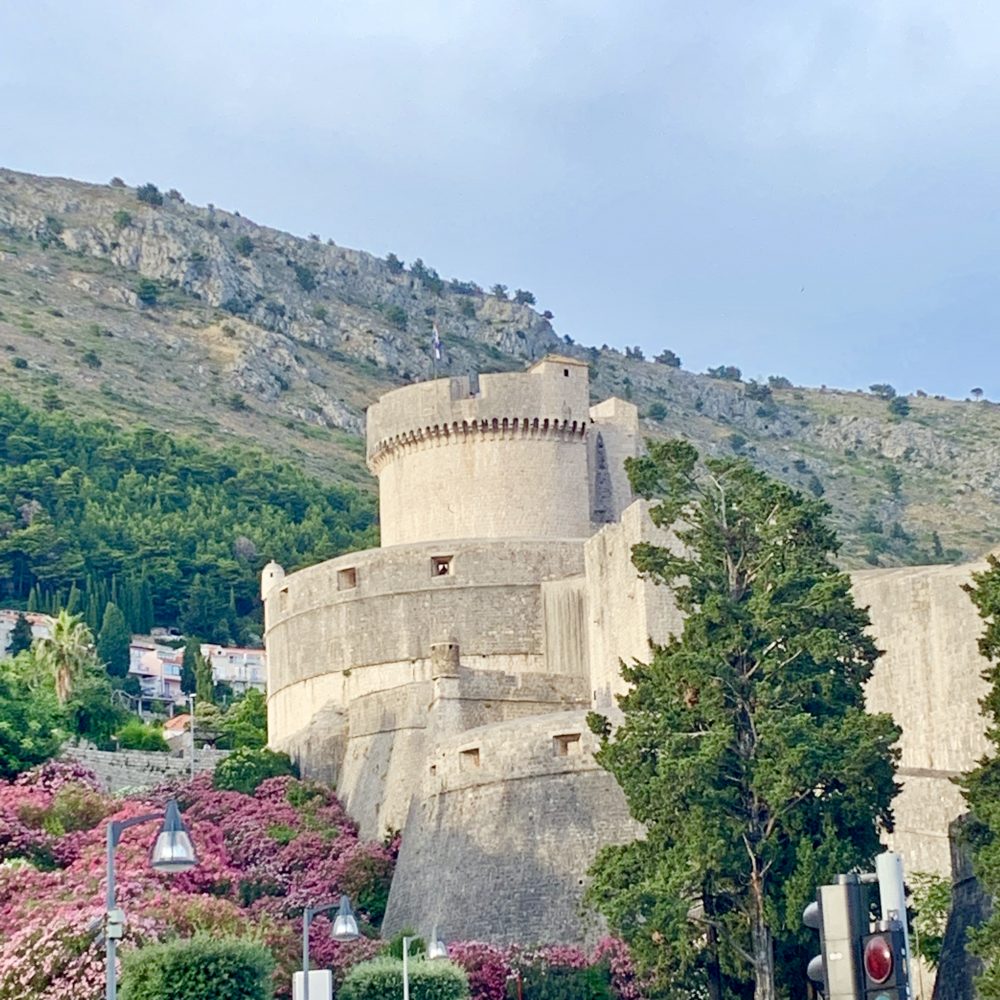
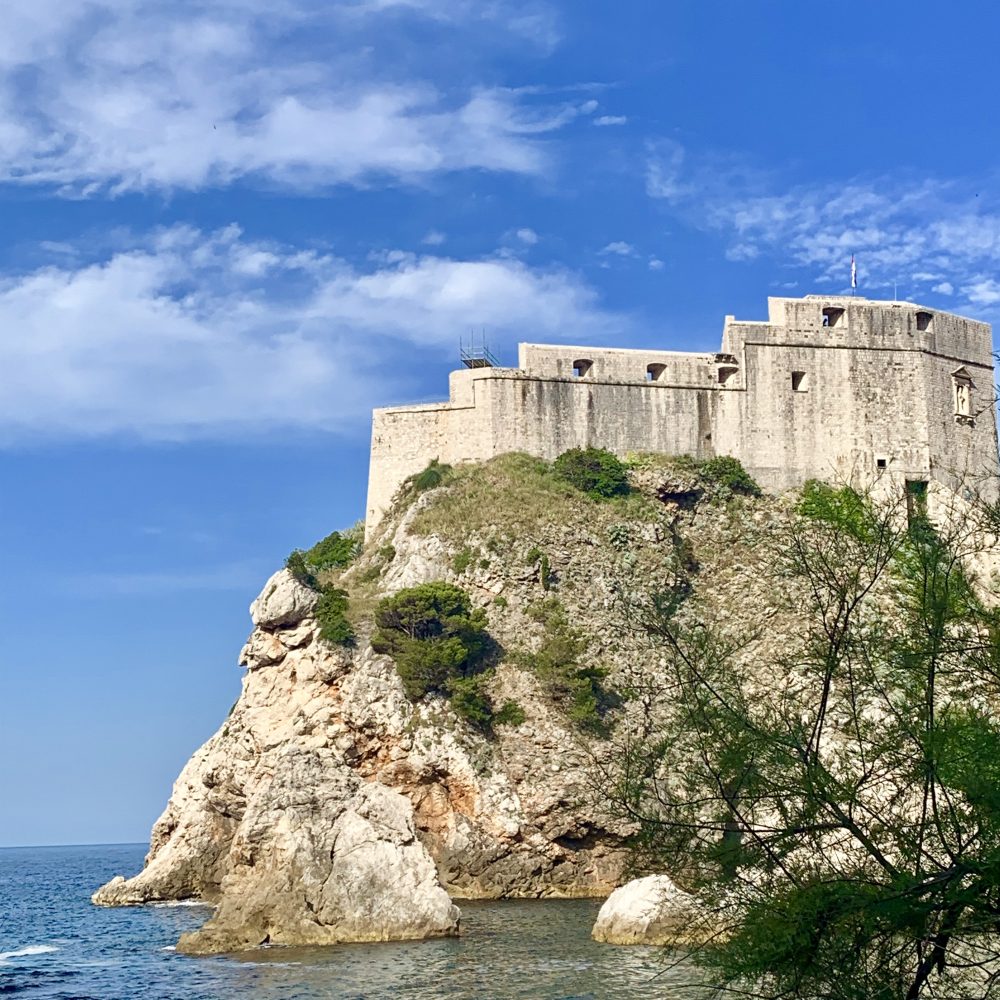
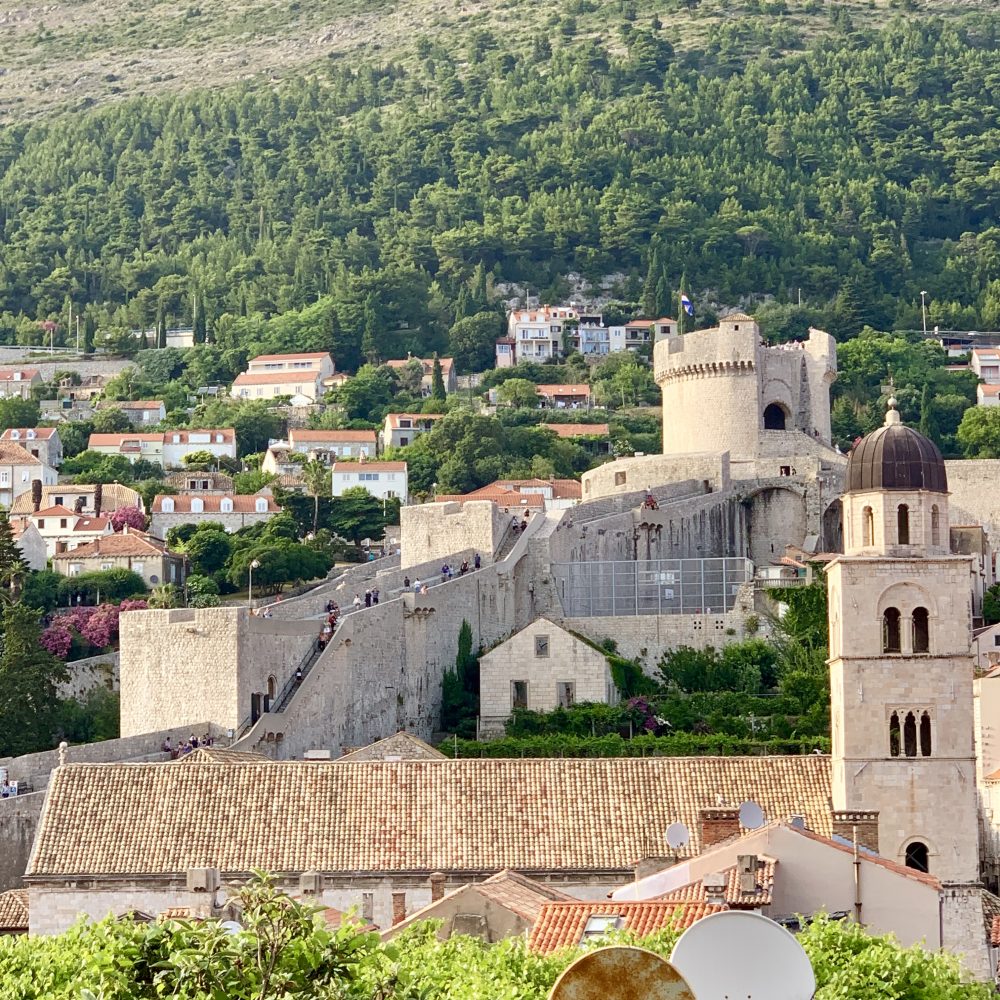
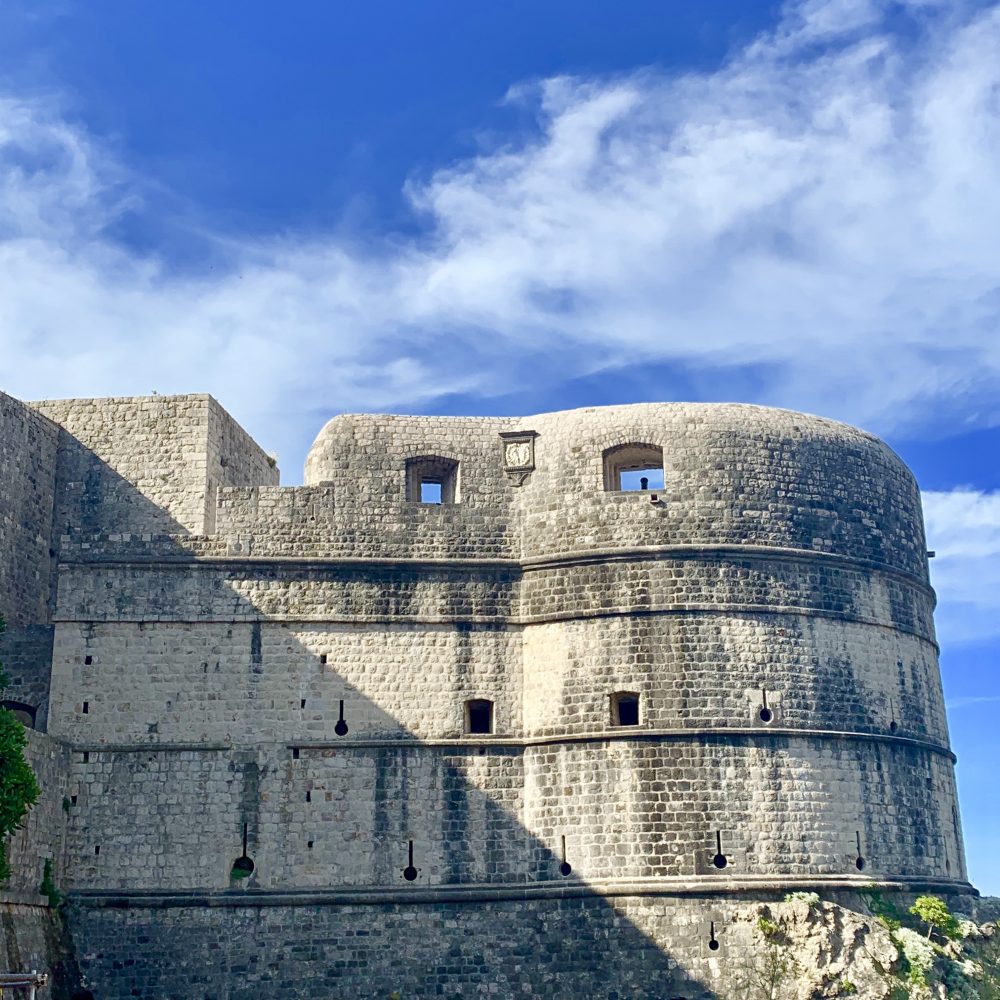
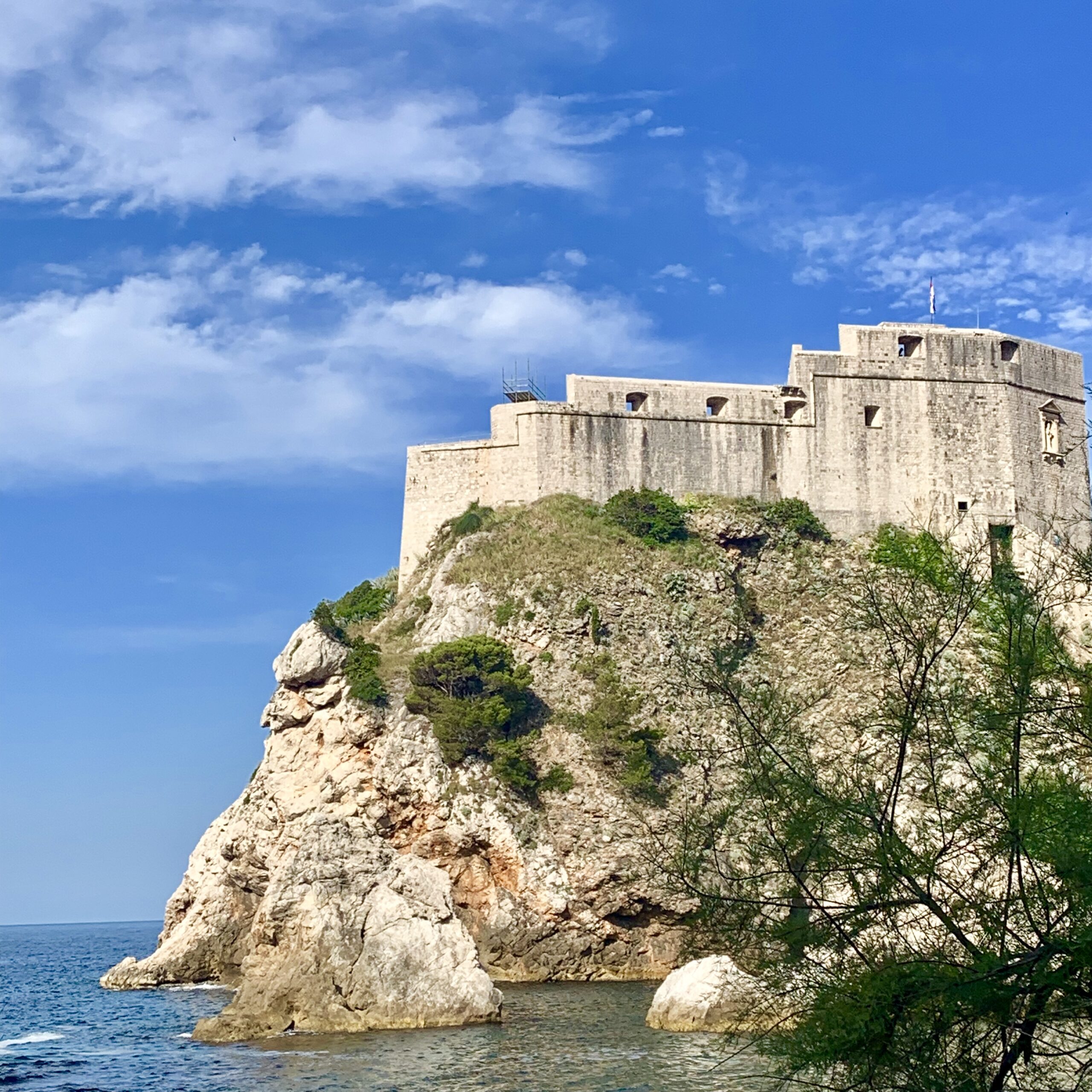
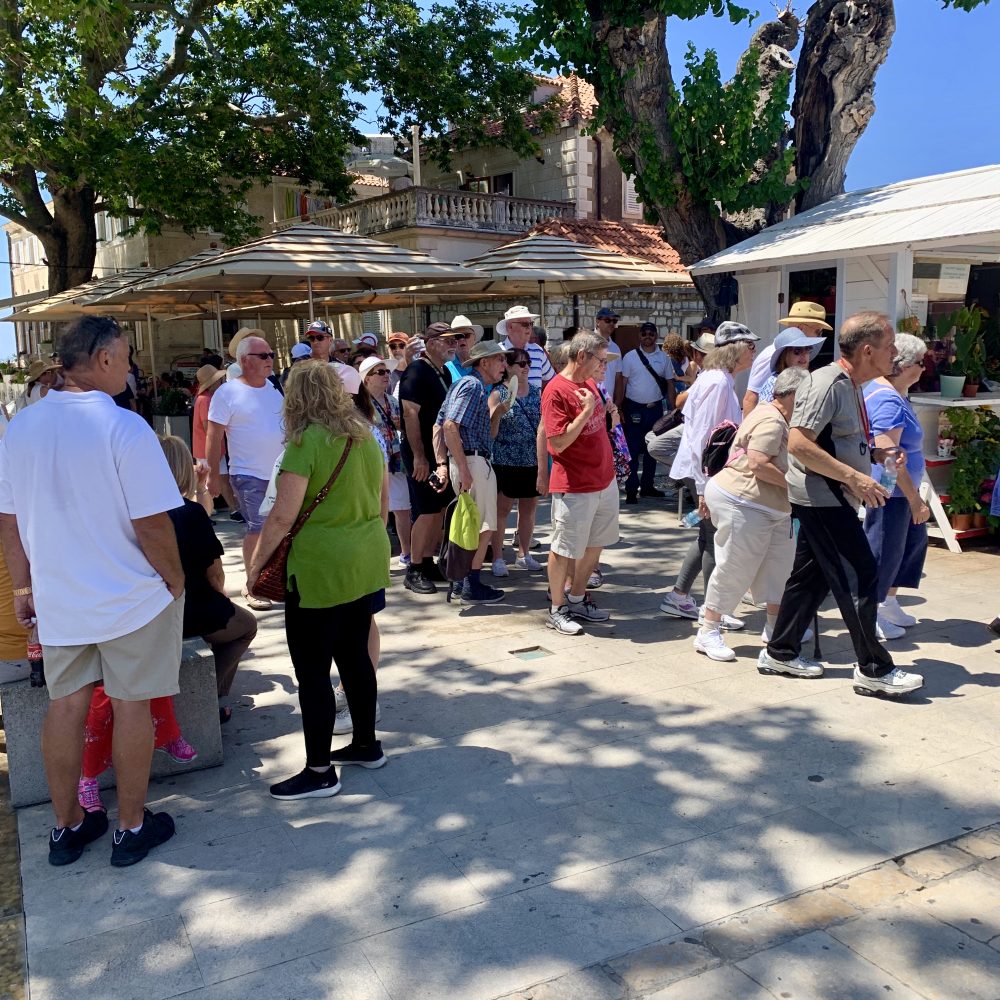
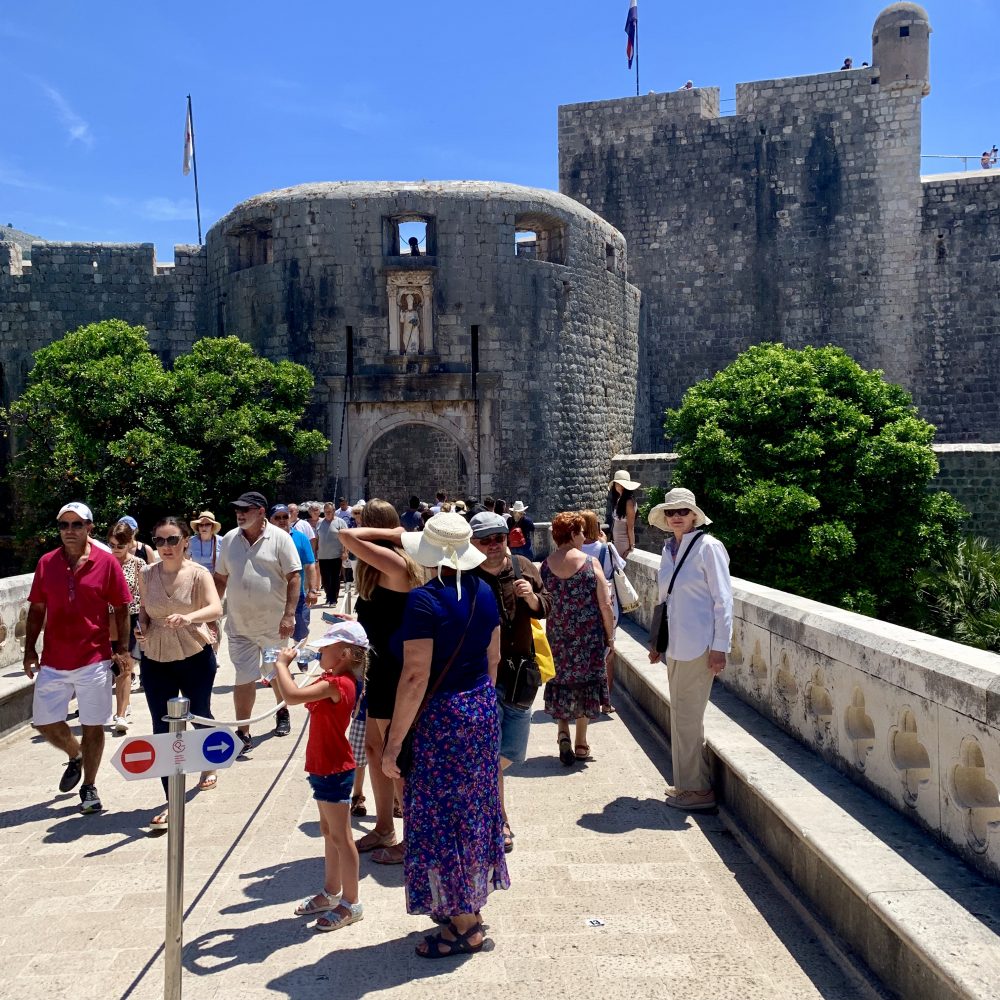
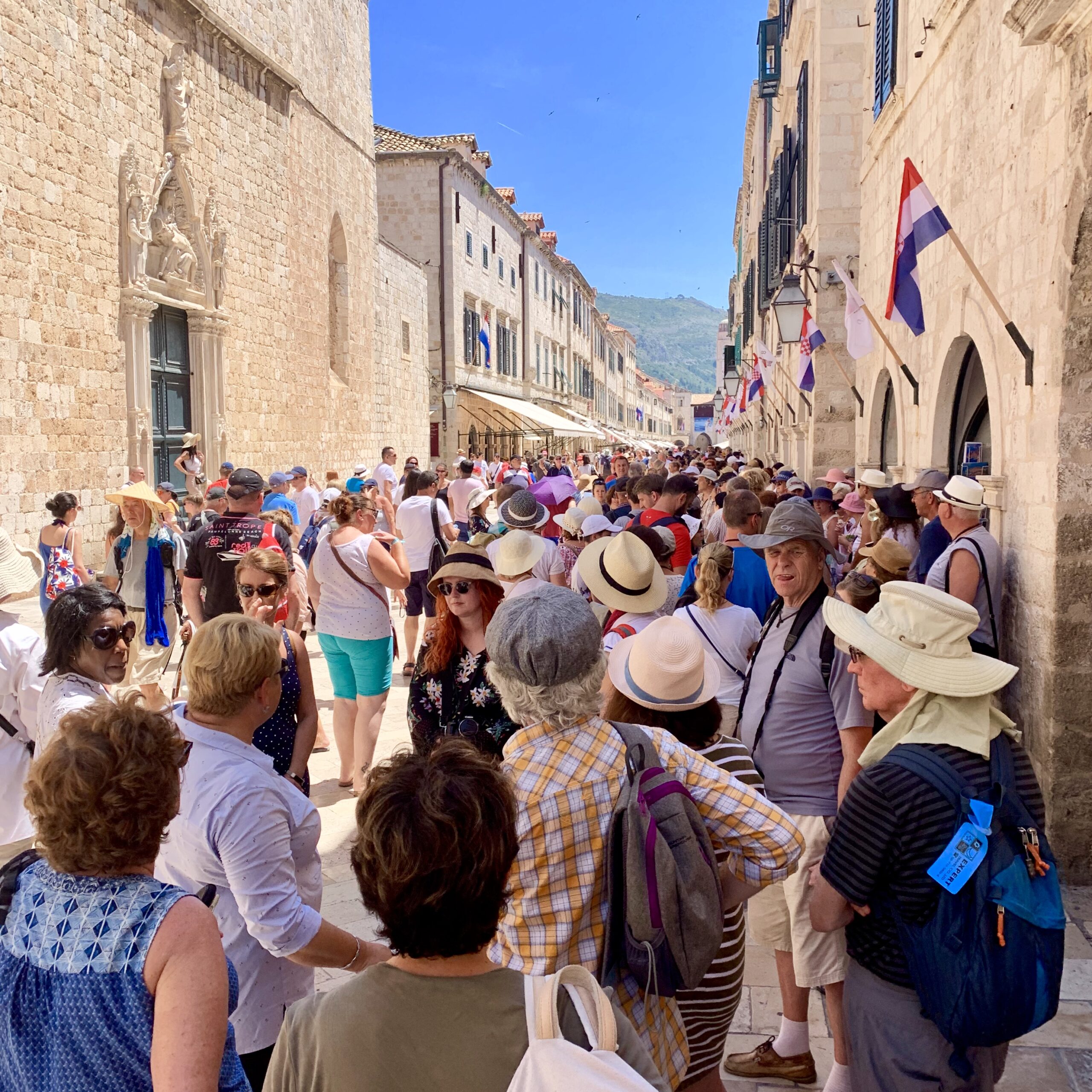
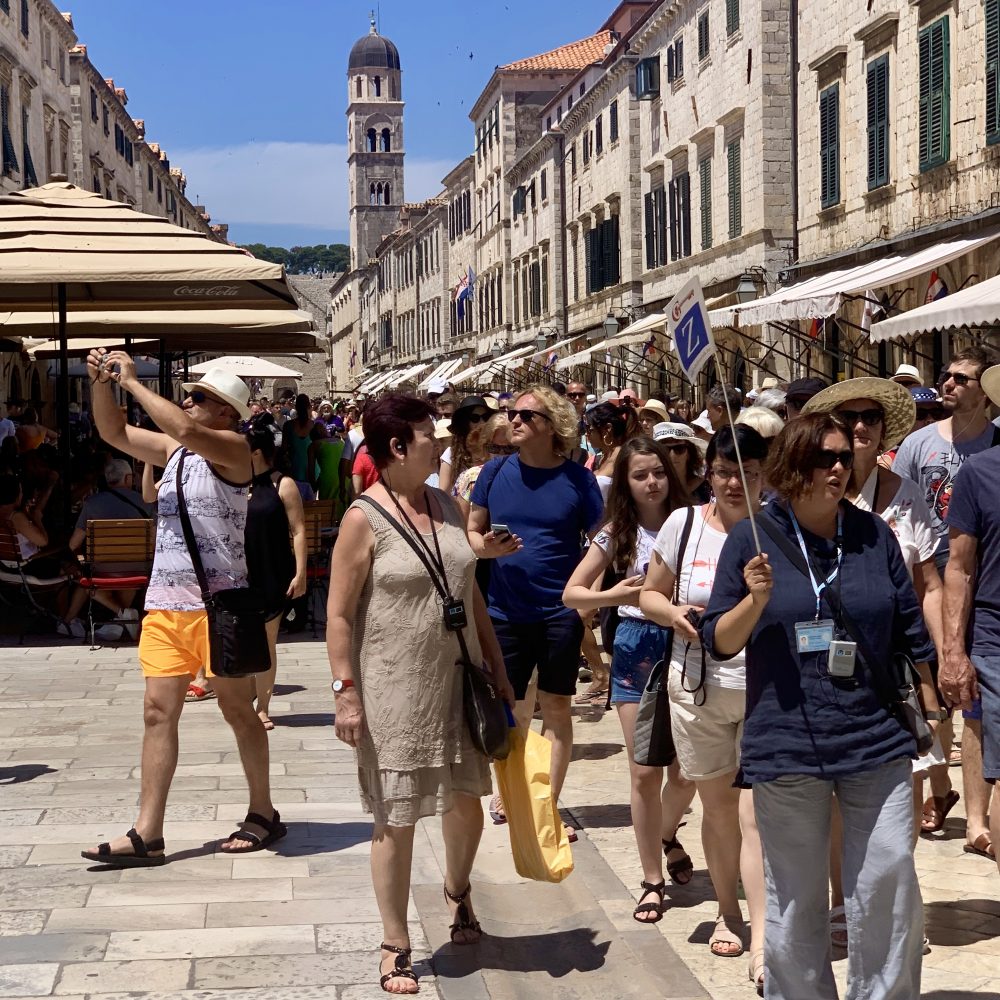
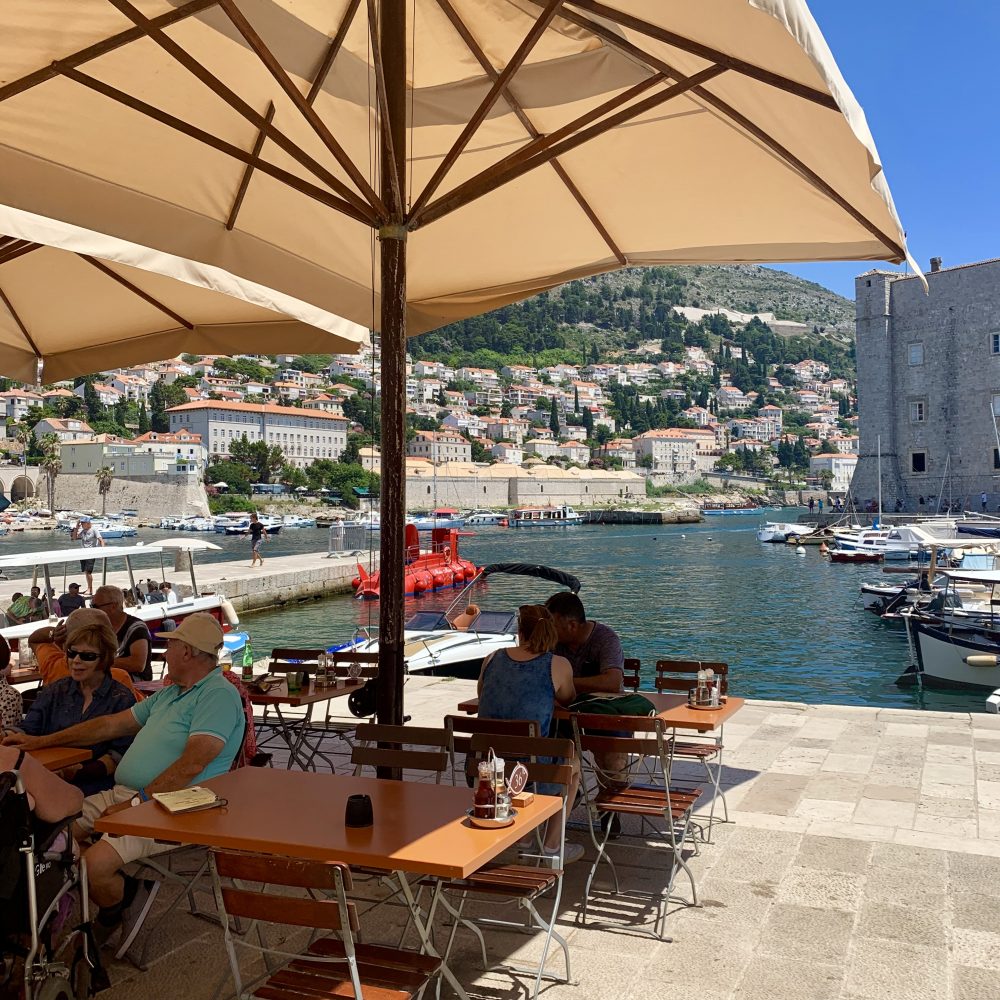
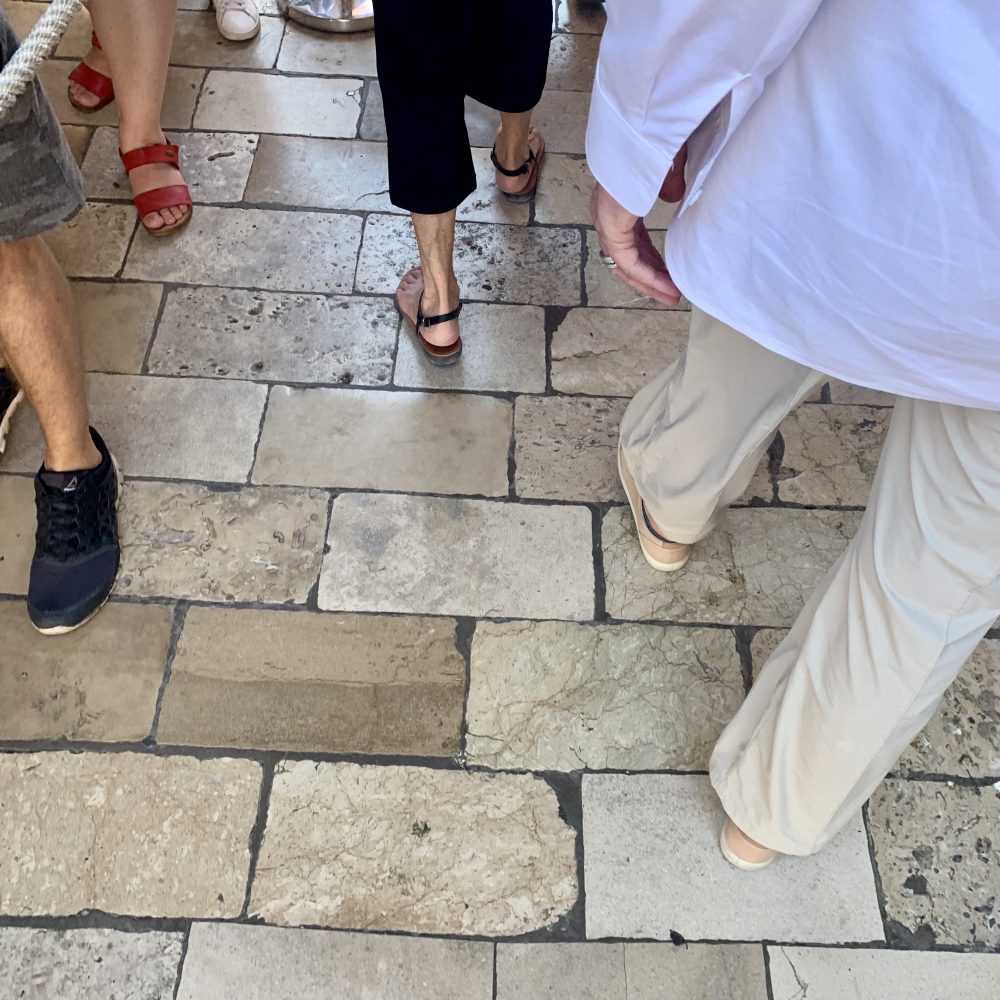
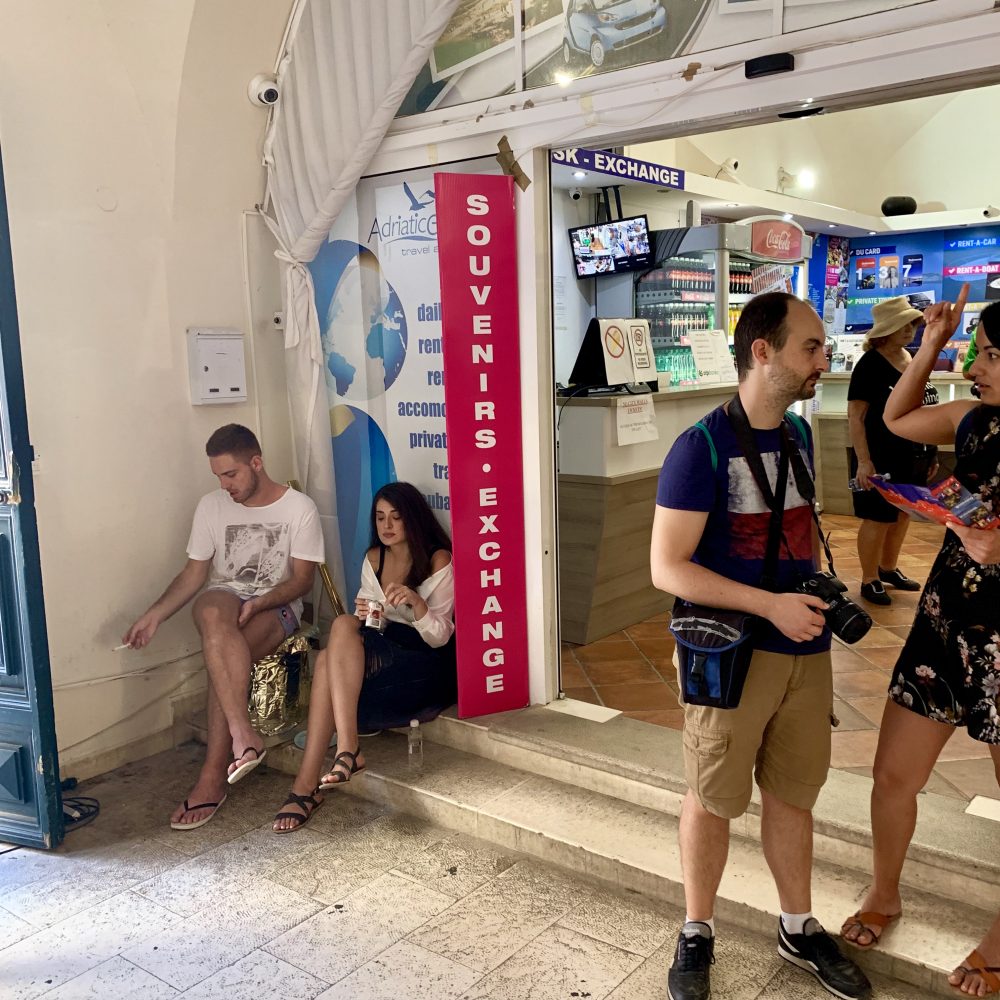
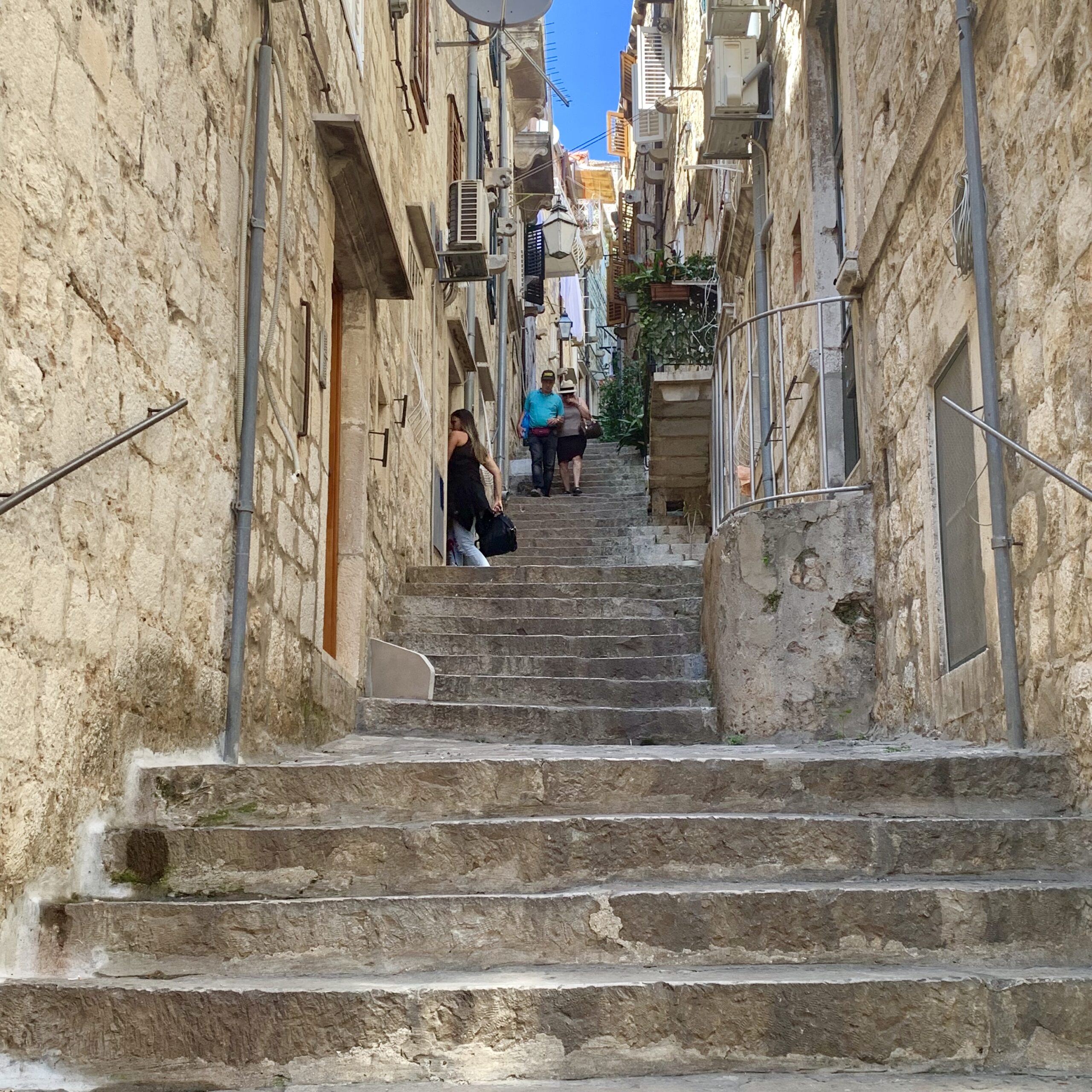
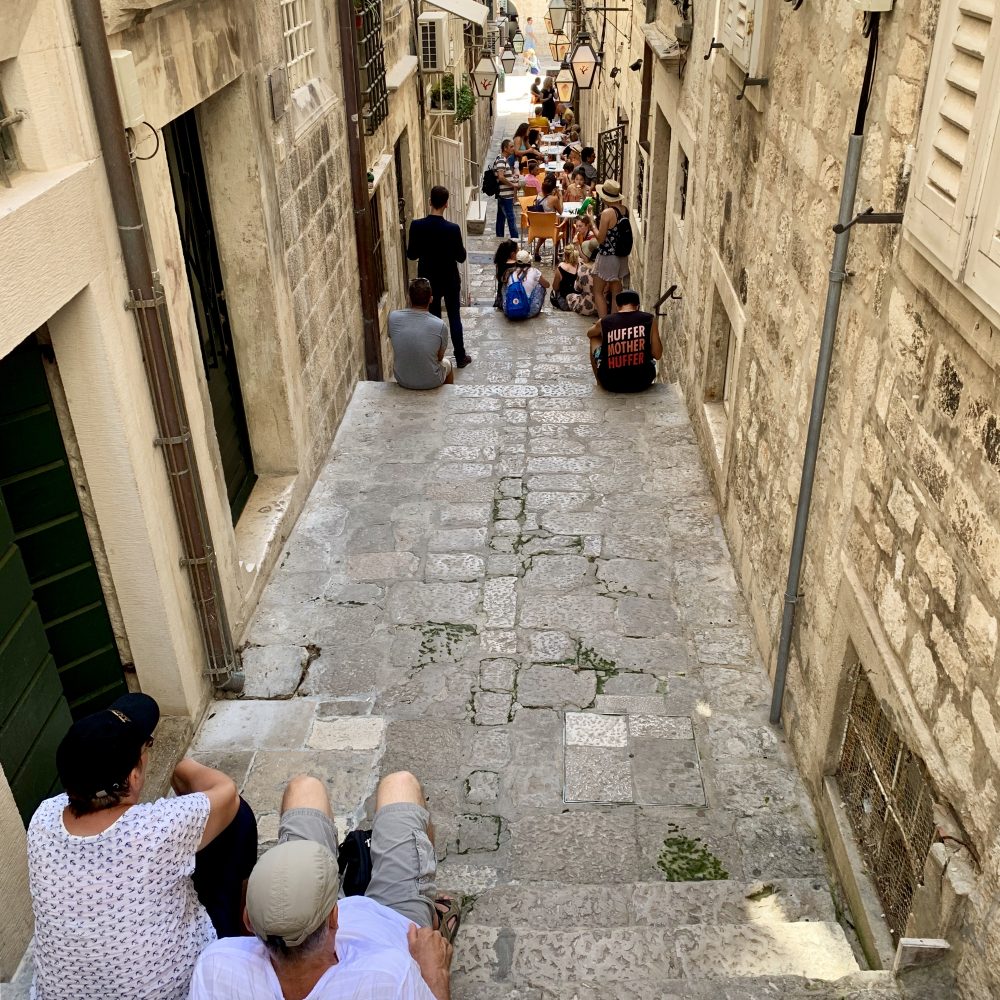
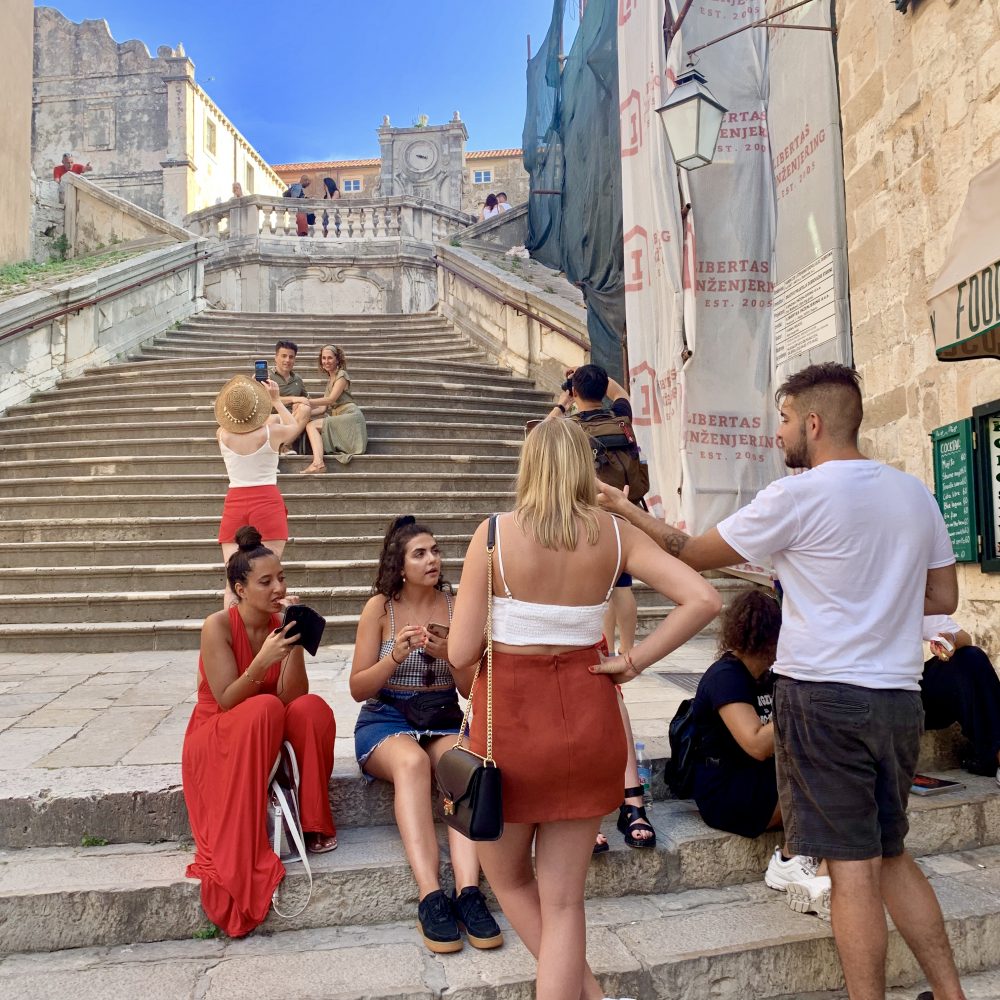
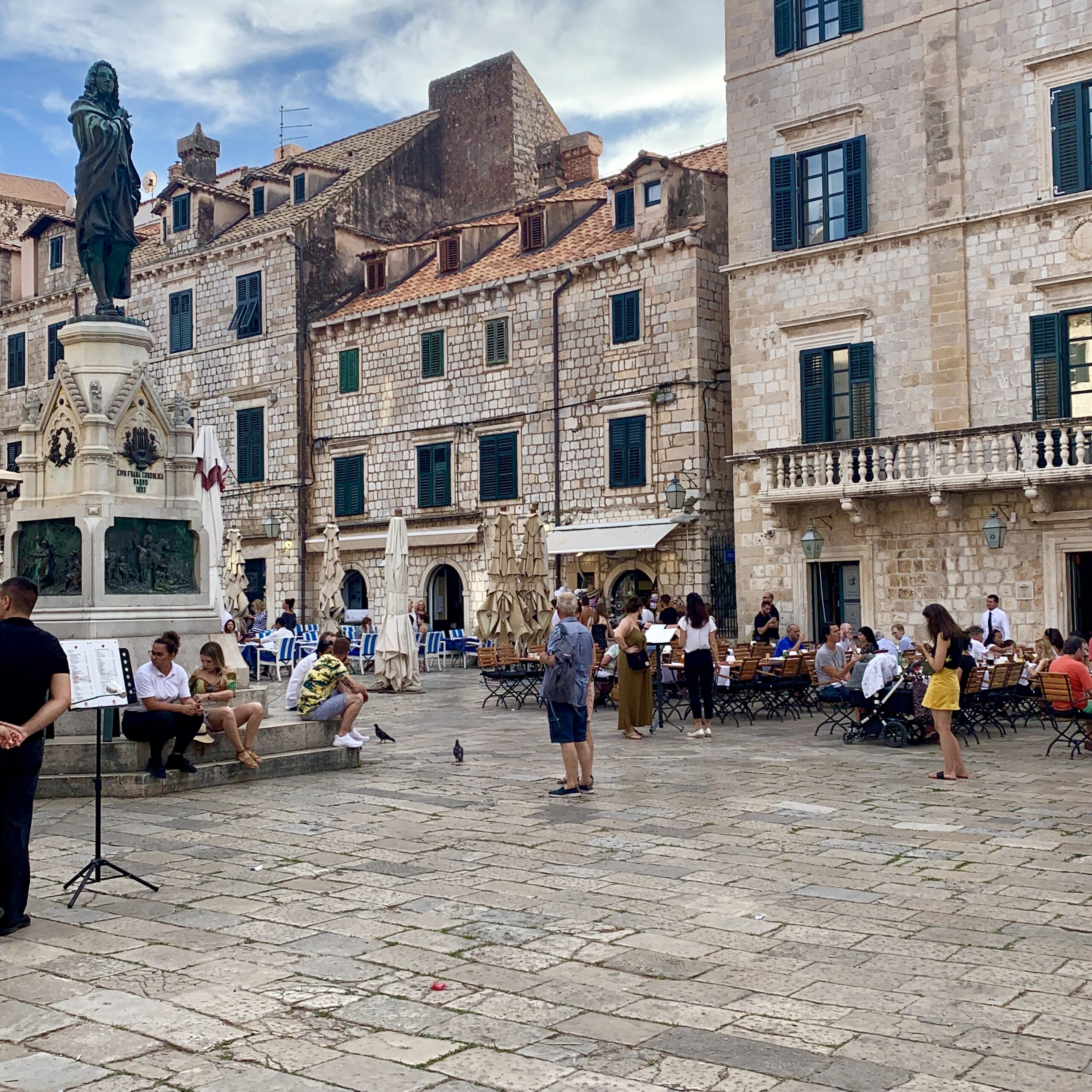
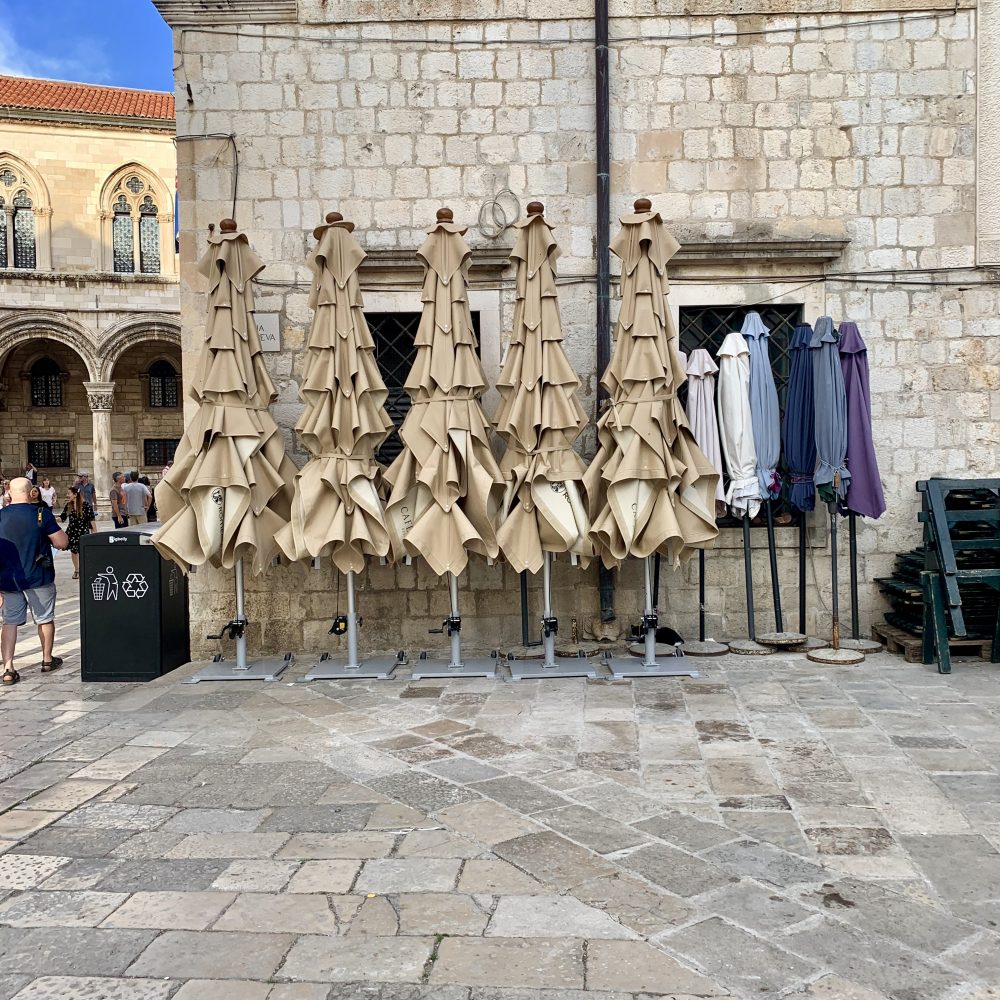
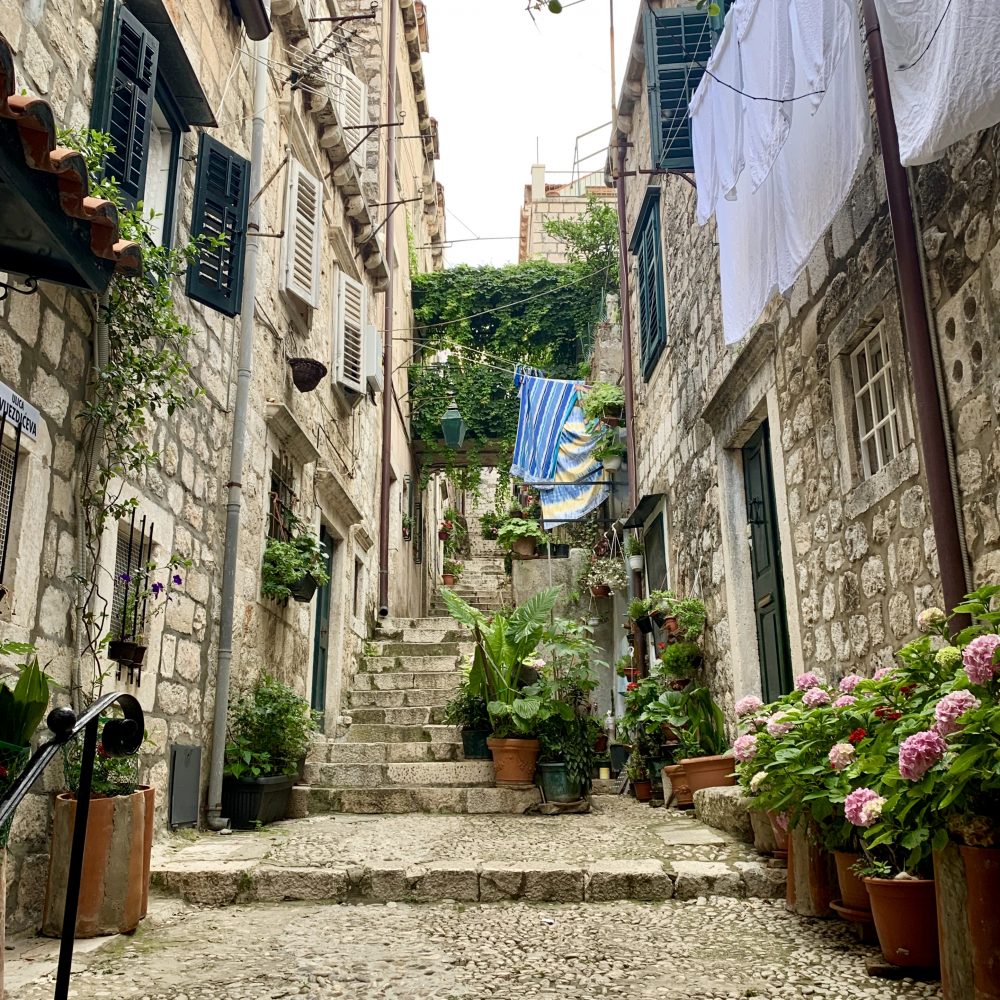
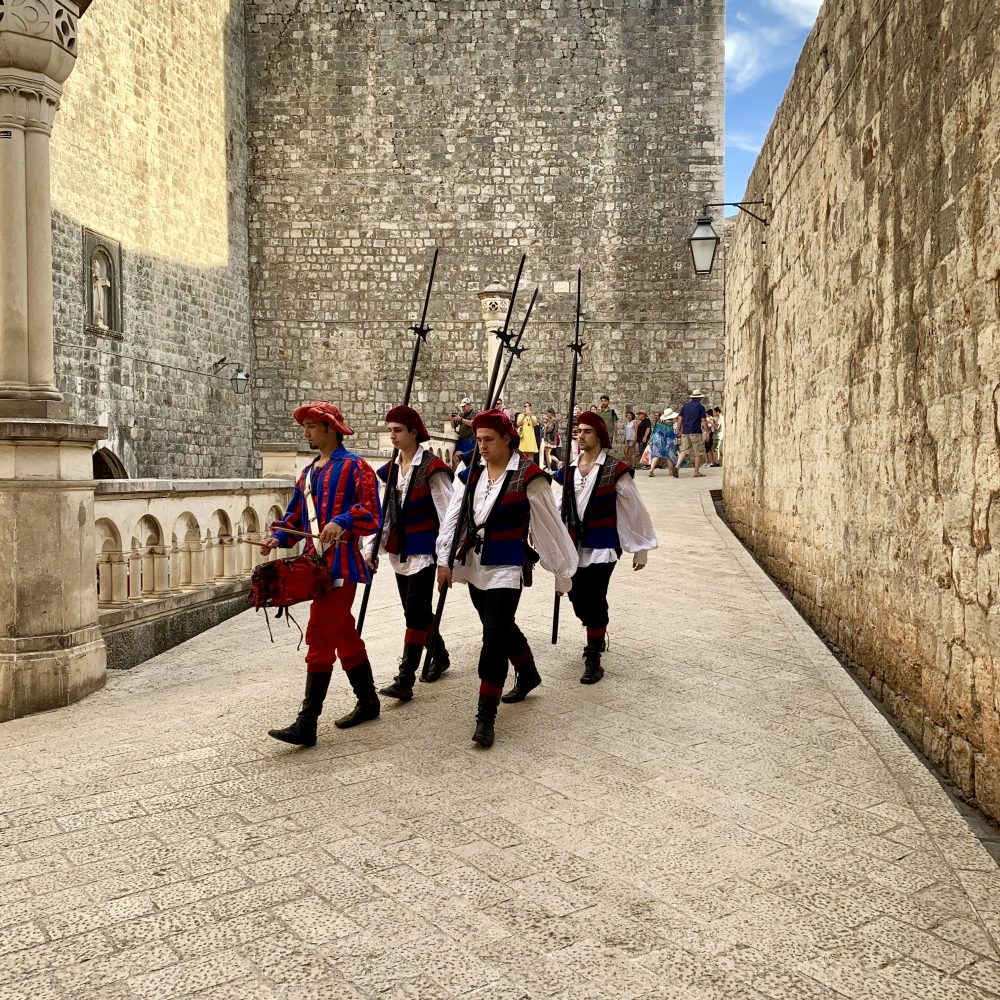
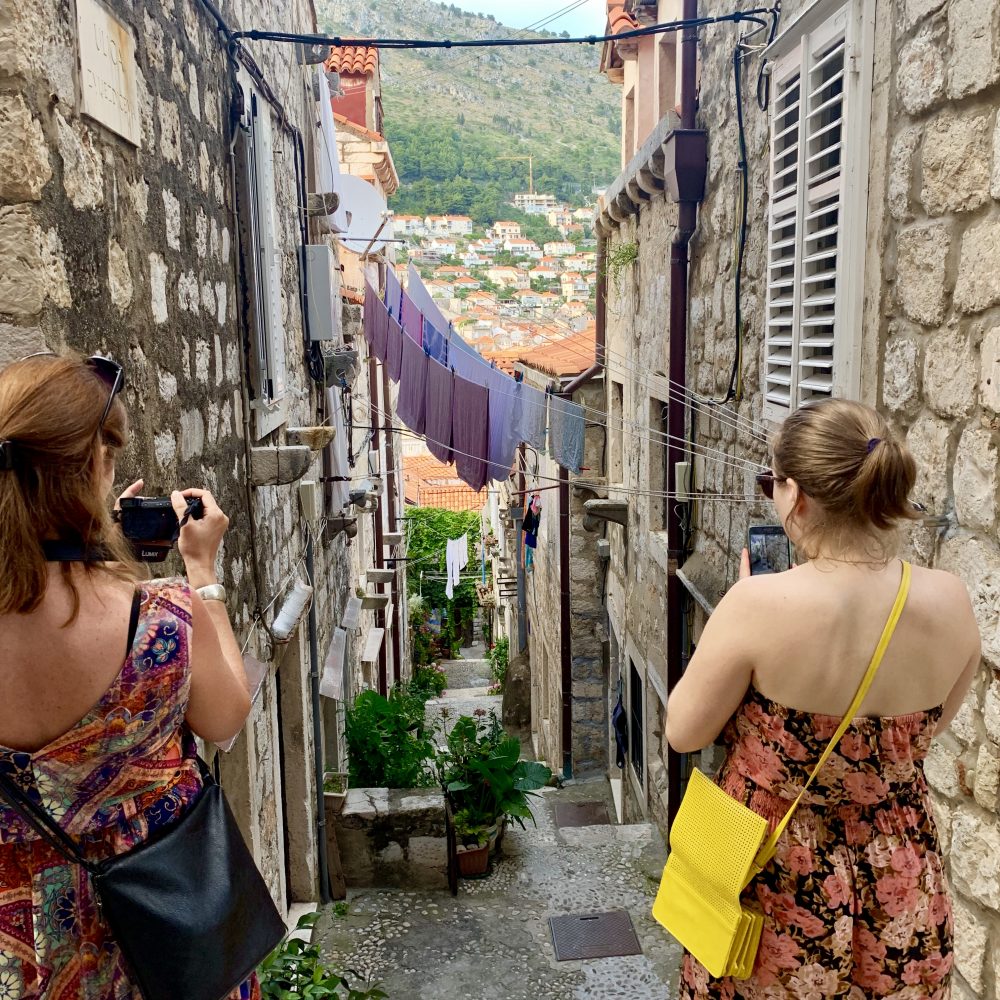
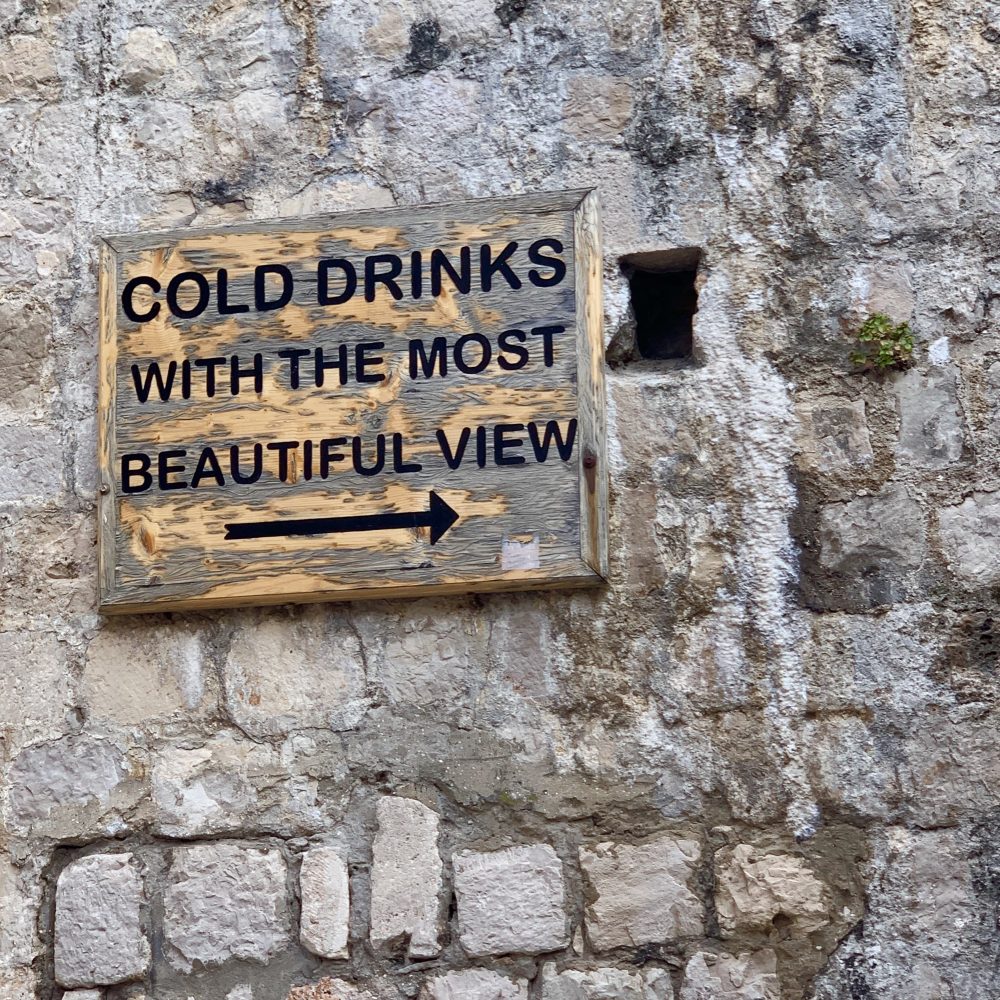
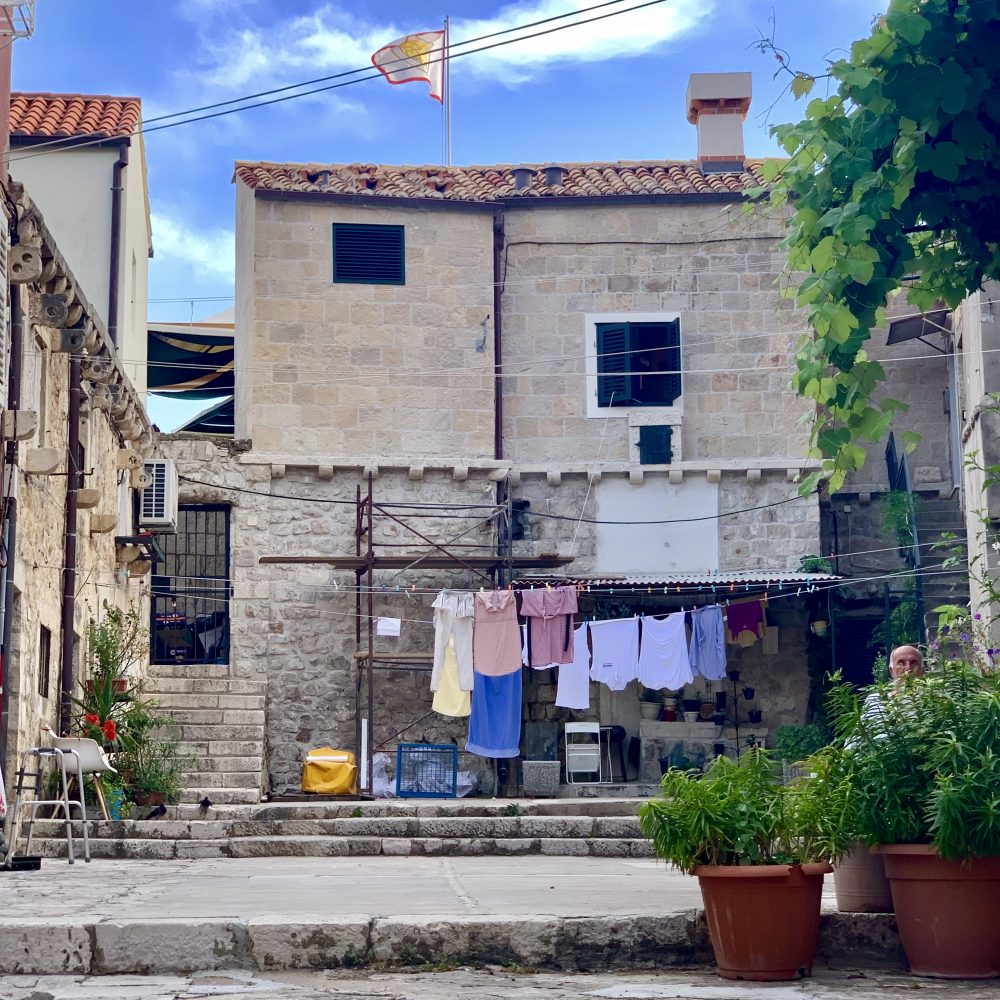
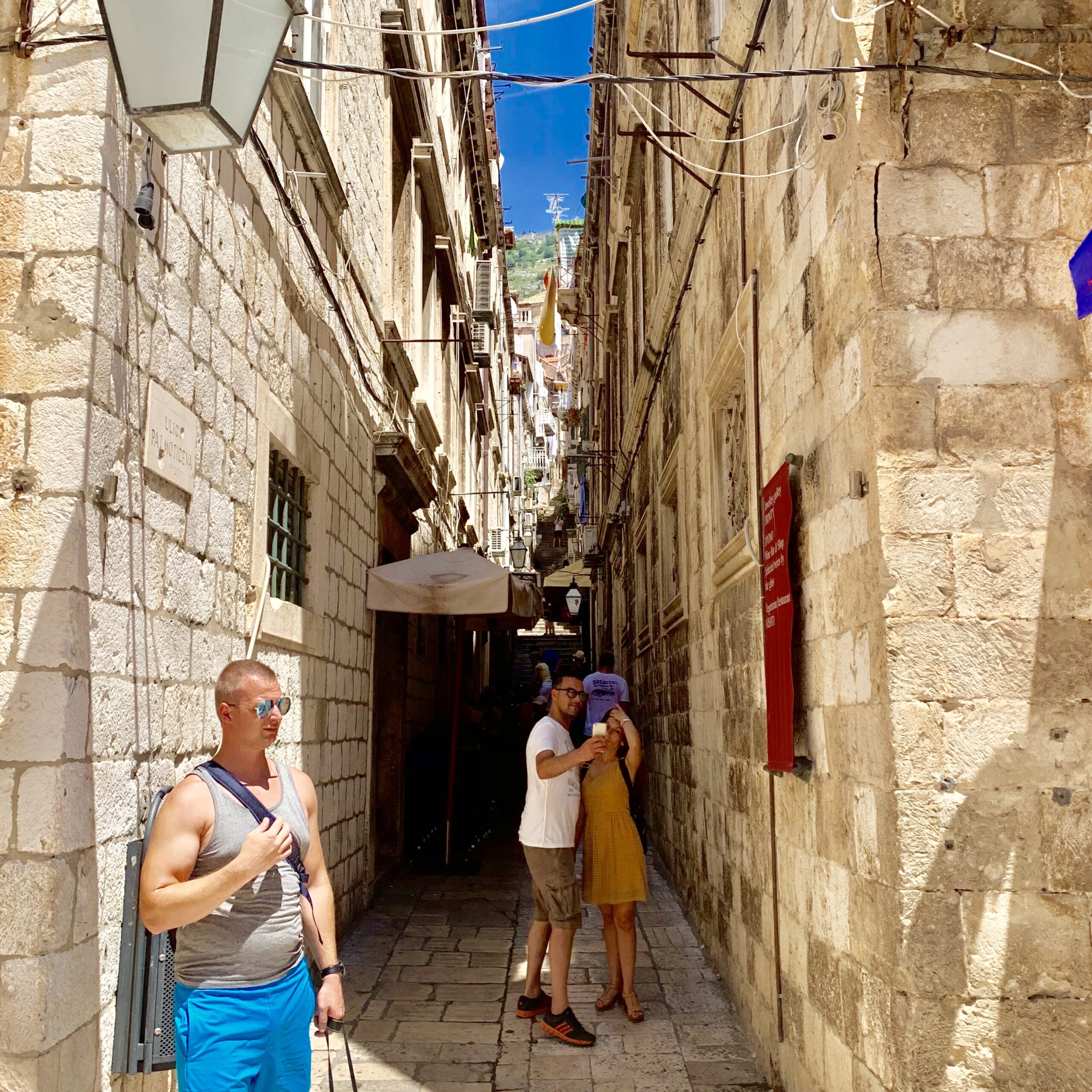
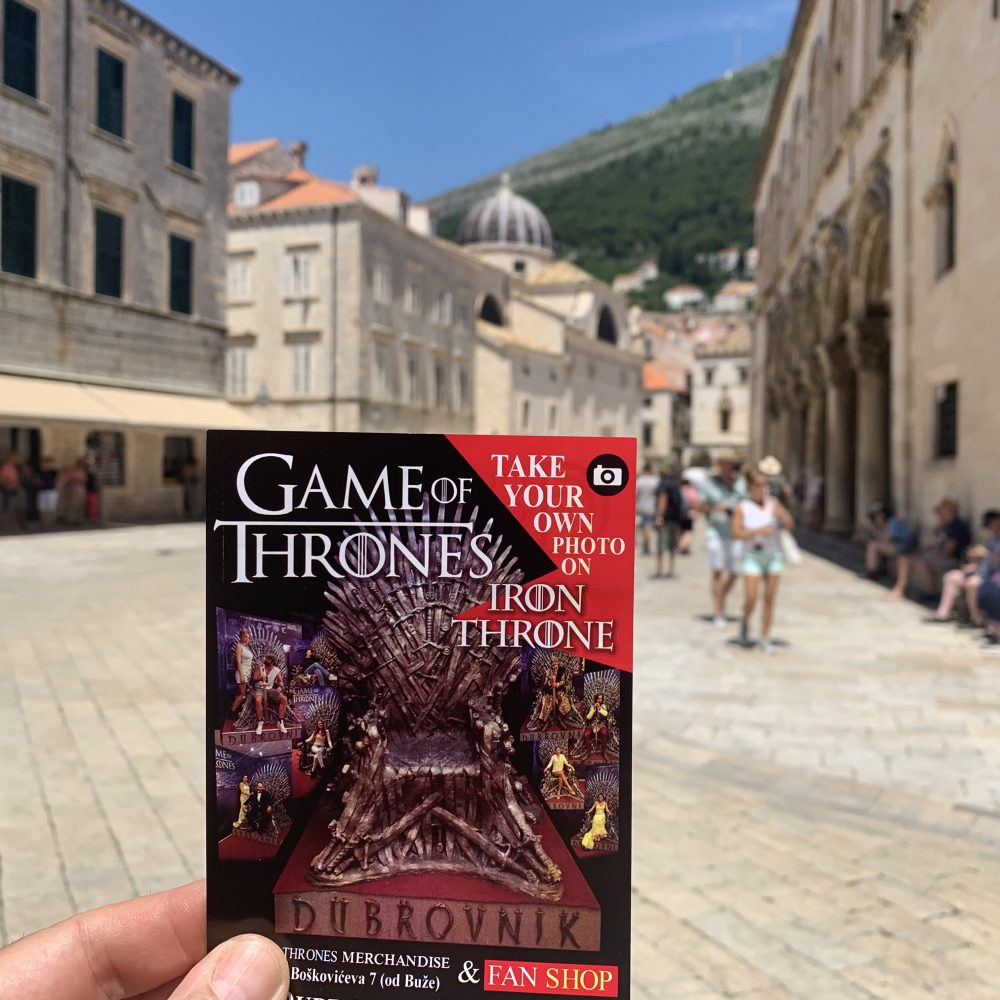
Tourists, tourists, and more tourists
In the walled old city we are seeing Chinese tour groups. Also Japanese people in smaller clusters. But far more Americans here than anywhere in Italy. We think it is a Game of Thrones thing. Large chunks of the series were filmed in the old city here. In fact an article in 2017 said that since 2011 when GOT had its first season, the number of tourists has grown 9 to 12 percent per year.
One of our Uber drivers said that business was ok now in June. But in July it goes nuts. As a comparison, the old city has about 1,500 residents and 3 to 4 cruise ships come to port every few days. Many residents have moved out due to the noise and inconvenience caused by the great crowds. It’s becoming a sort of Disneyland, lacking the local population that would help to temper the experience of the strolling through the old city.
In July, about 100,000 tourists come into the city and there are 6 cruise ships every day. Our 10-minute ride from our apartment to the old city in June will be 50 minutes in July. The mayor is taking steps to limit the number of cruise ships and has already reduced the number of restaurant tables on the street, although that is hard to believe given what we have seen. Recent articles indicate that the mayor will lower the number of tourists within the walls to between 4,000 and 8,000 (presently 10,000) and the number of cruise ships to two a day with a maximum capacity 5,000. Clearly the place needs some intervention.
By 3:00 pm, everyone is exhausted. Tourists by the heat and the walking that they are not used to and the Croatians by the heat and their hard labor serving the tourists that they are used to. Tourists have their gelatos in hand. Croatians have their cigarettes.
But French, German, British, Scandinavian, many Australians, and others we can’t identify are swirling all around. We are coping with the crowds just fine after the initial shock. We had no idea Dubrovnik was such a major destination. Robert is gleaning a lot of information on tourism from Uber drivers. Many are here from Zagreb for the summer season. They are bracing for the big months of July and August.
Croatian women are tall! A lot of young ones tower over Bonnie. And pretty faces are standard among these women.
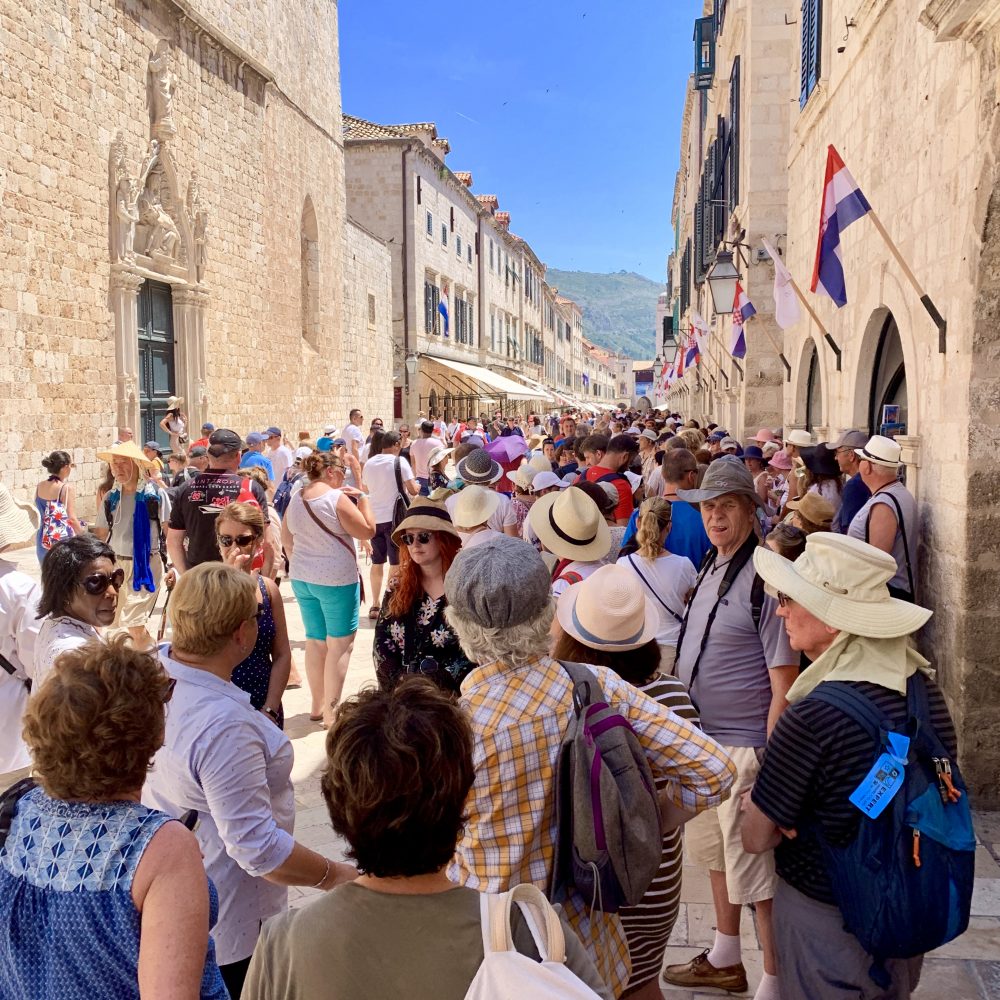
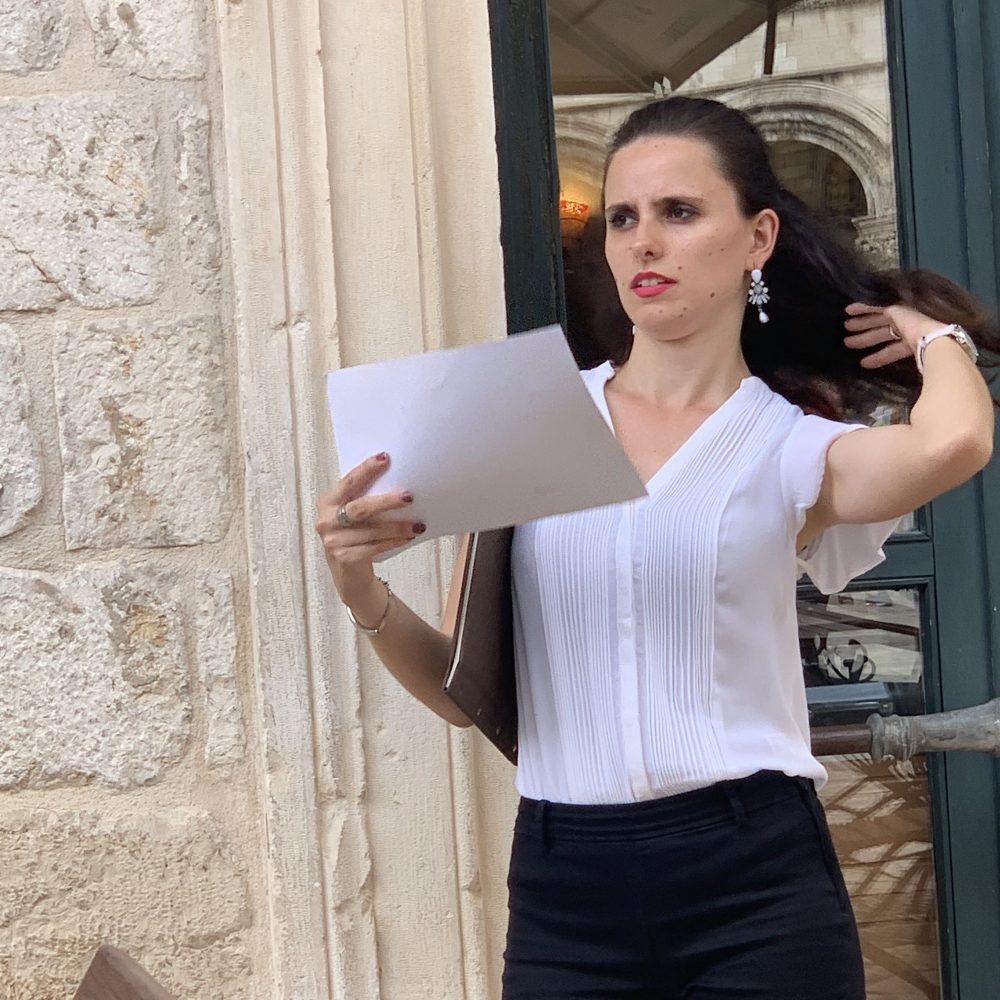
Dubrovnik Cathedral
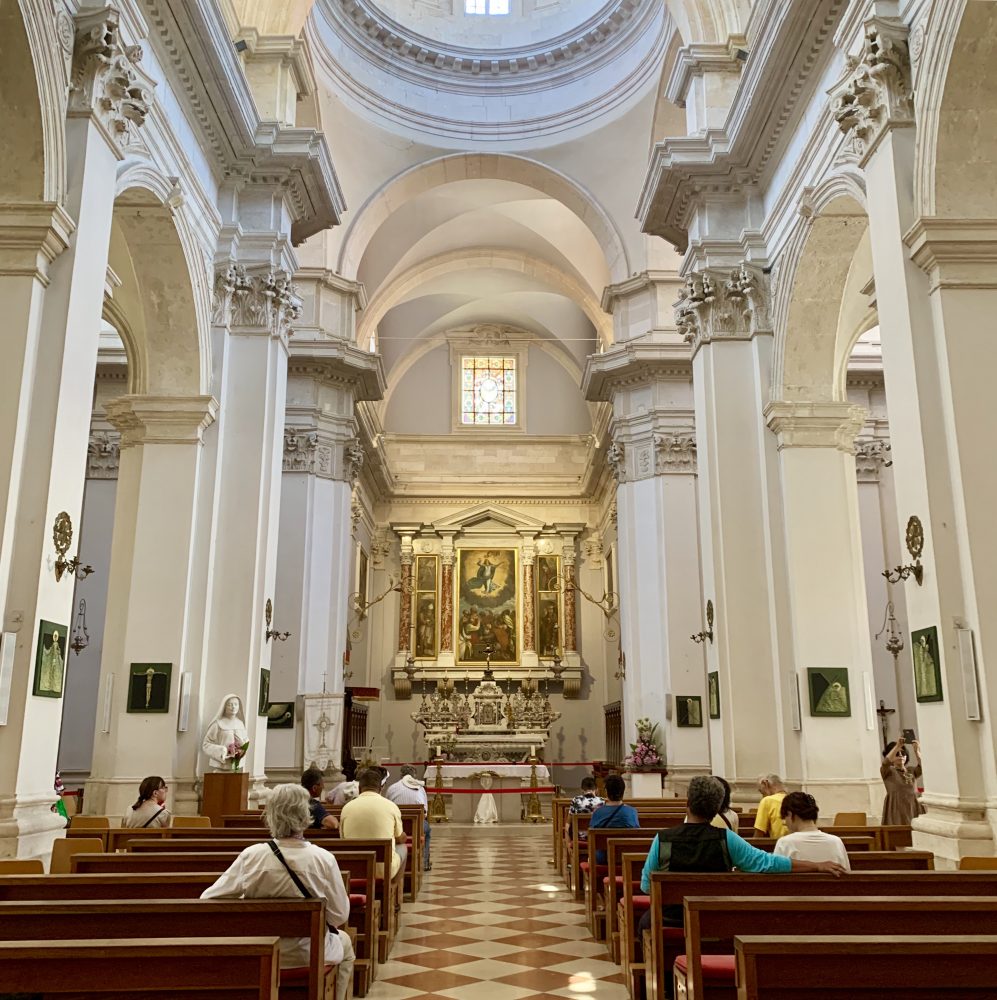
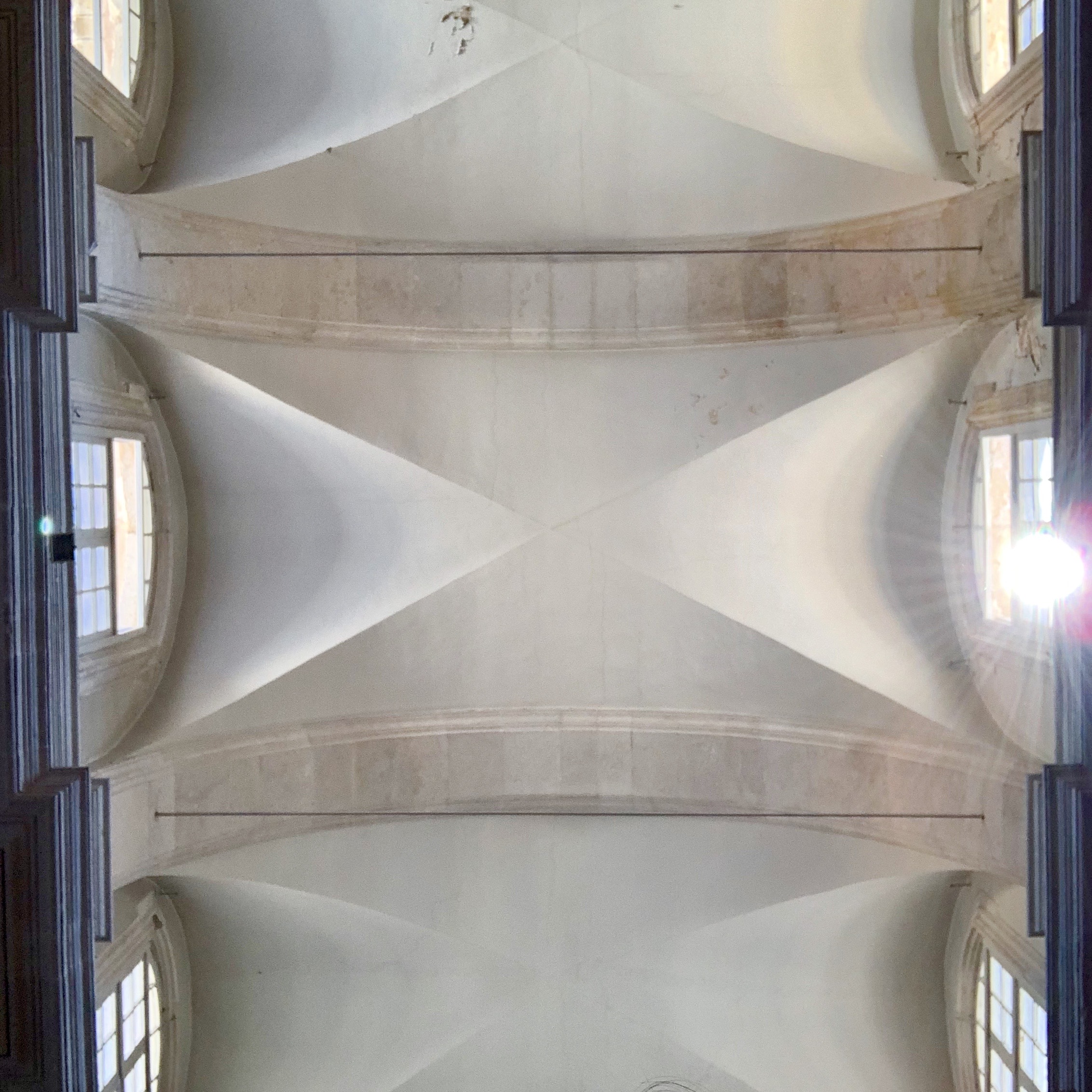
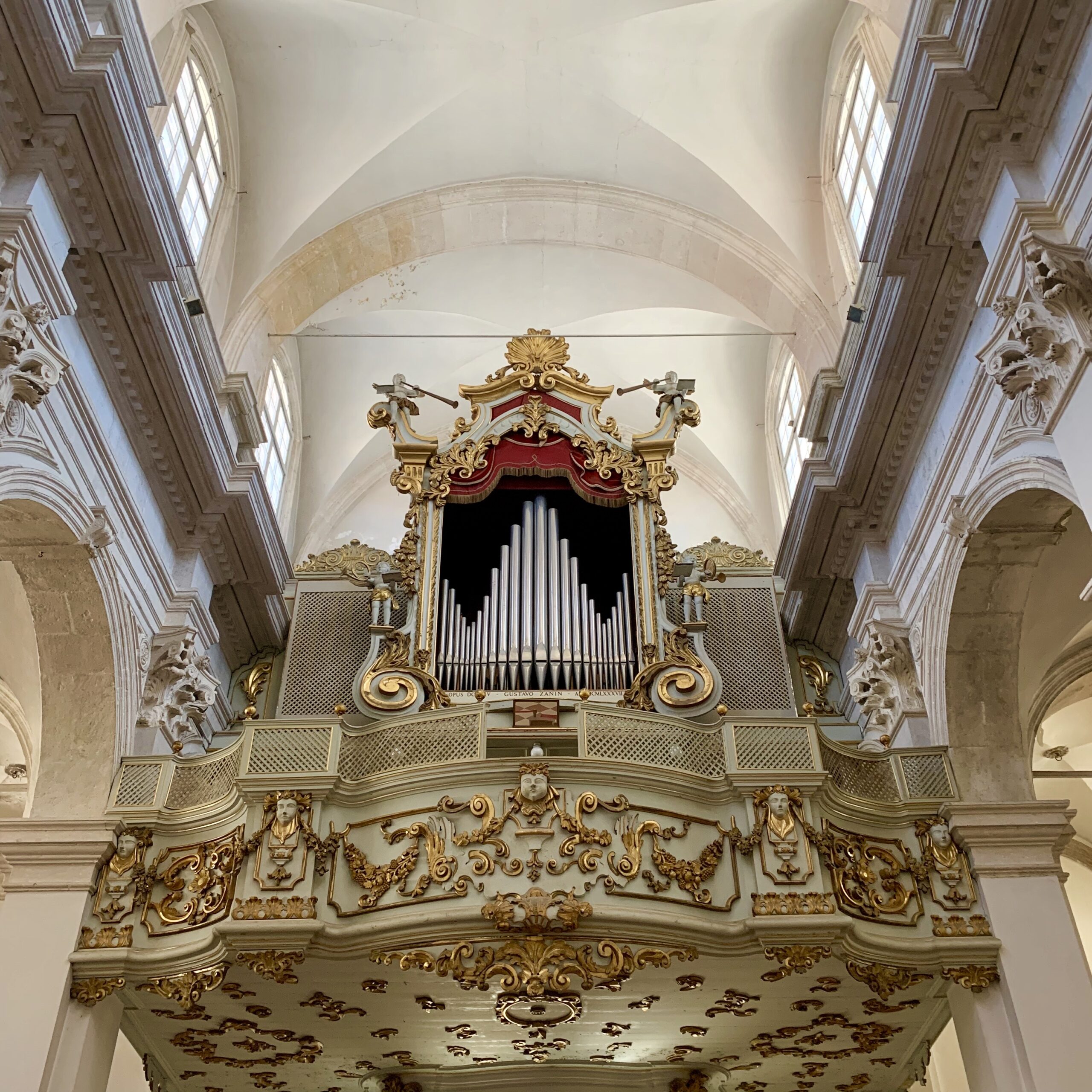
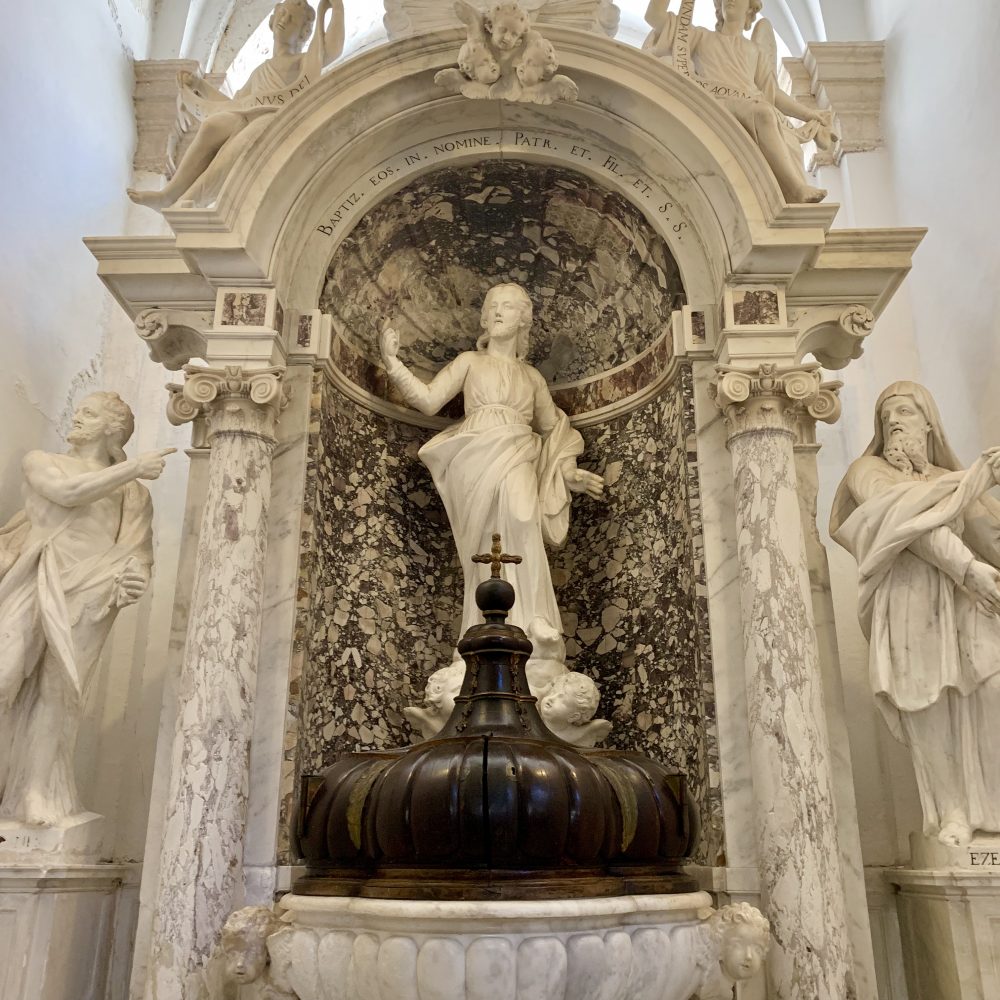
The Church of the Holy Annunciation
(Crkva sv. Blagovijesti)
Serbian Orthodox church. Very simple. Very beautiful. Altar hidden behind curtain.
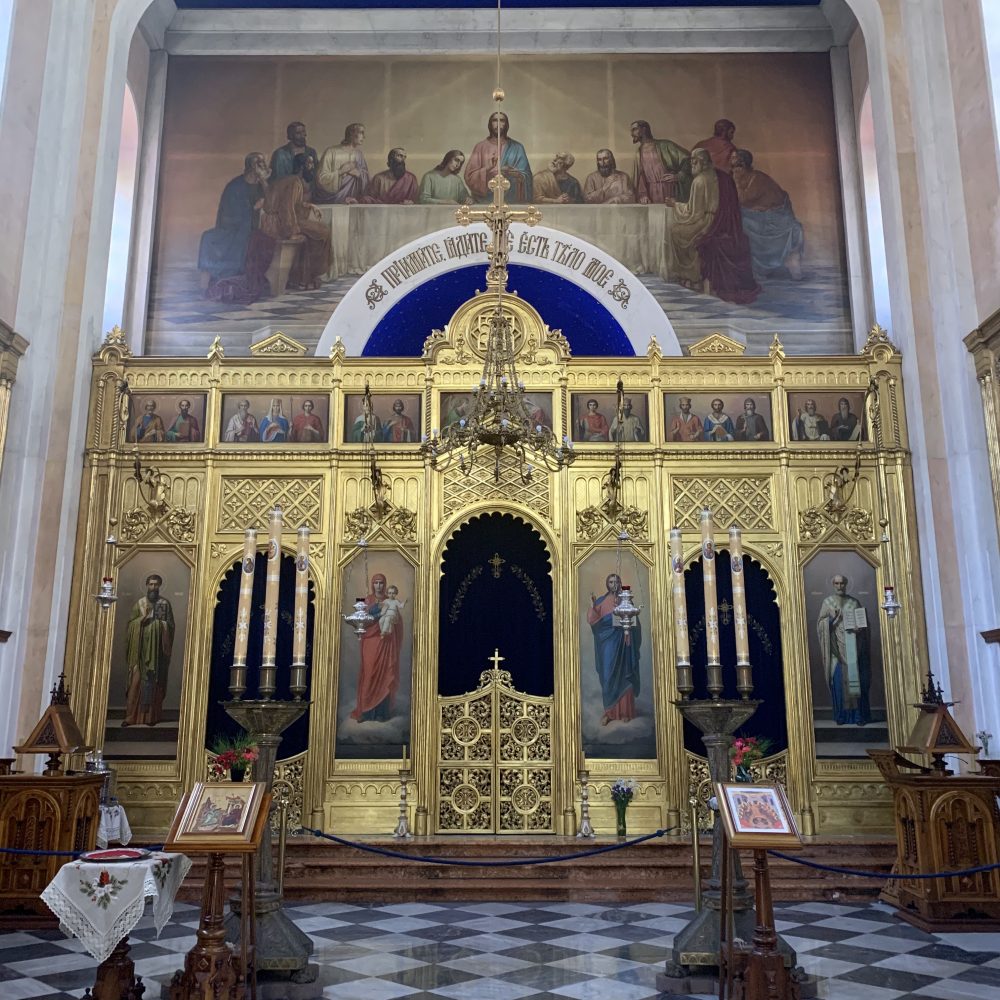
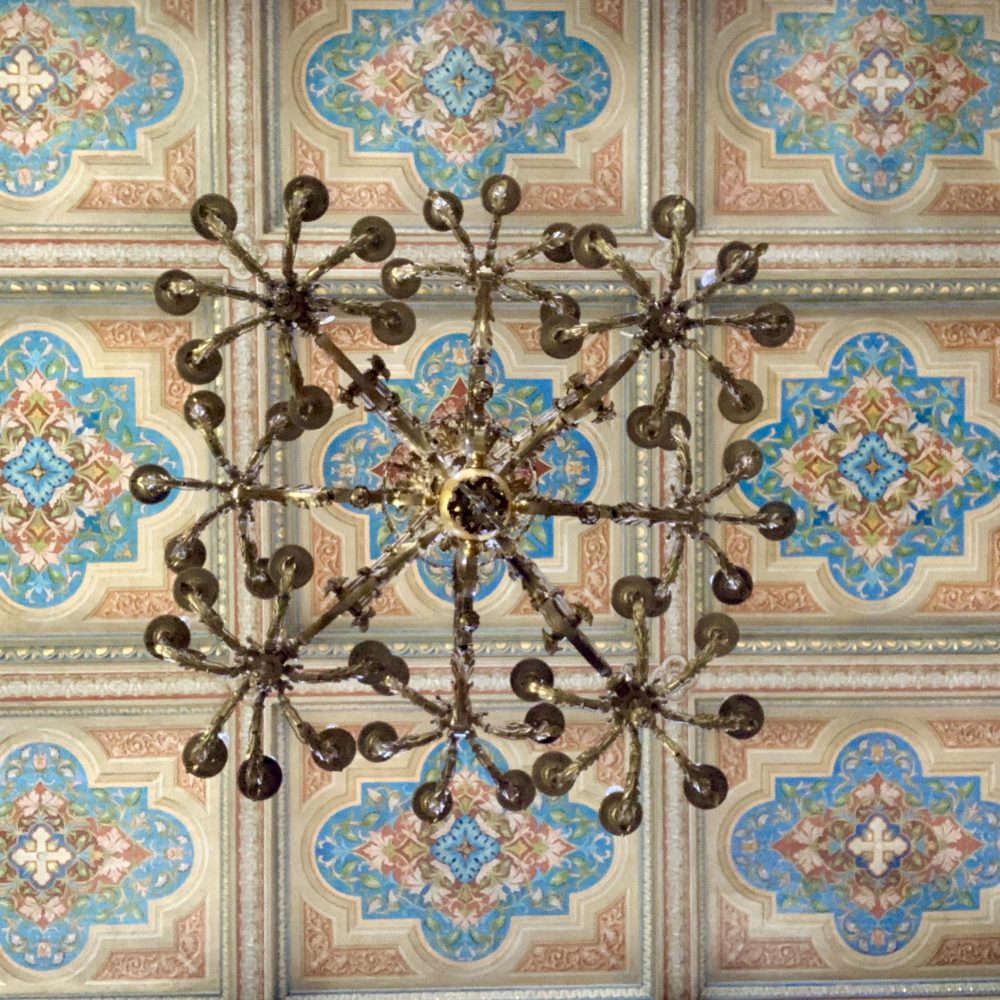
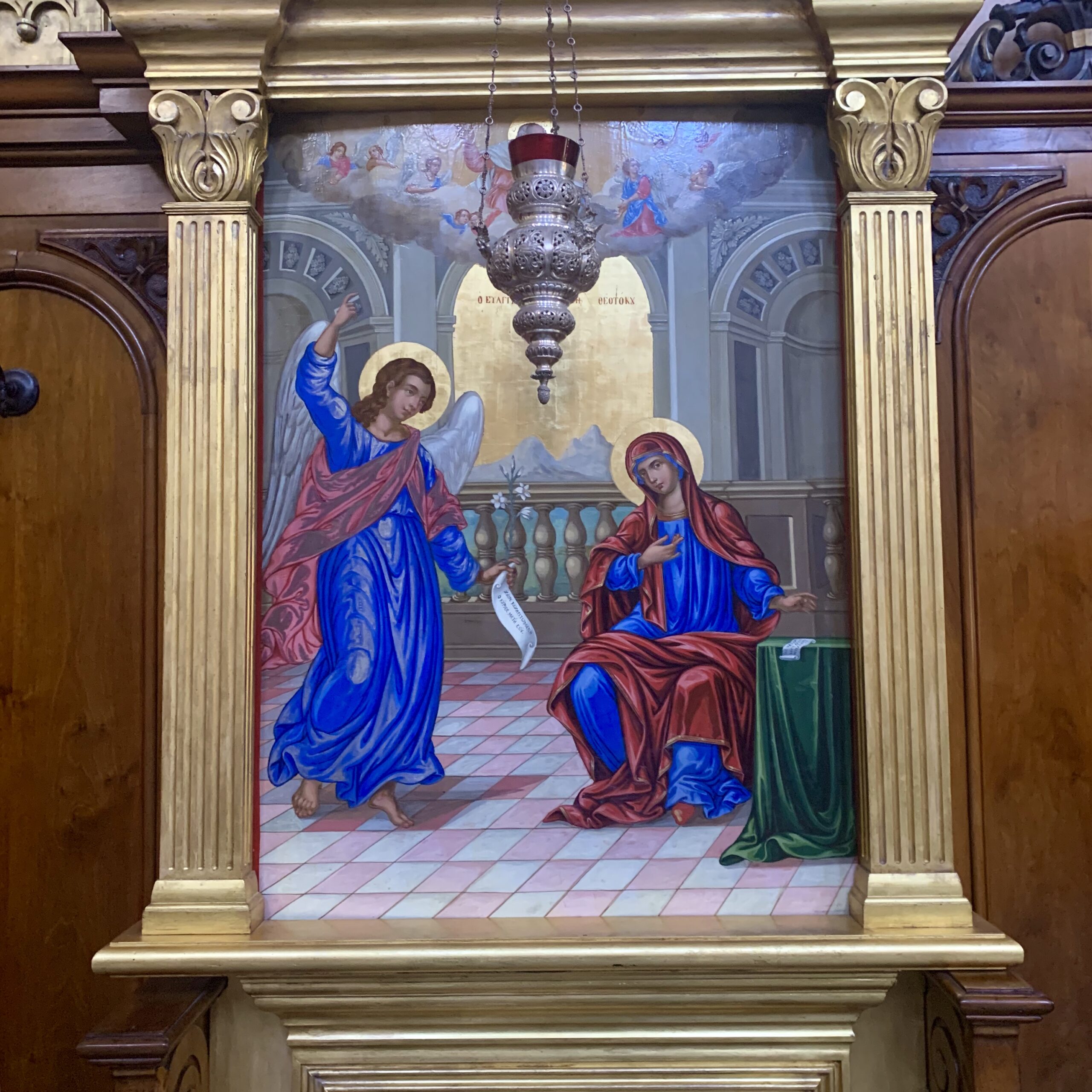
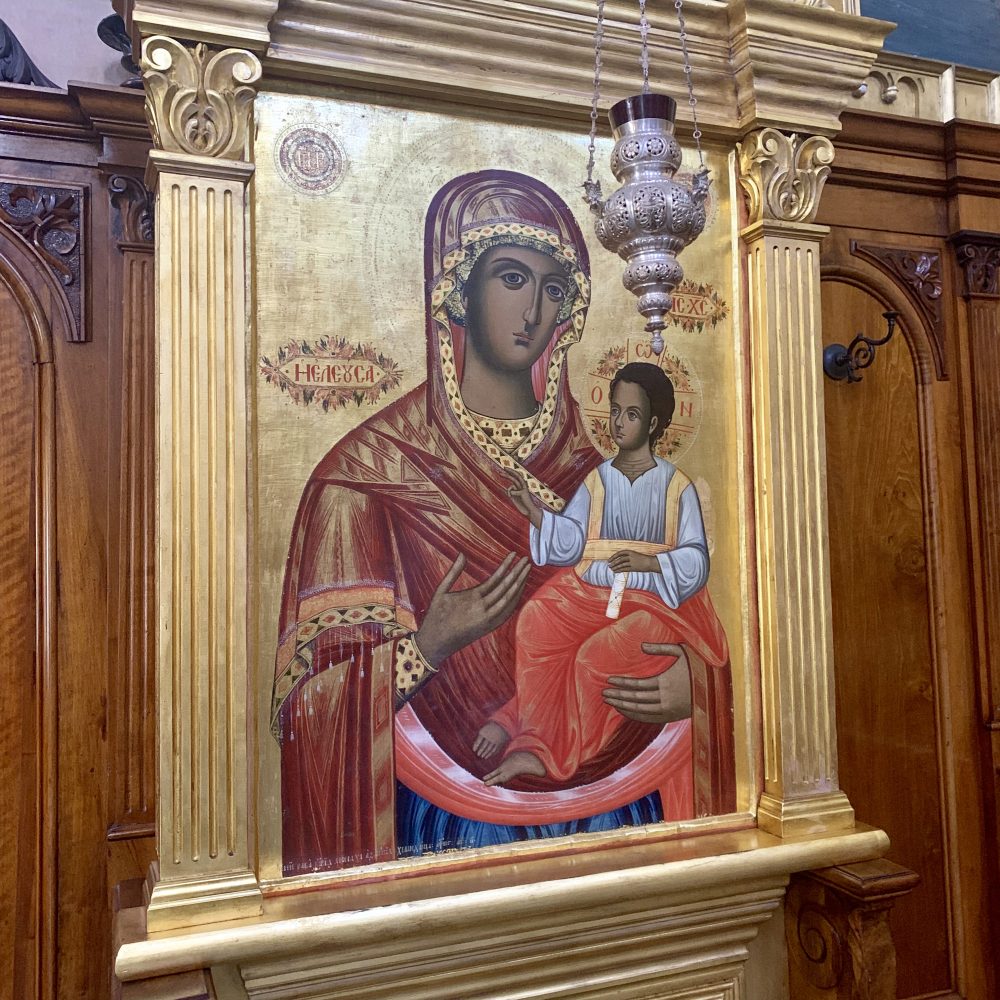
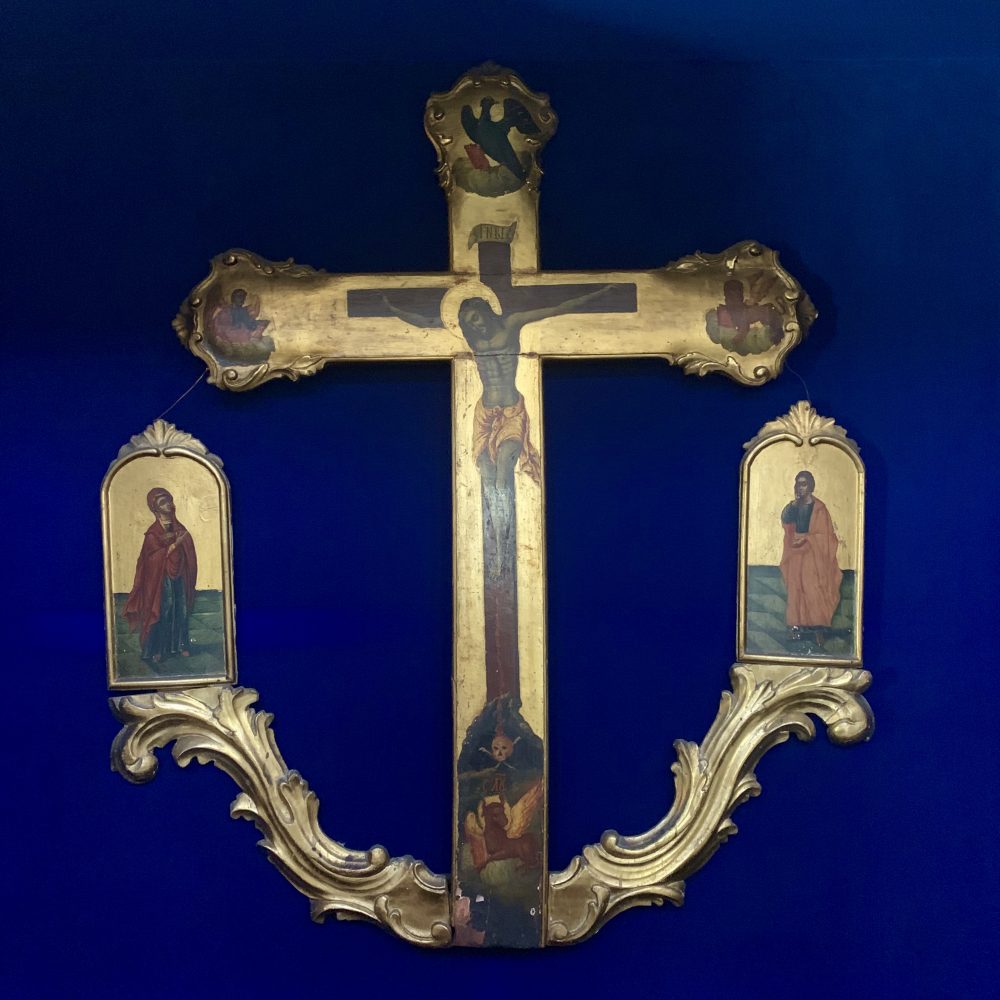
The Church of Saint Ignatius of Loyola
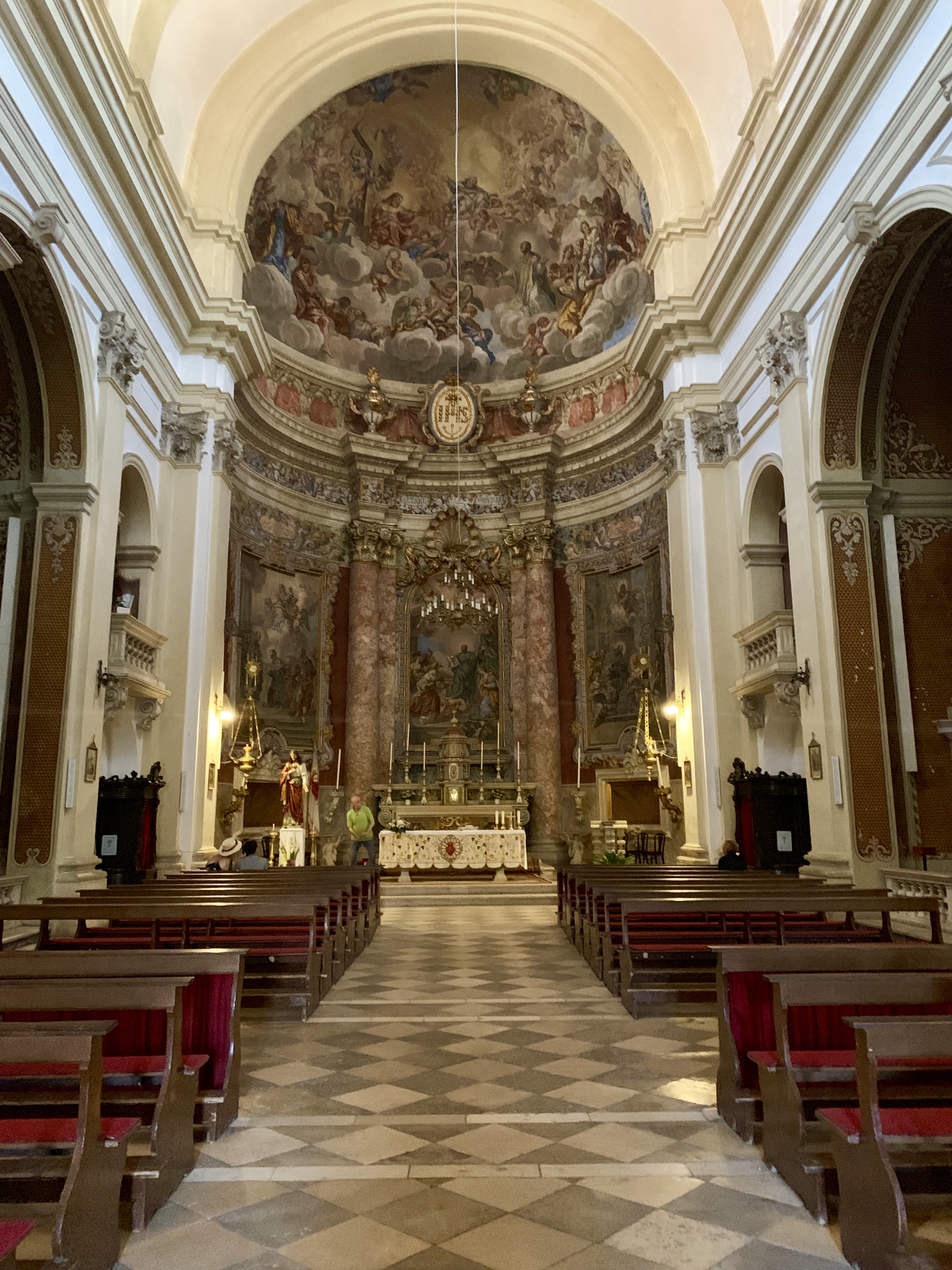
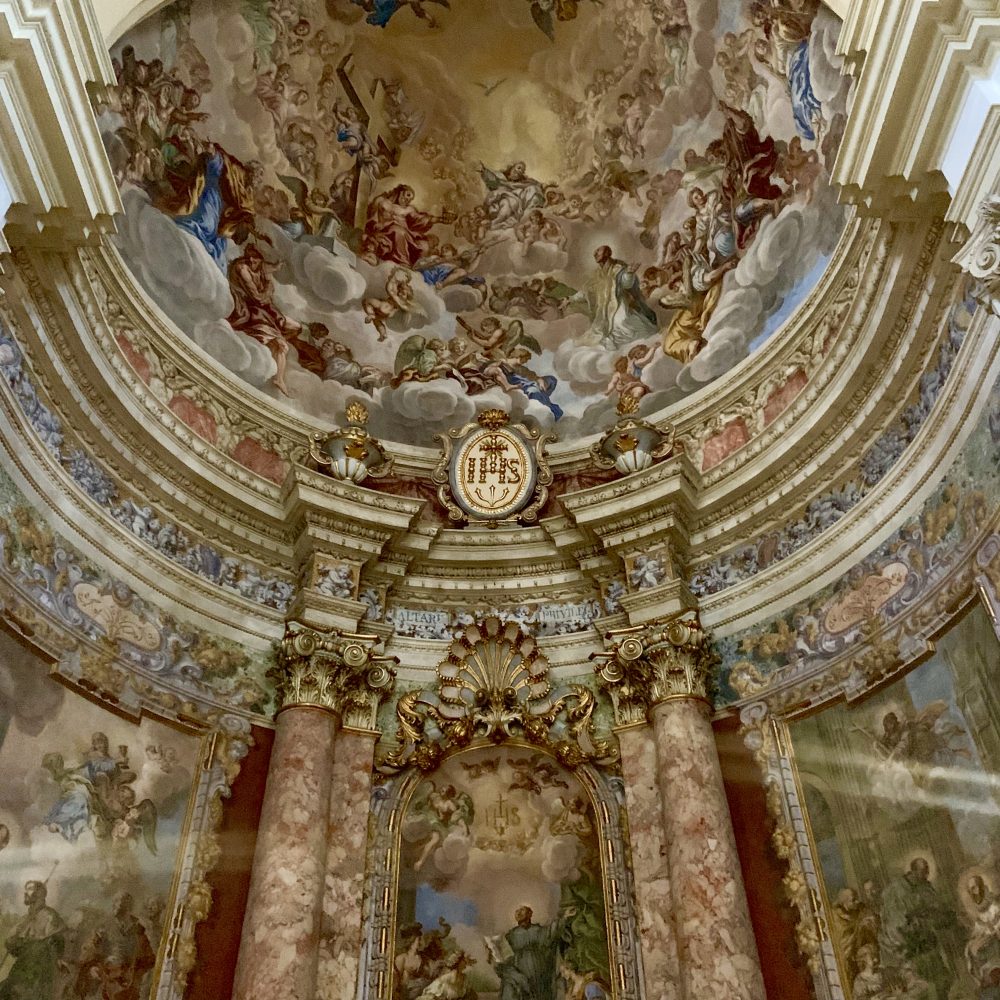
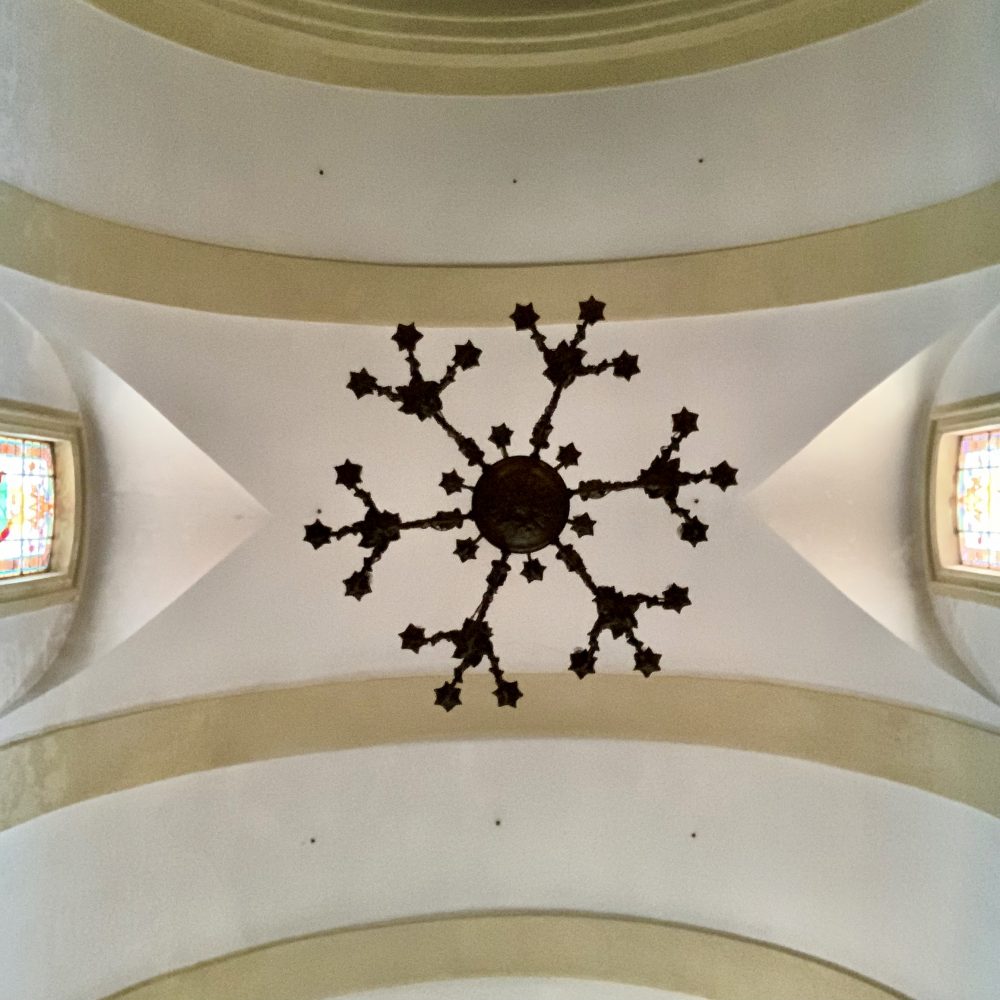
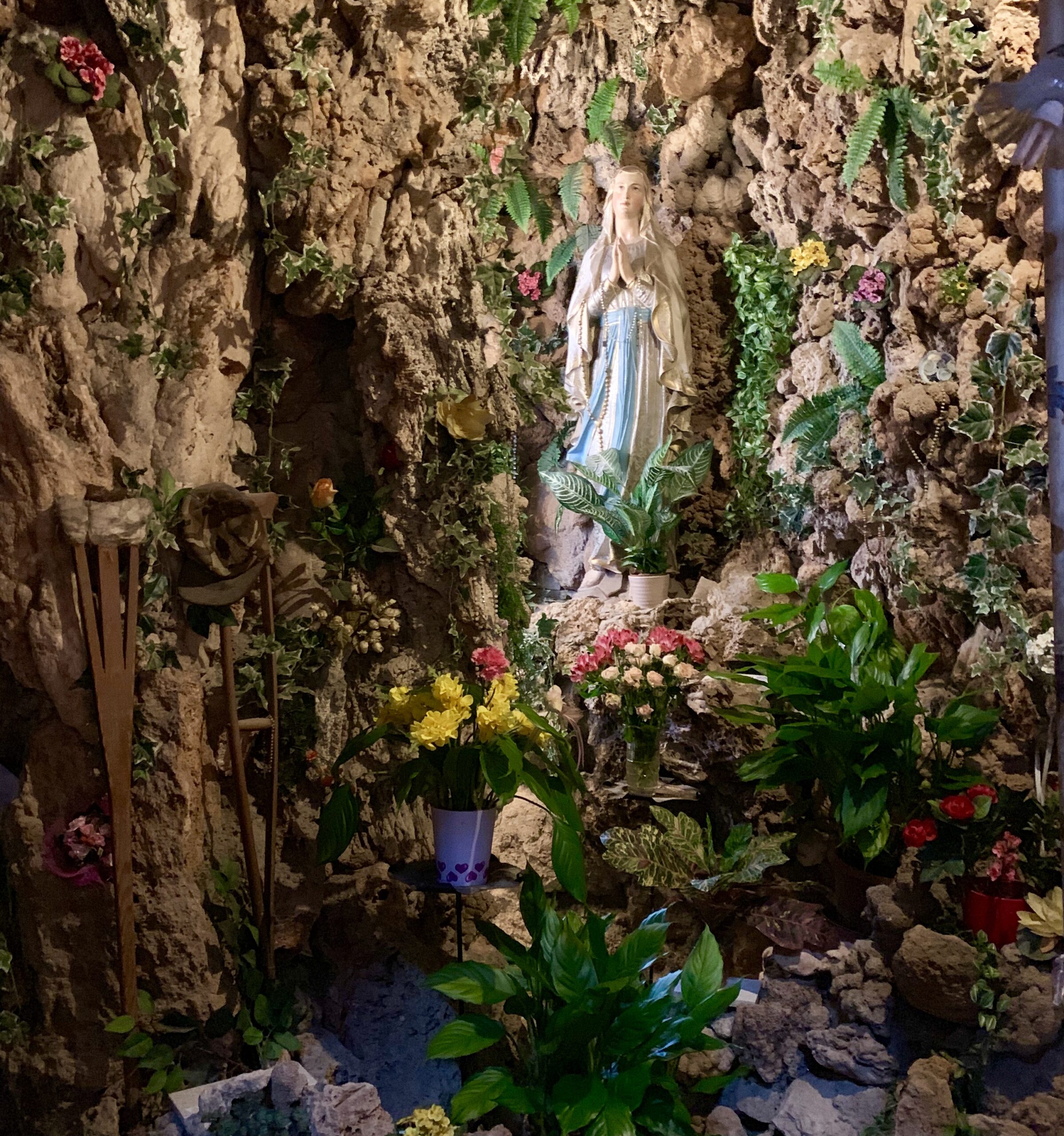
Church of Saint Blaise
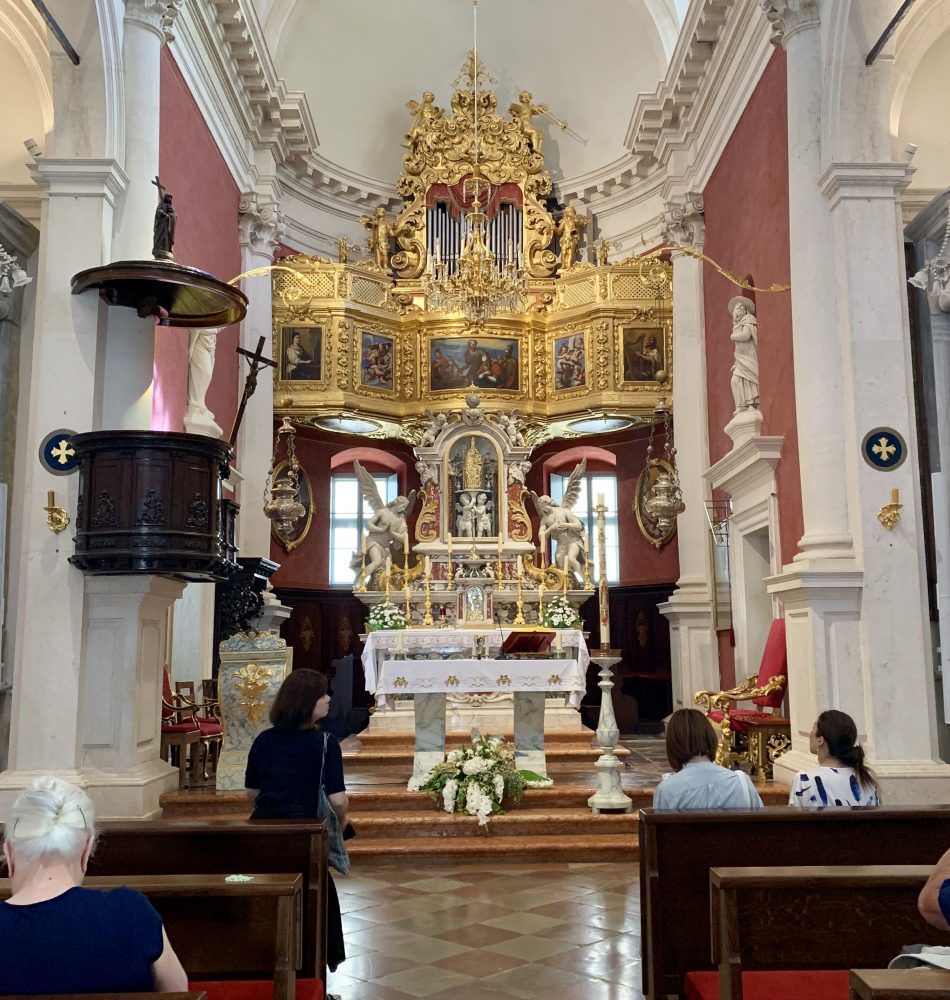
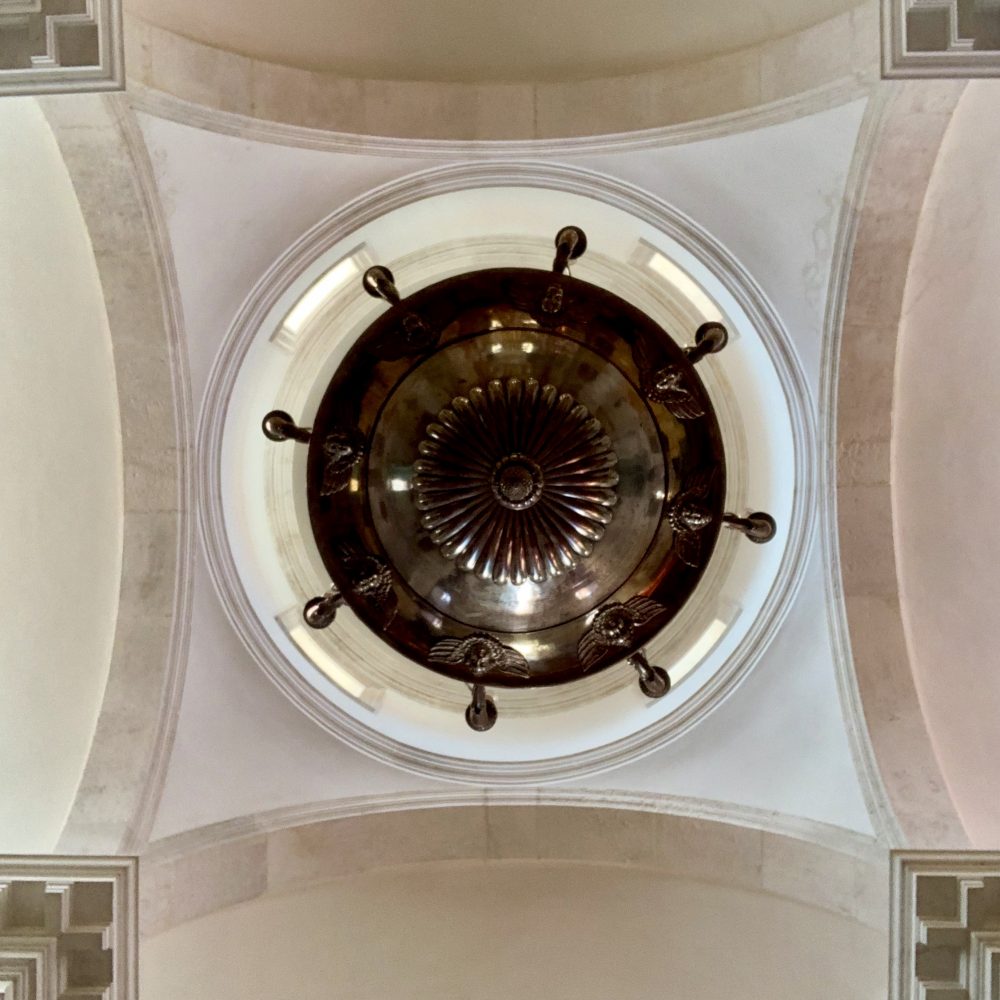
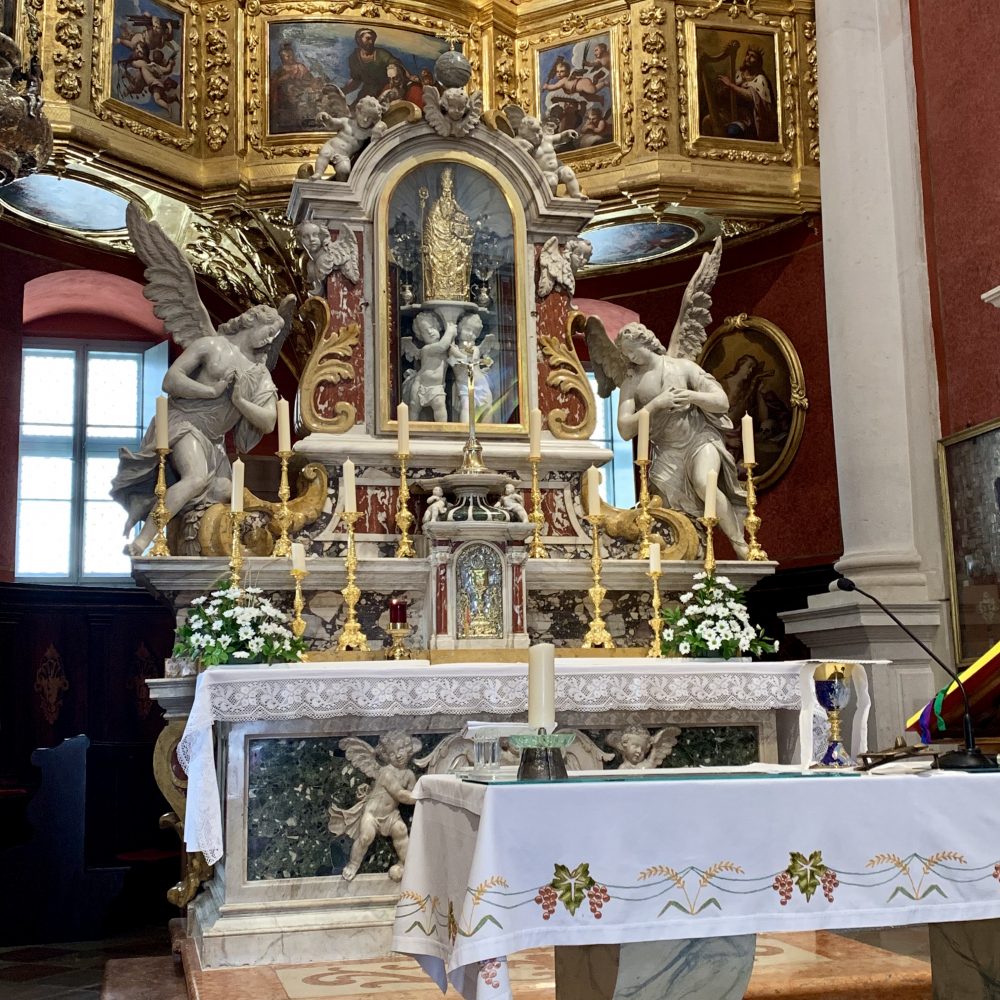
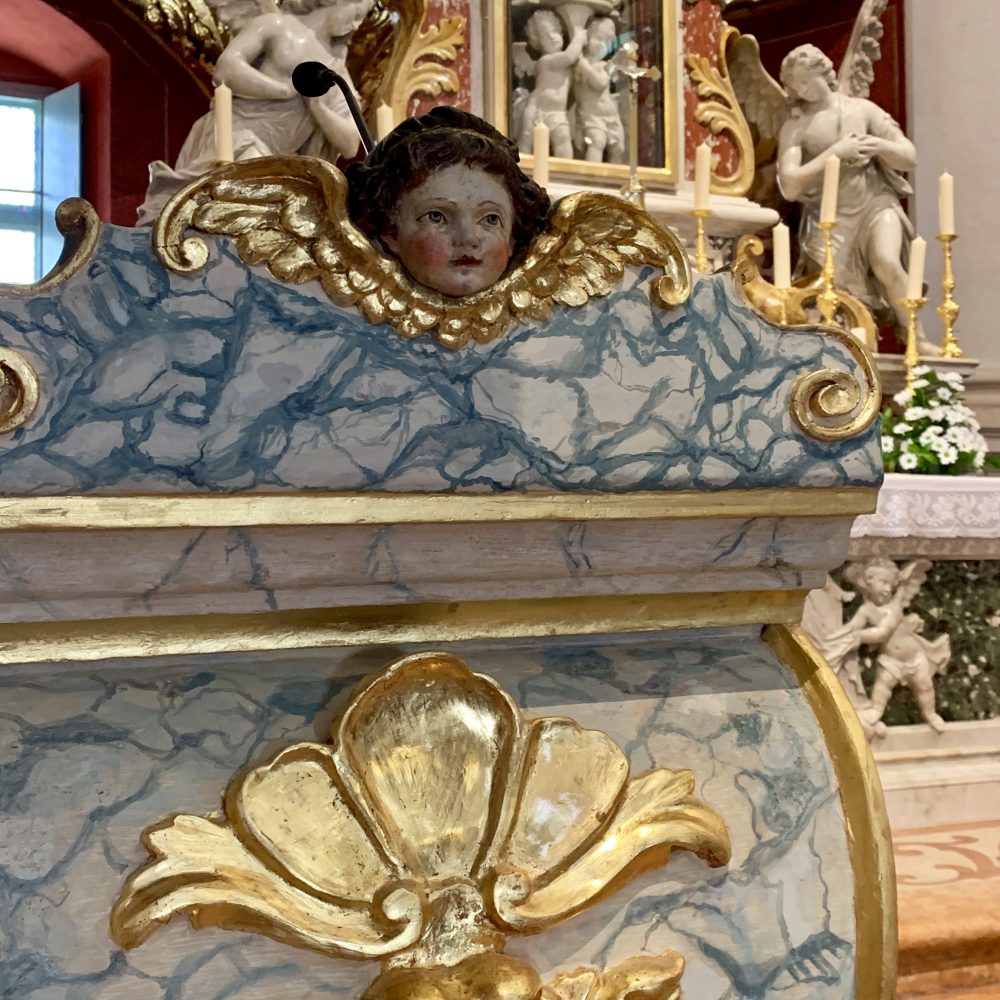
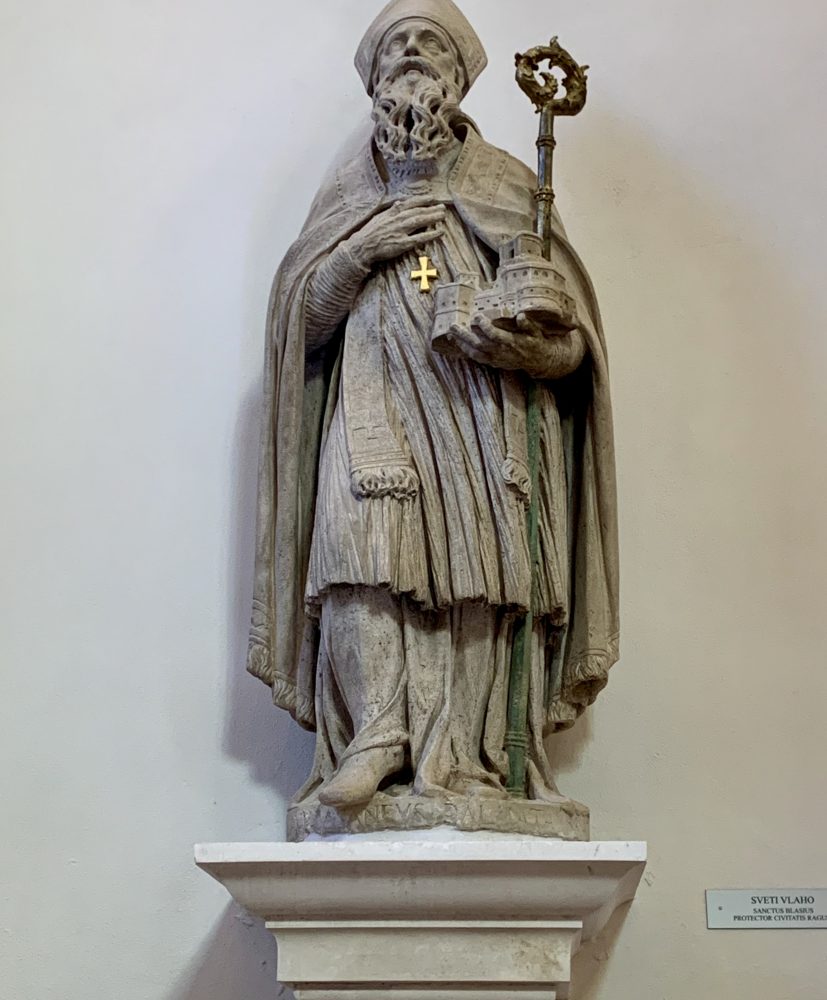
Cats (Not the musical)
We have never seen so many feral cats as in Dubrovnik. They seem to be everywhere.
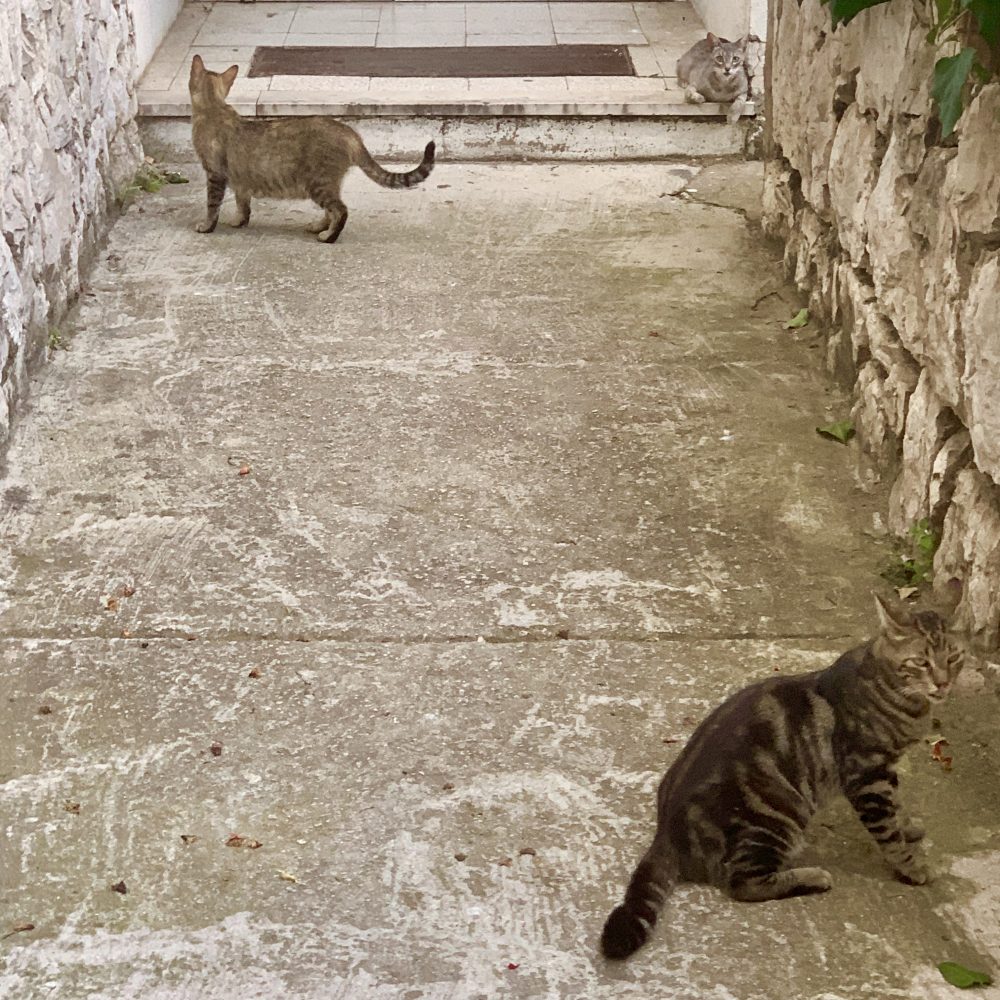
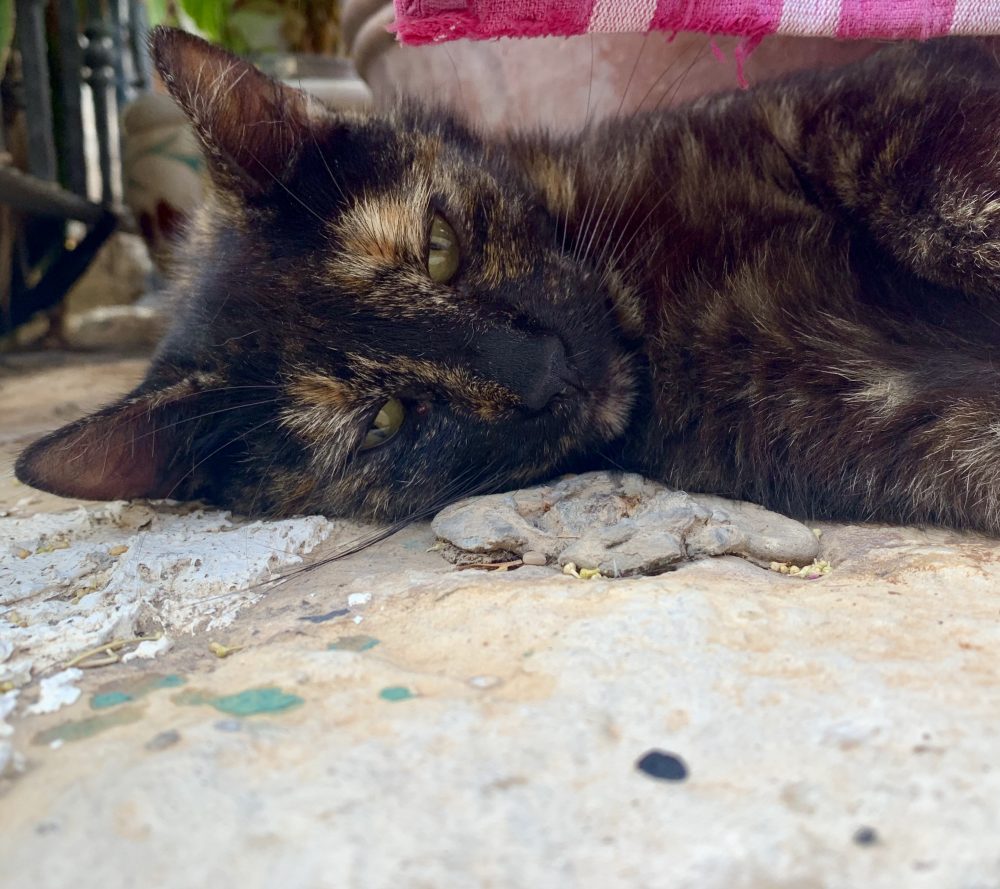
Excursions
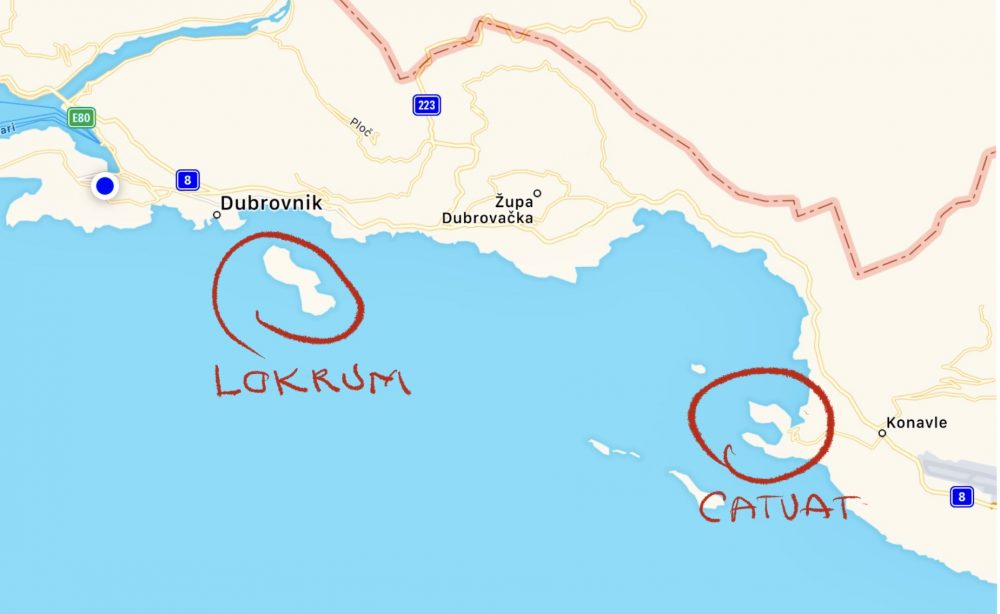
Lokrum
Lokrum is an island public park just off Dubrovnik—a 15-minute boat ride. The island does not let tourists stay overnight. The biggest attraction is the monastery and the water’s edge where hundreds of swimmers occasionally go in the water and then lounge around with their friends and family. All ages. All body shapes. All kinds of swimming apparel. All nationalities.
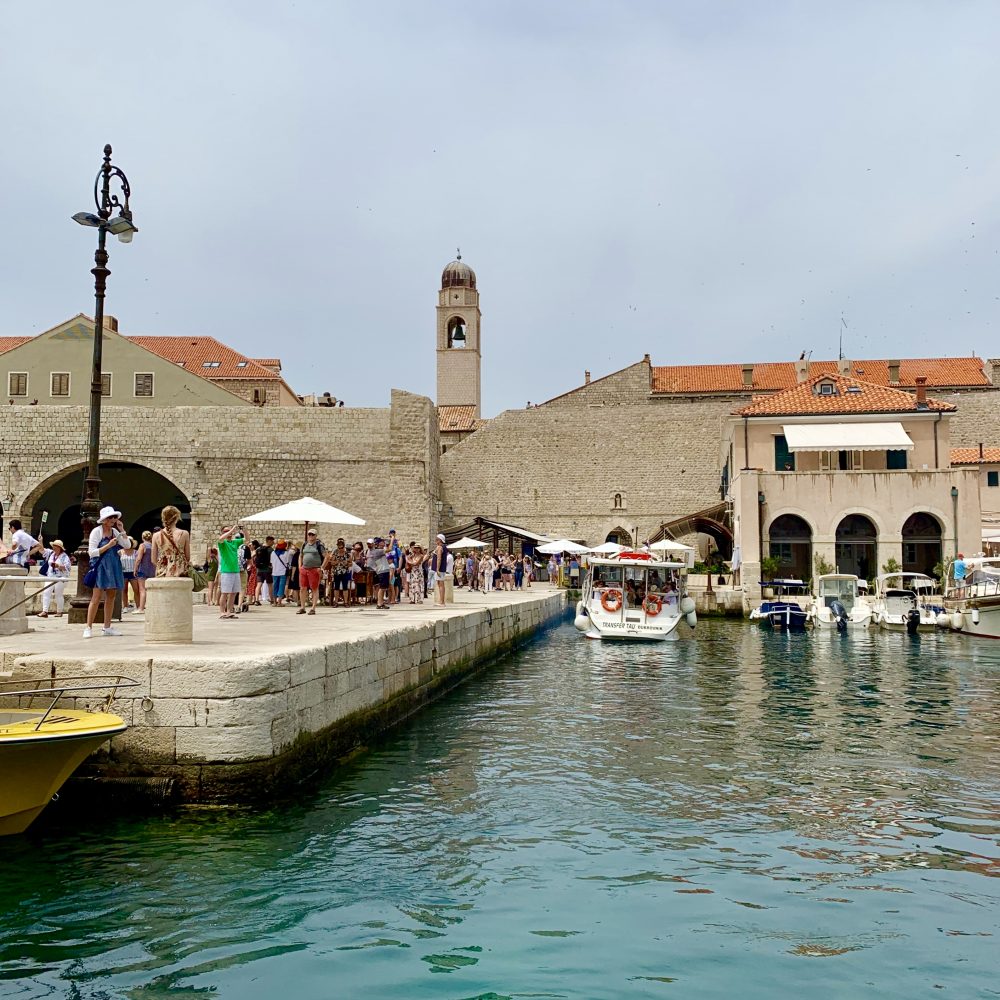
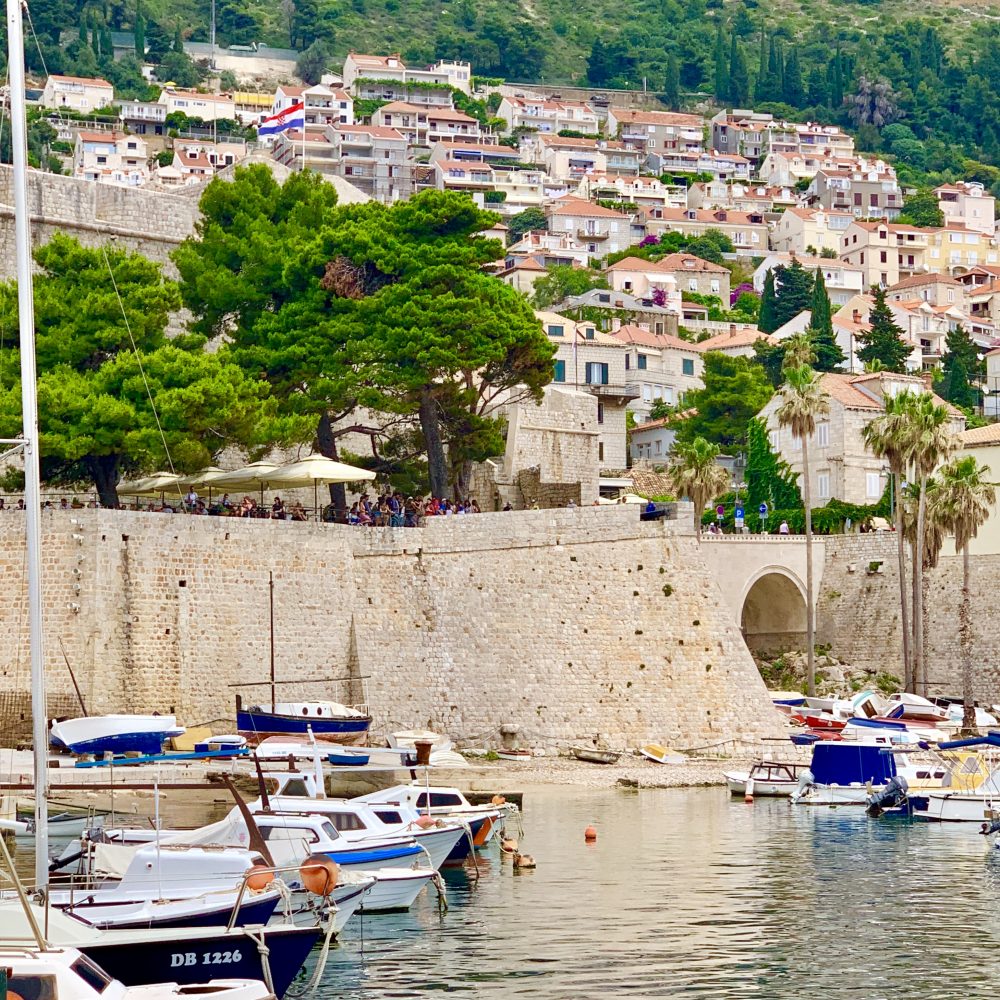
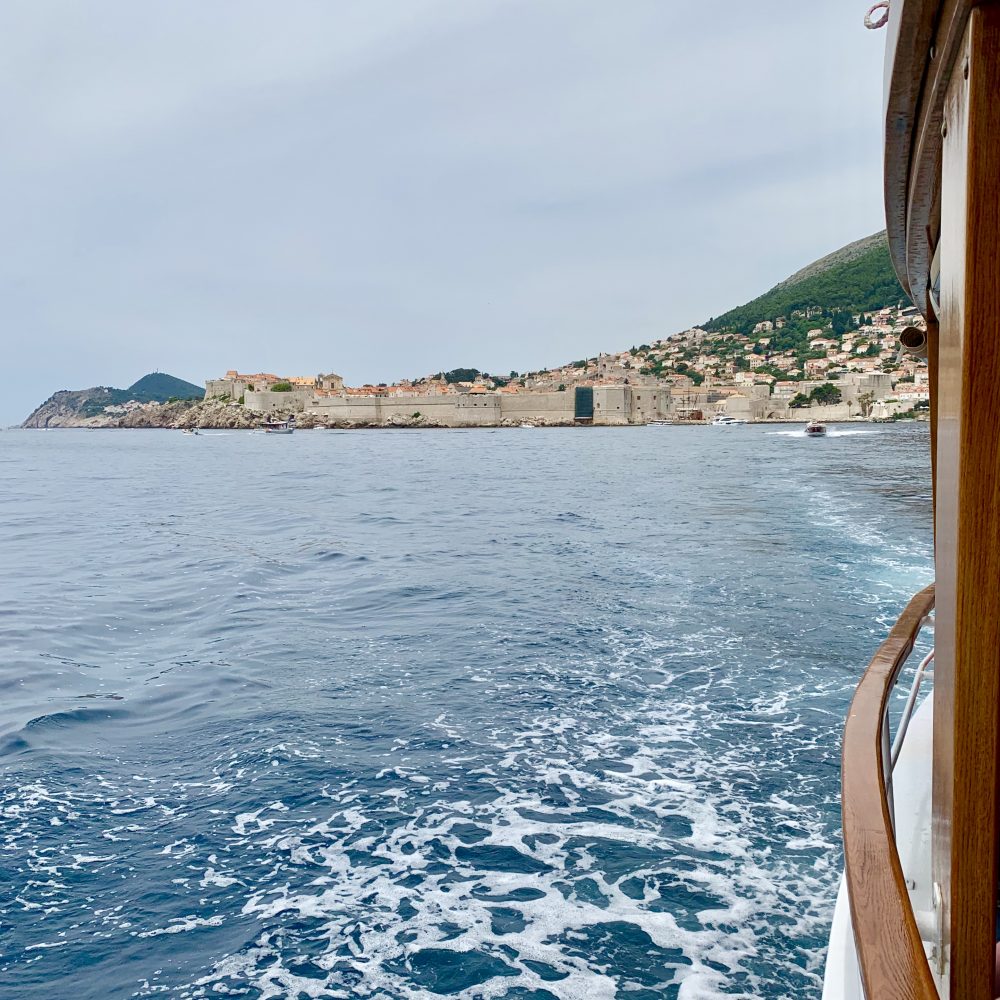
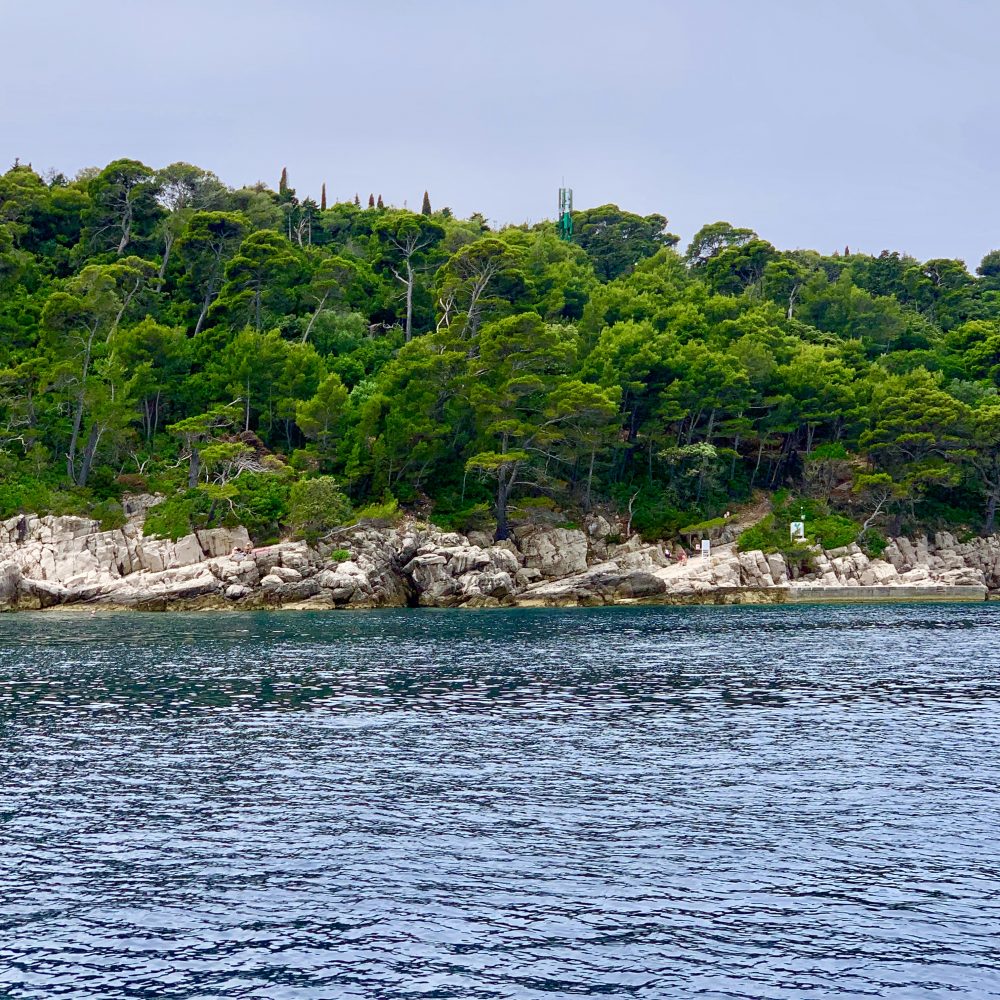
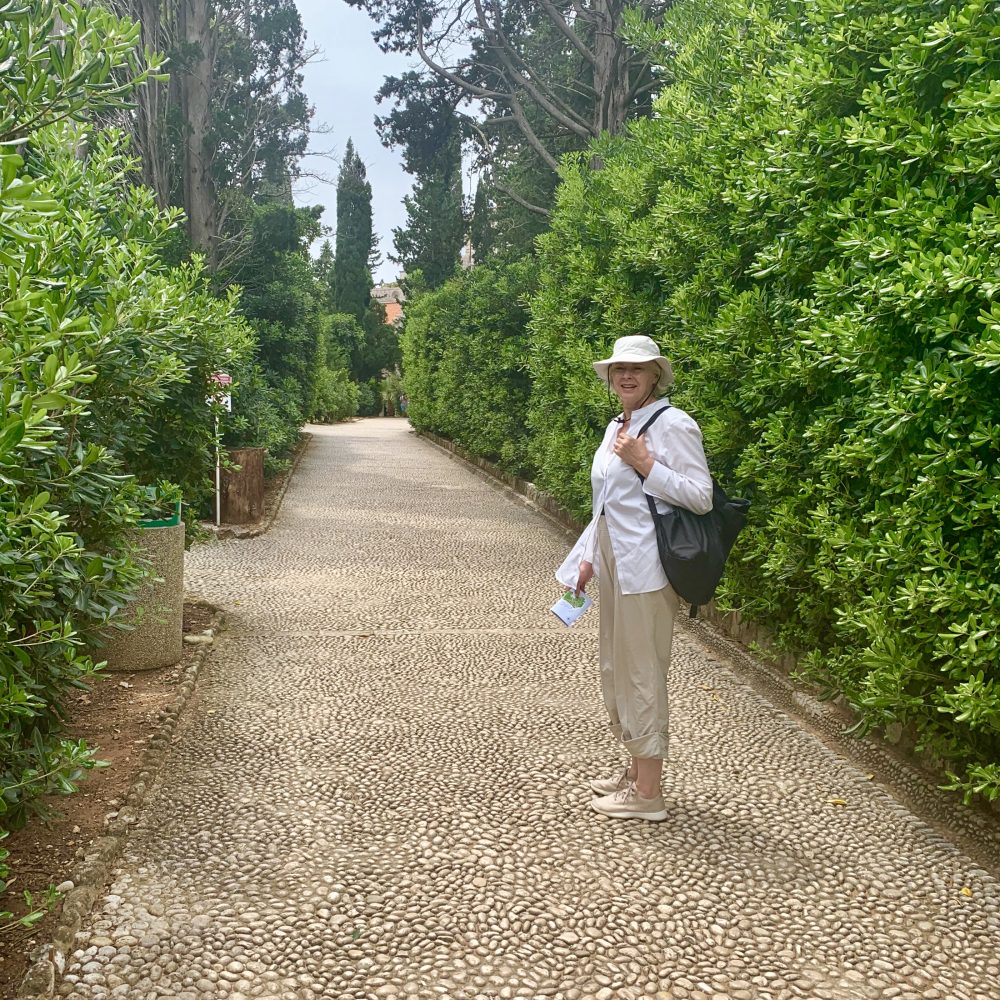
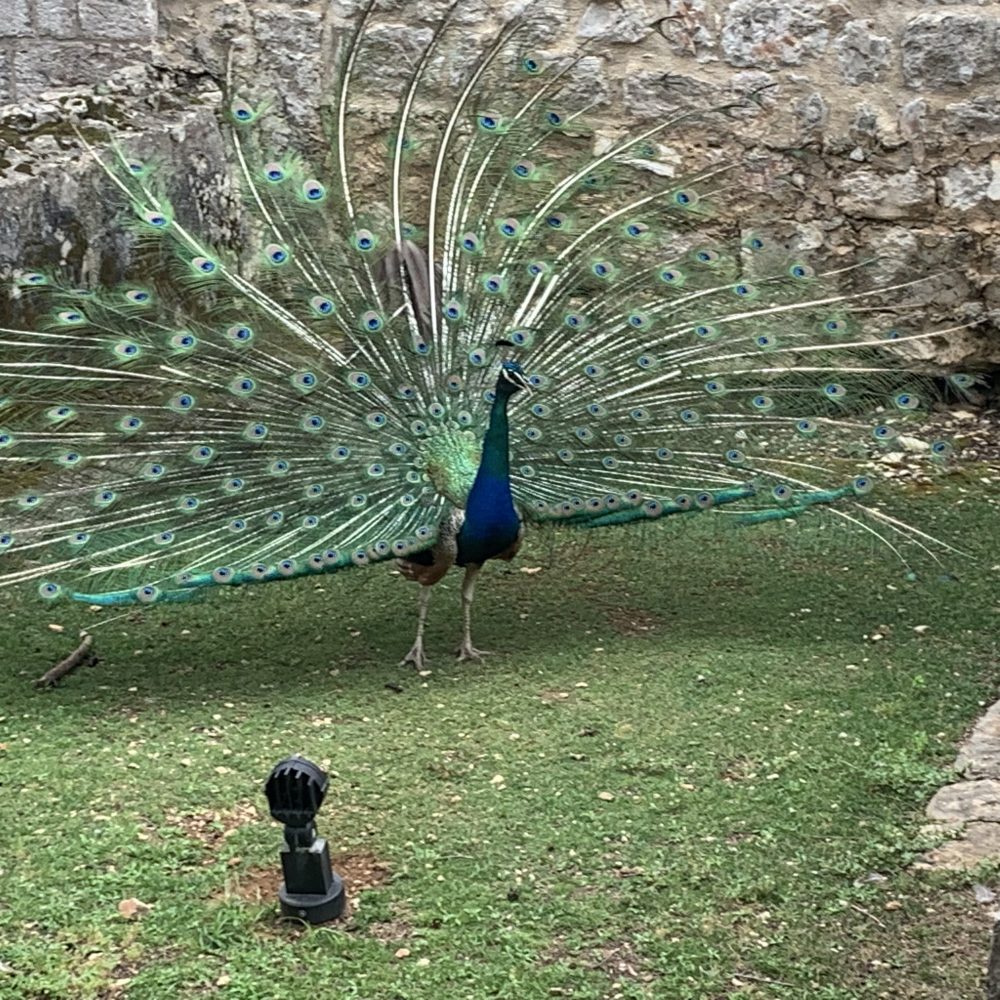
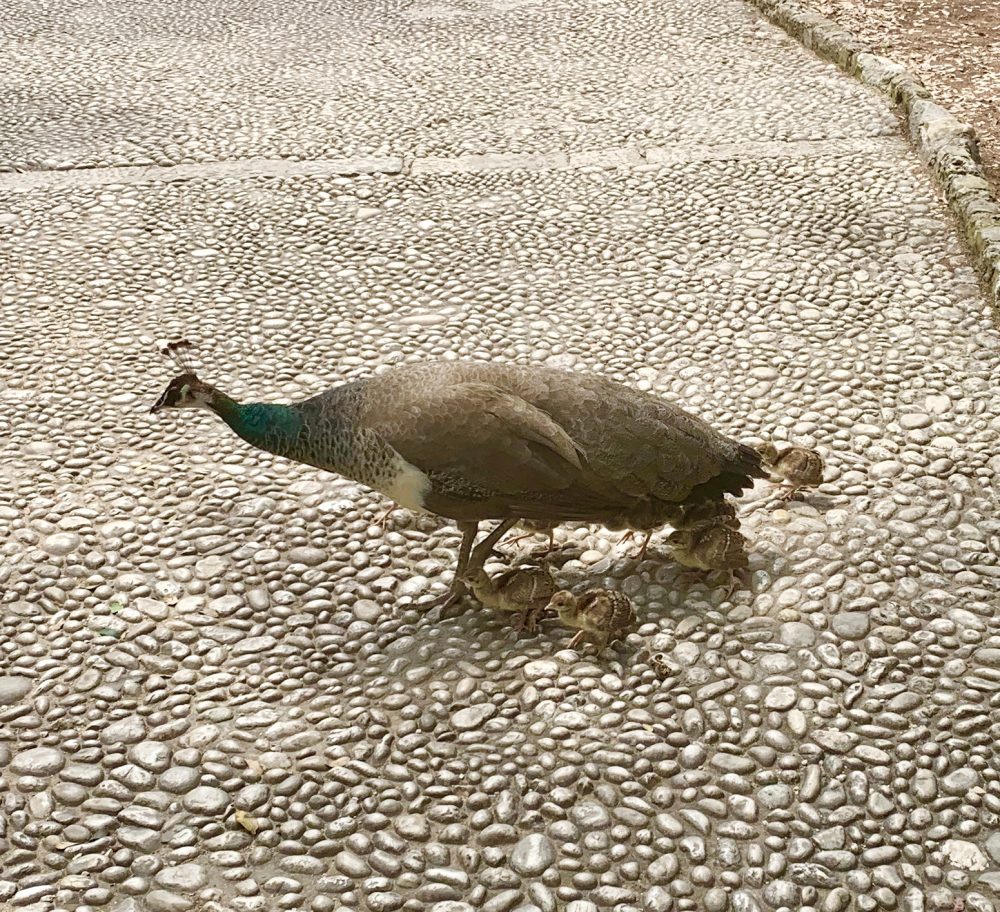
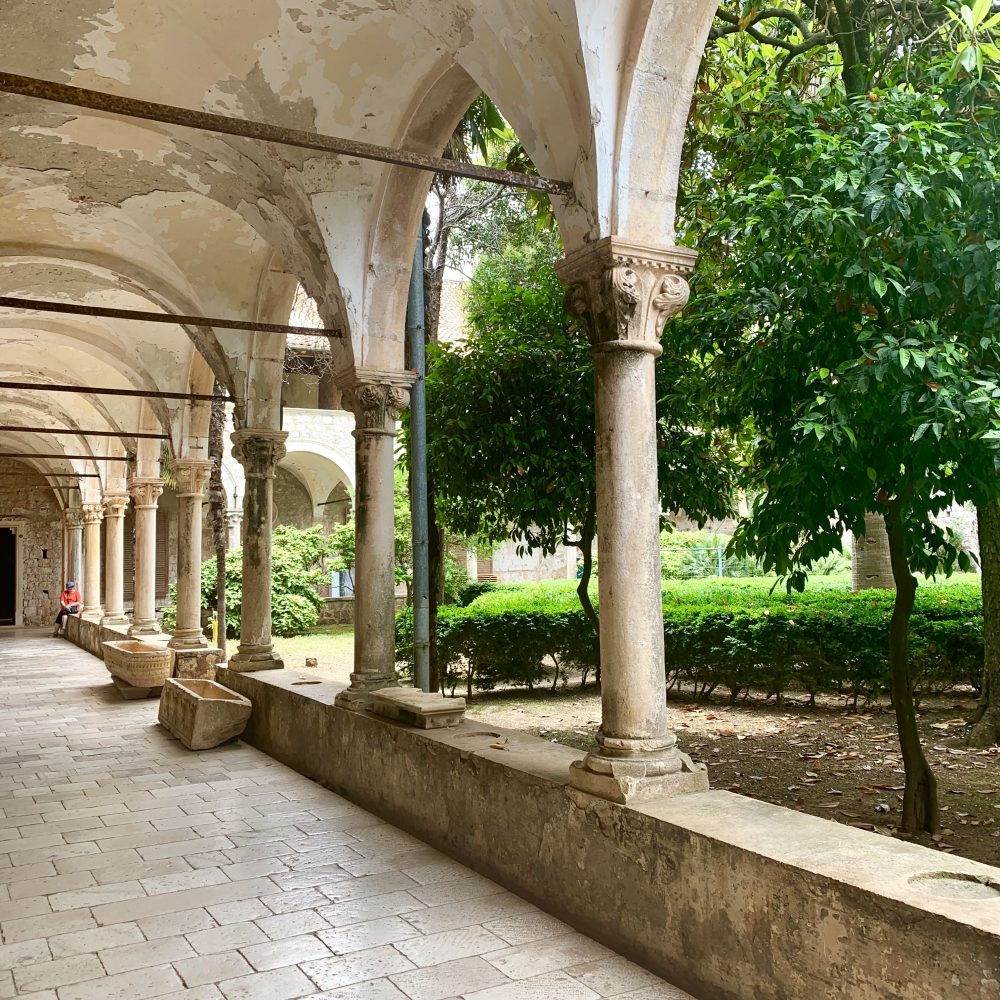

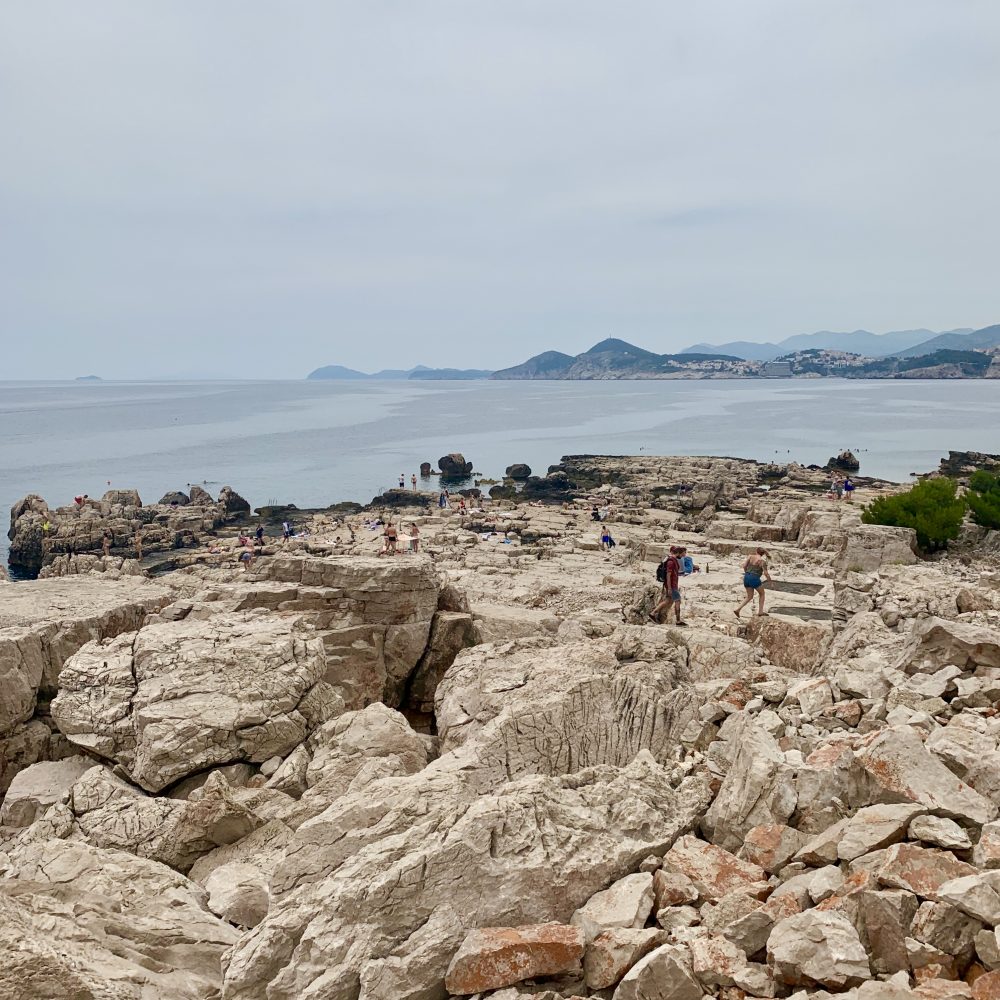
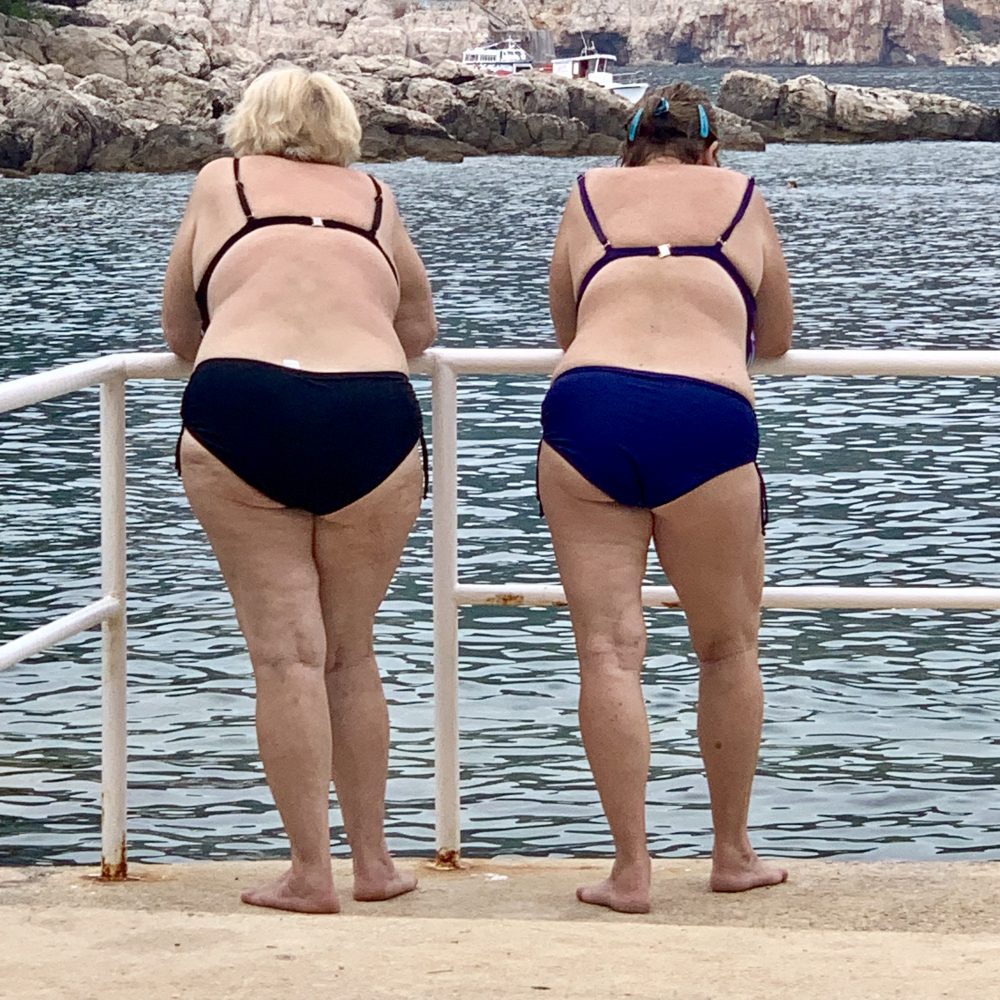
Cavtat
Cavtat is a 45-minute boat ride south of Dubrovnik. Pleasant place for a half day of having lunch and taking a stroll along the seashore. Kind of the Sausalito of Croatia.
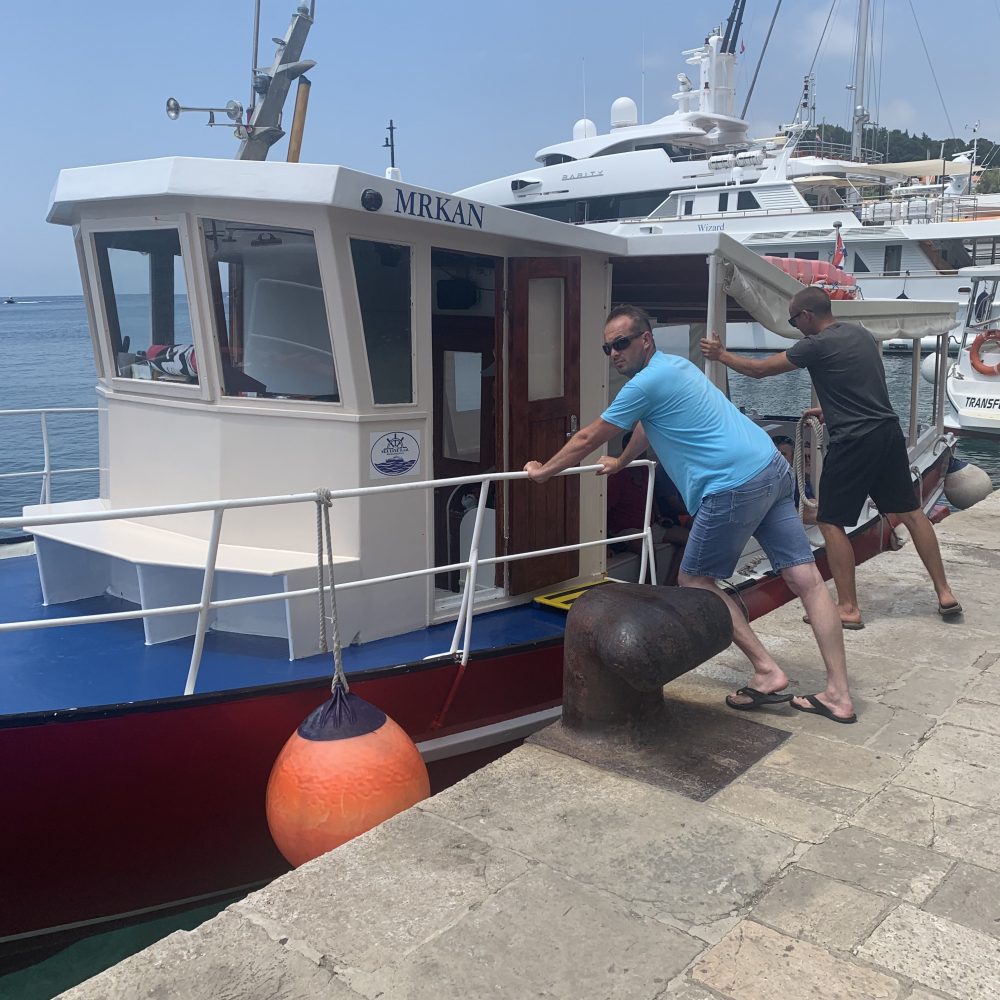
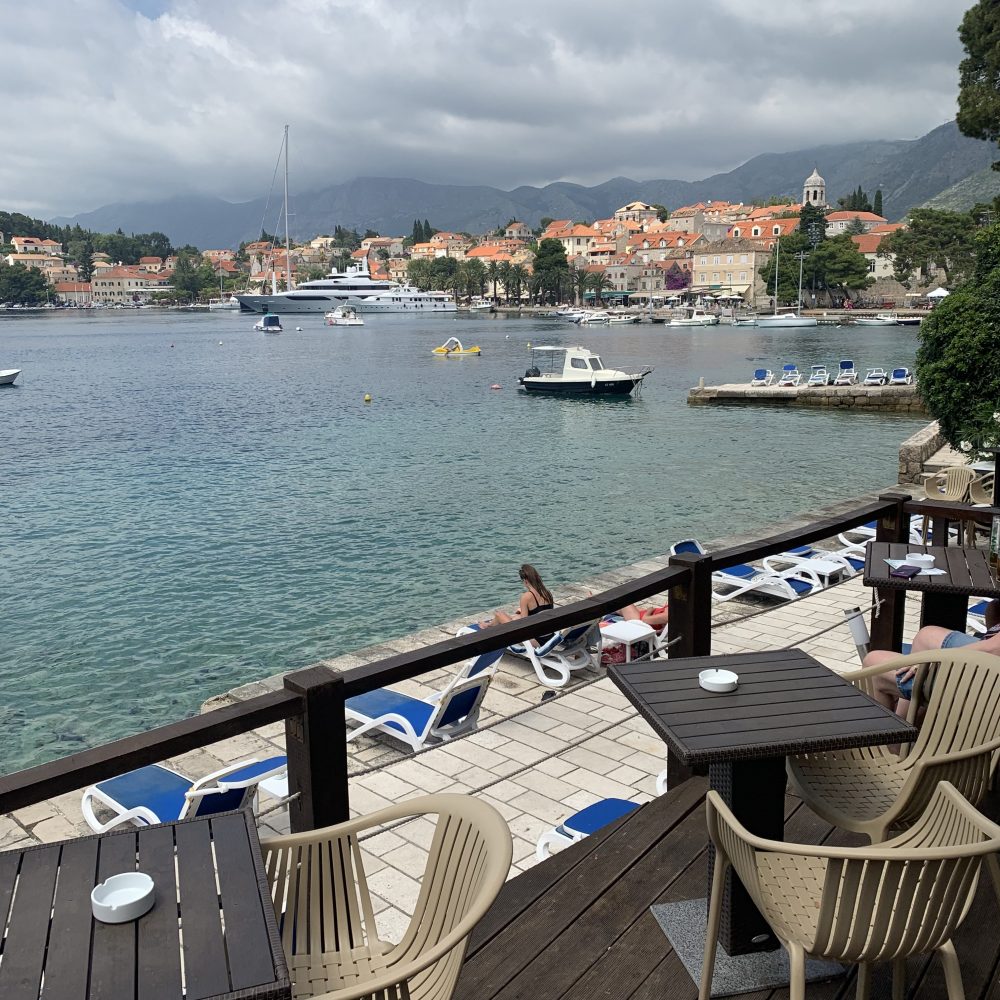
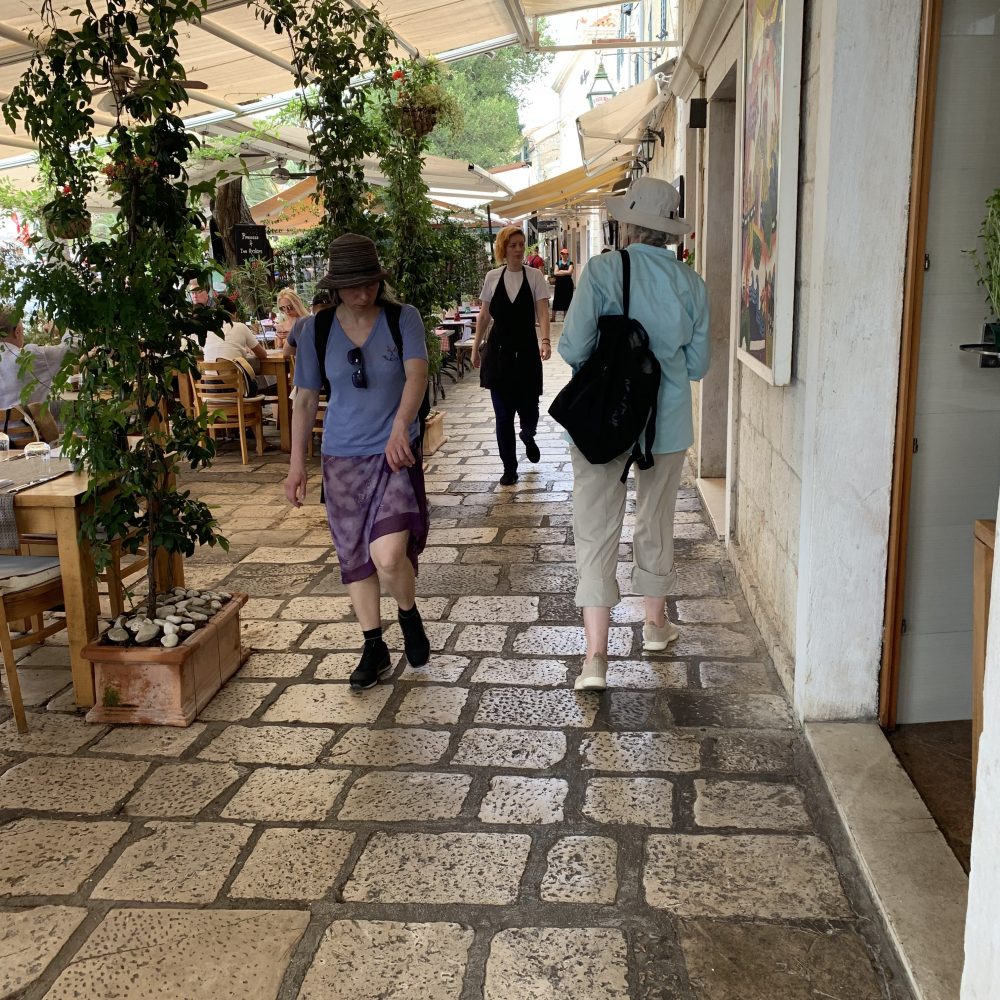
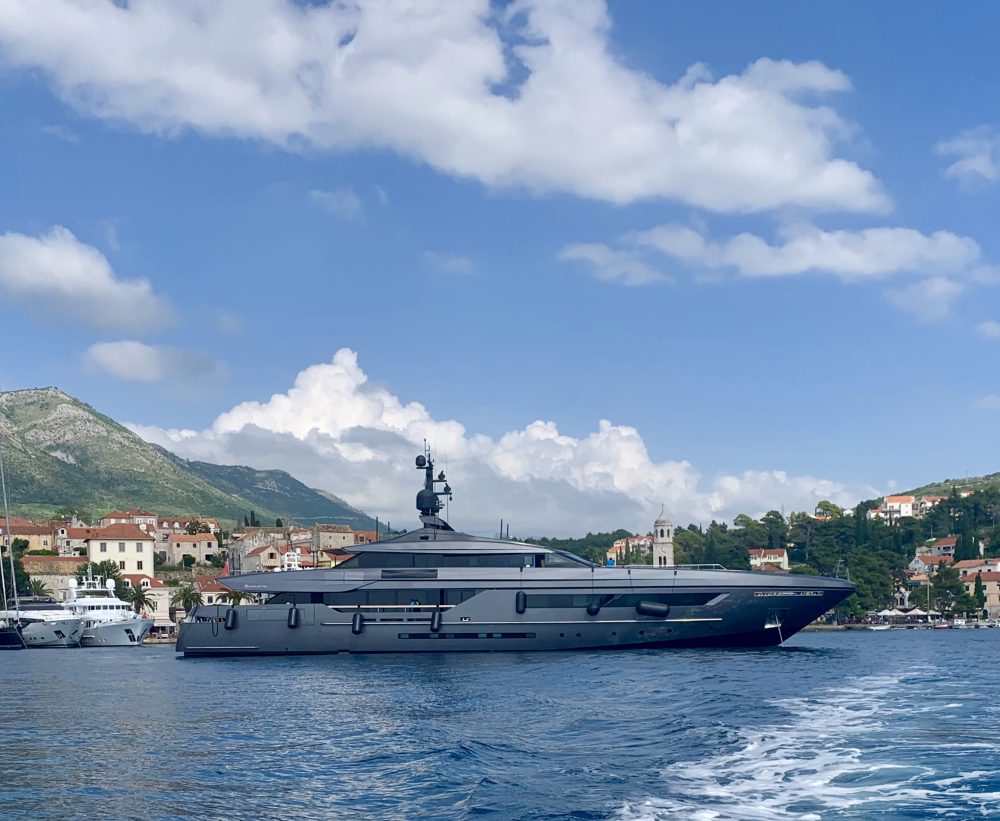
Kayaking
Robert went kayaking with a group of fellow tourists. Left Dubrovnik at 9 AM and circled the island of Lokrum, stopping at a small cove to swim before returning to Dubrovnik at noon.
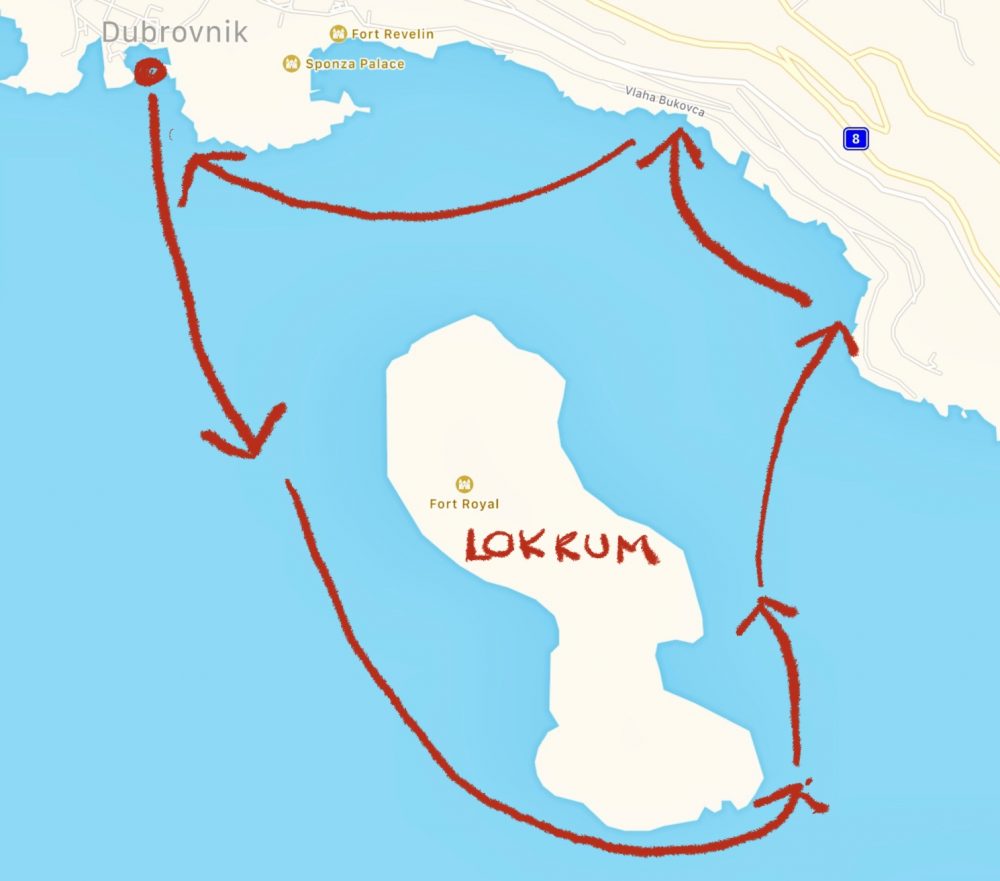
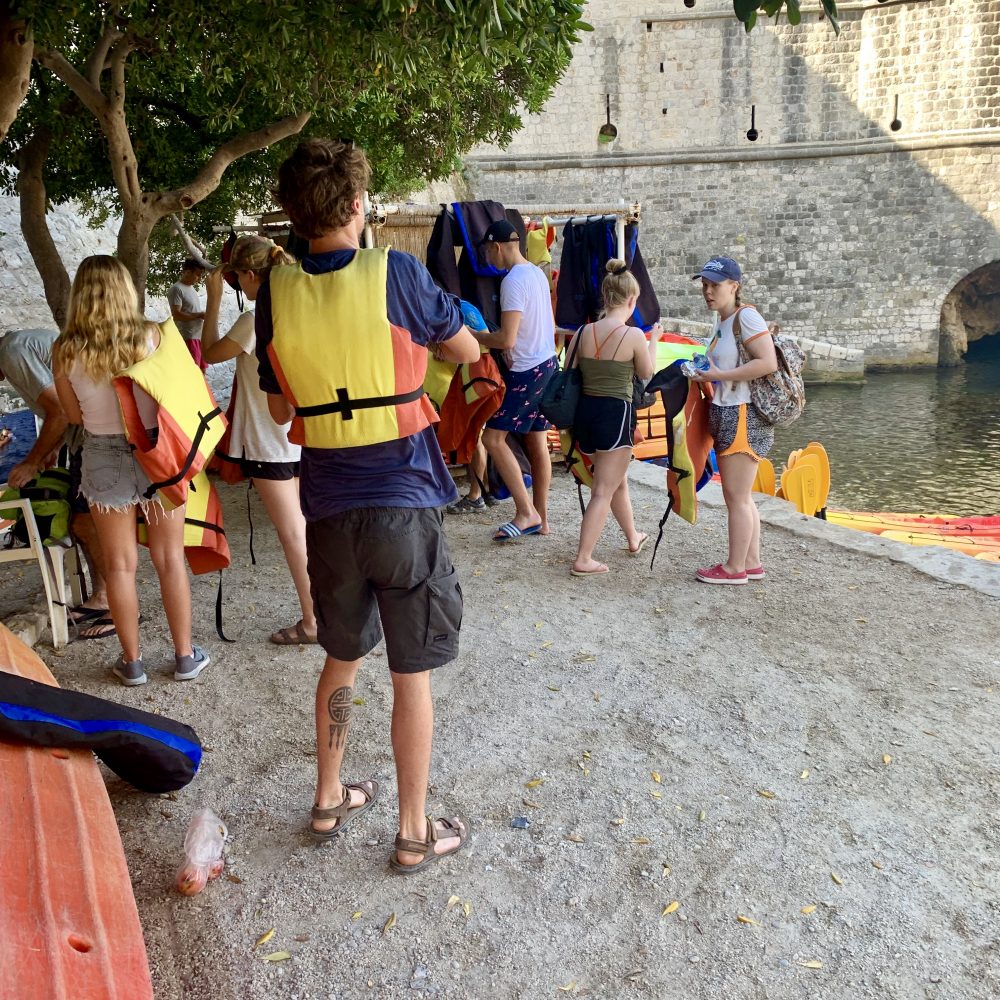
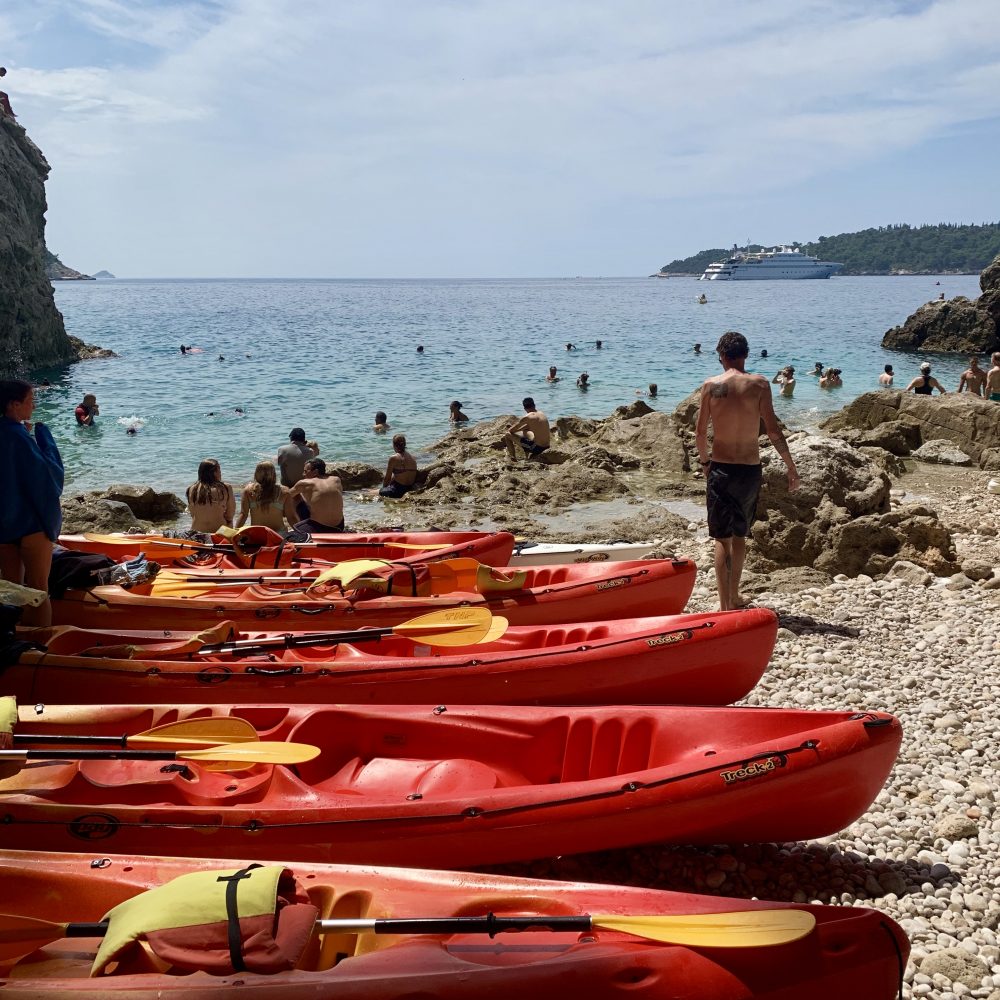
Hrana i Piće
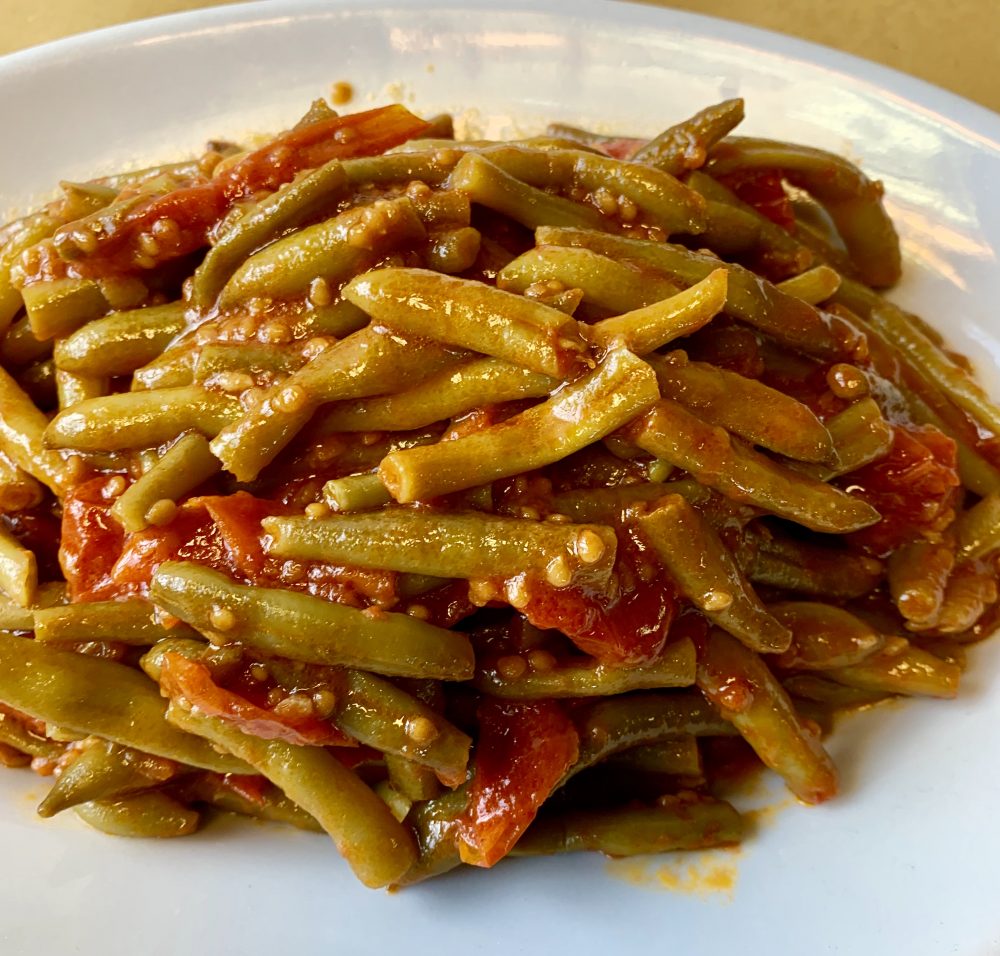
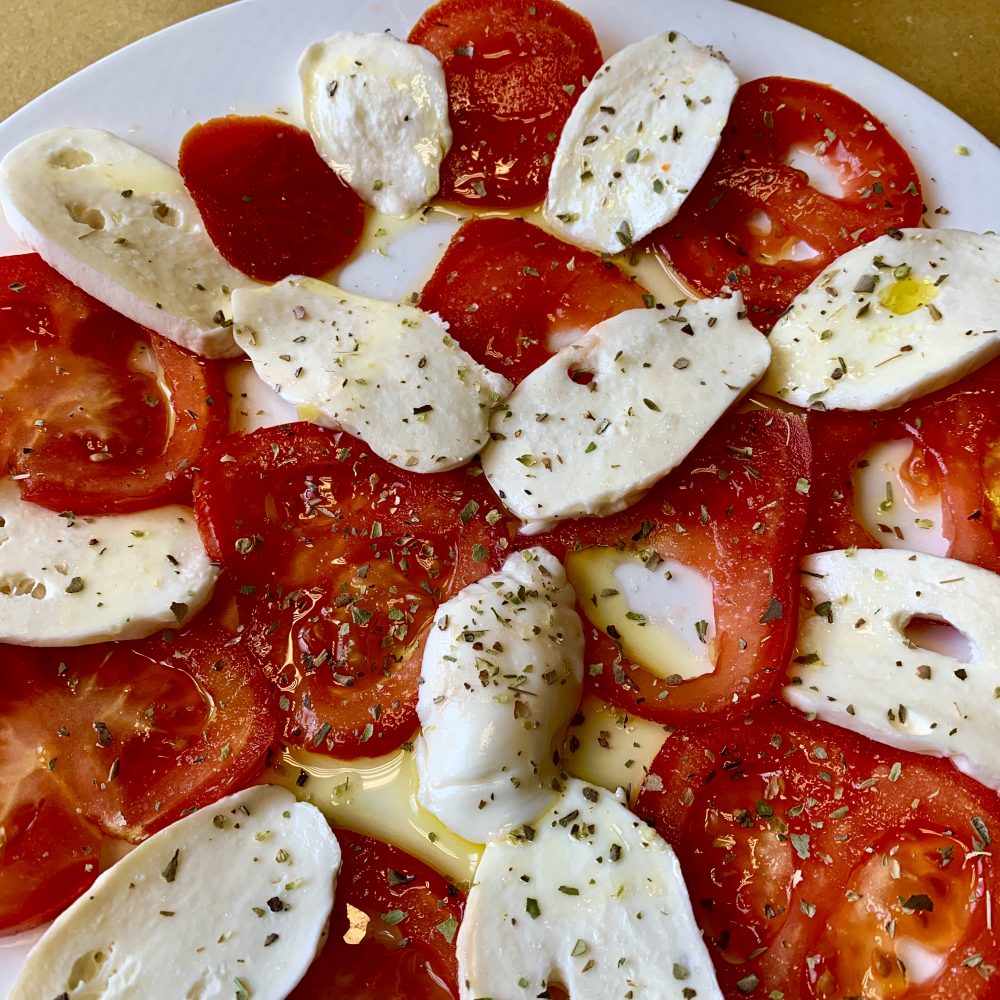
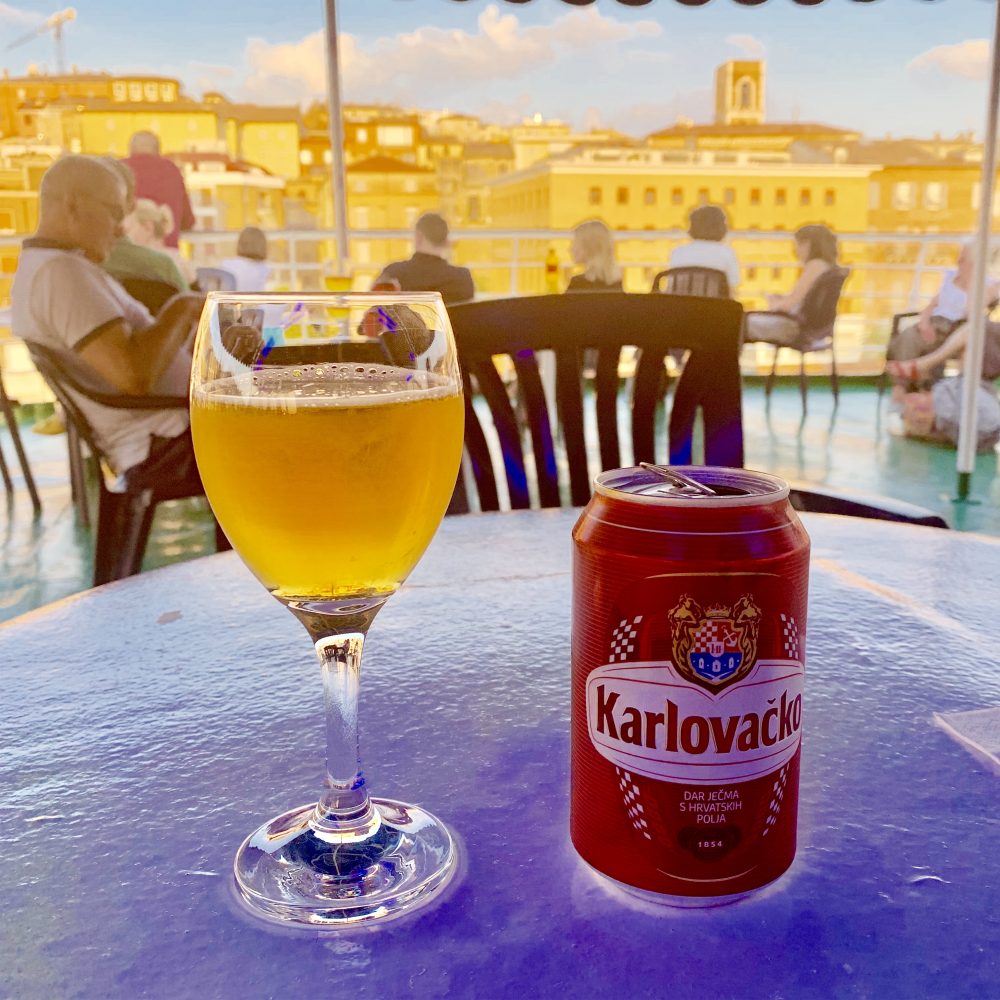
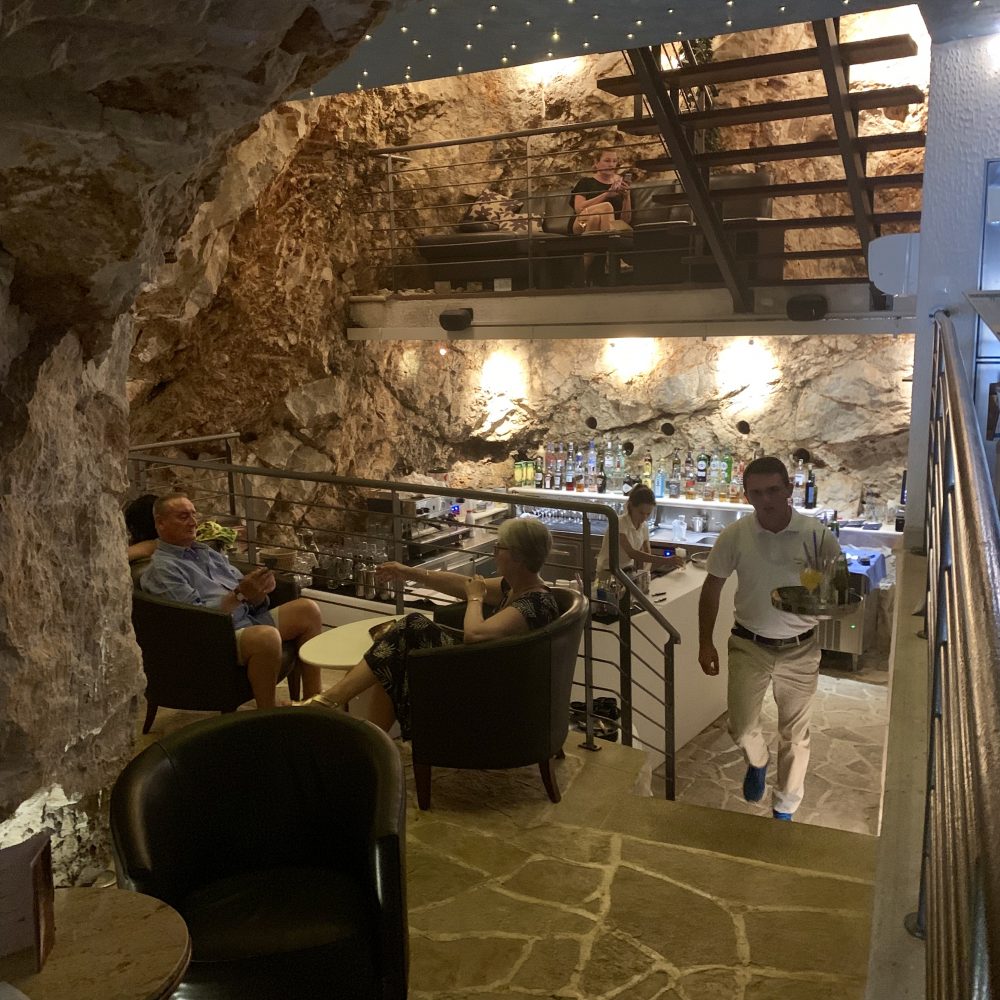
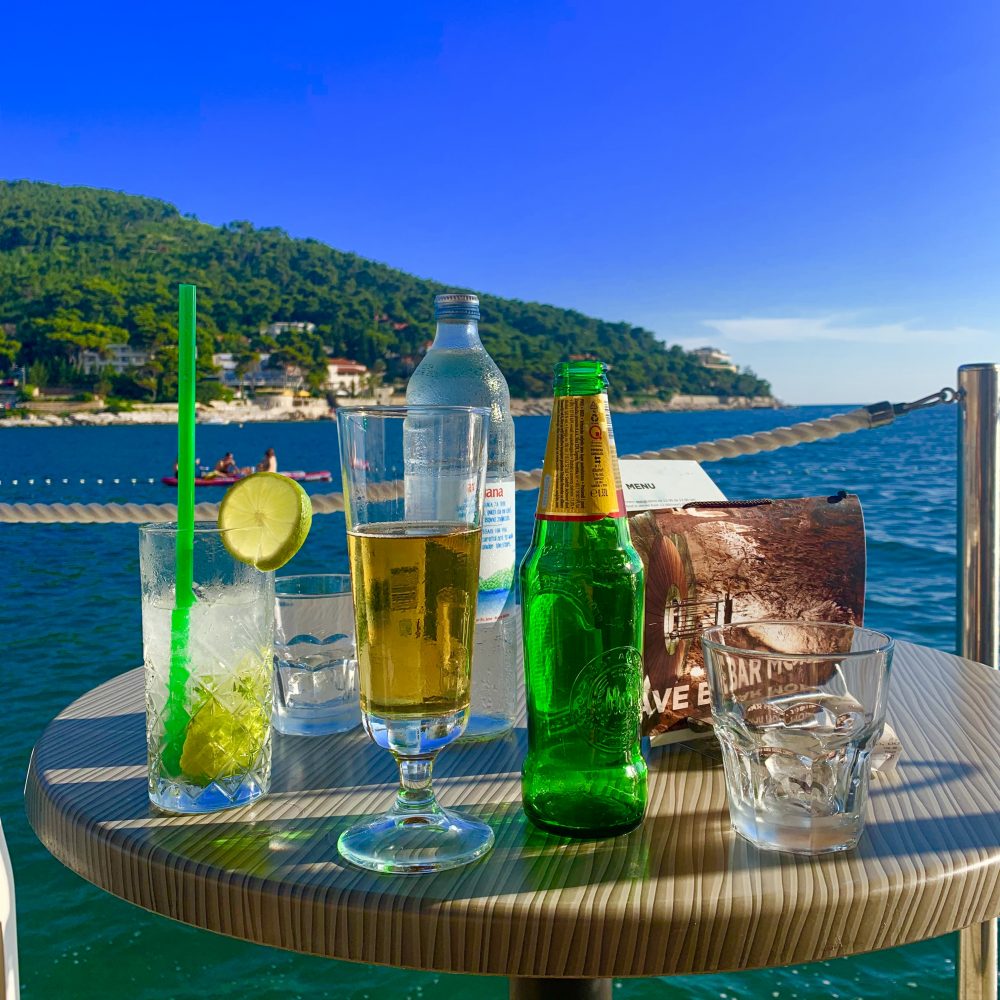
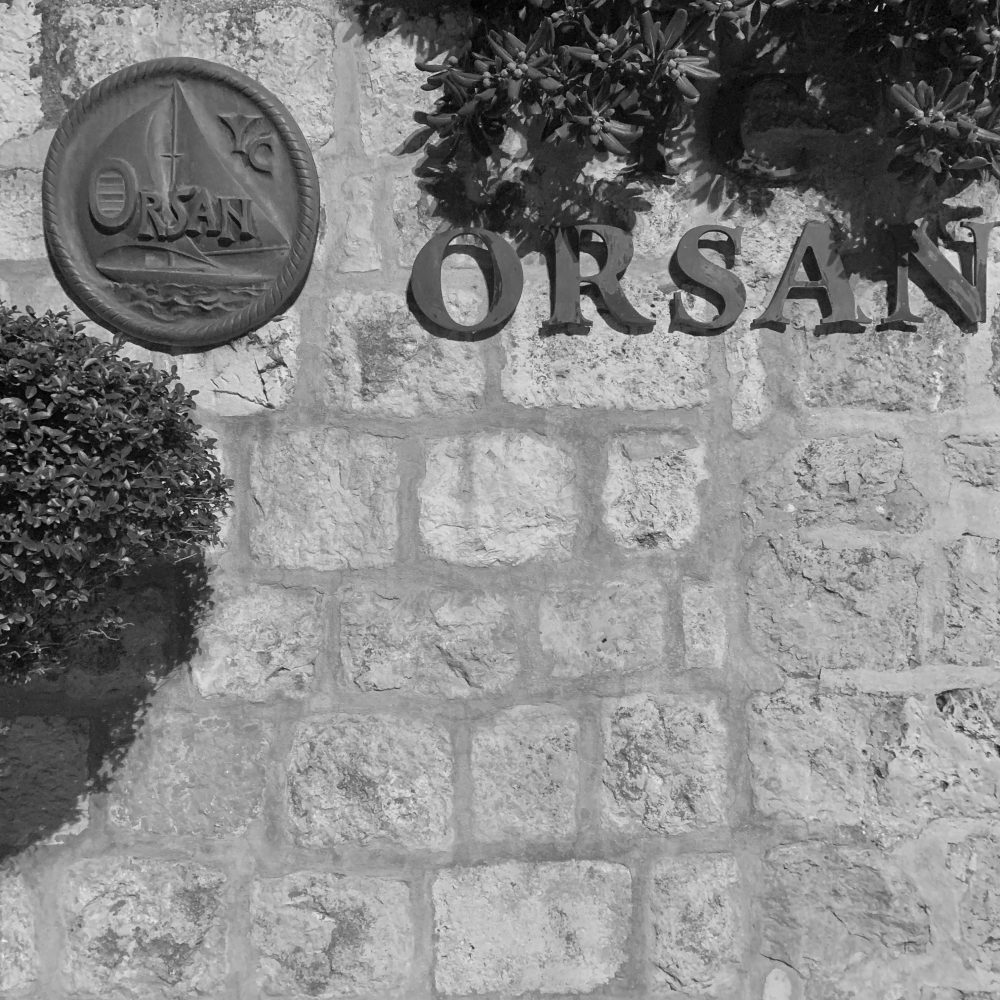
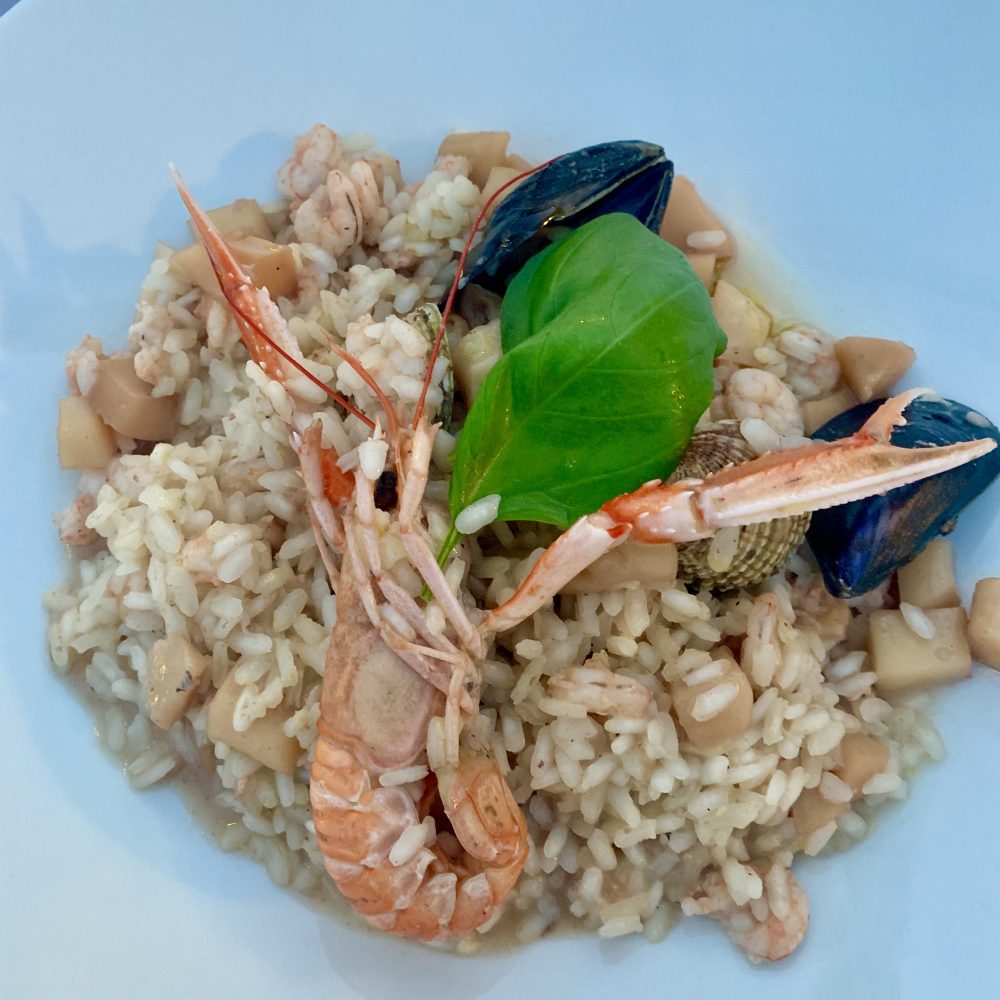
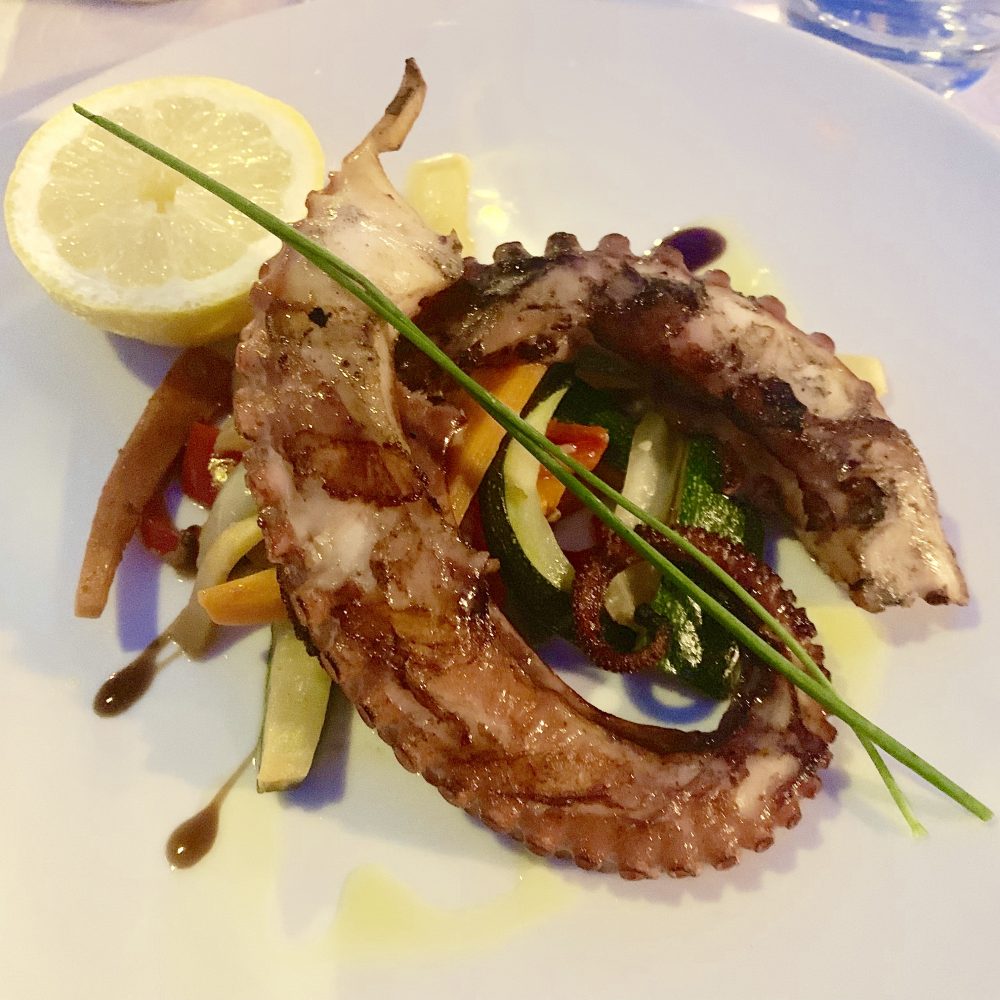
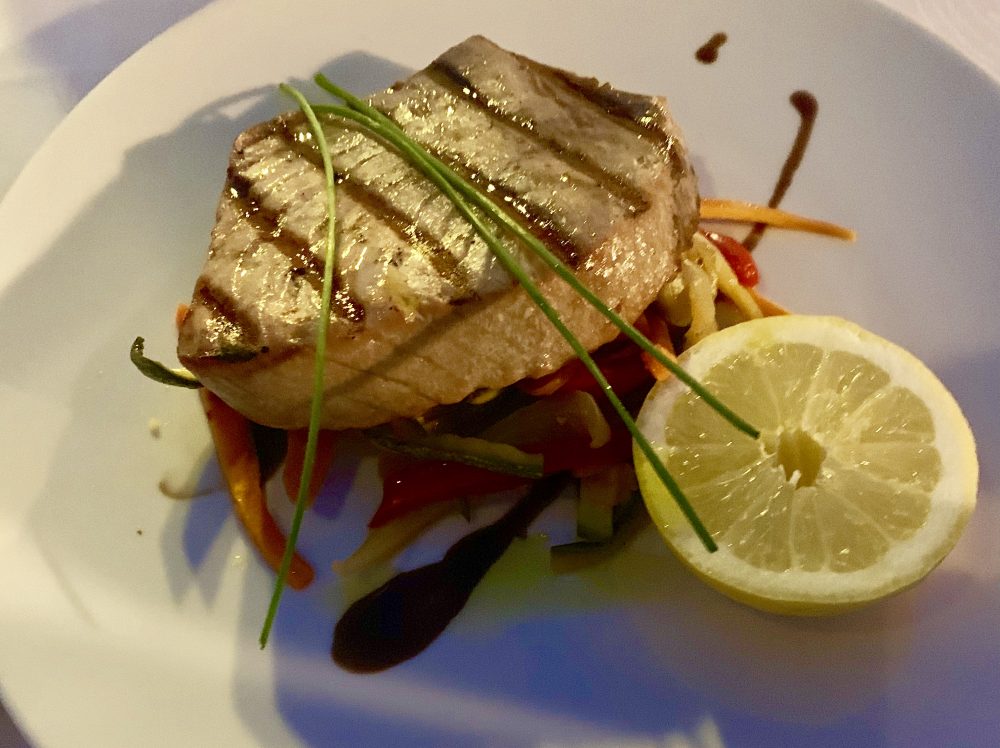
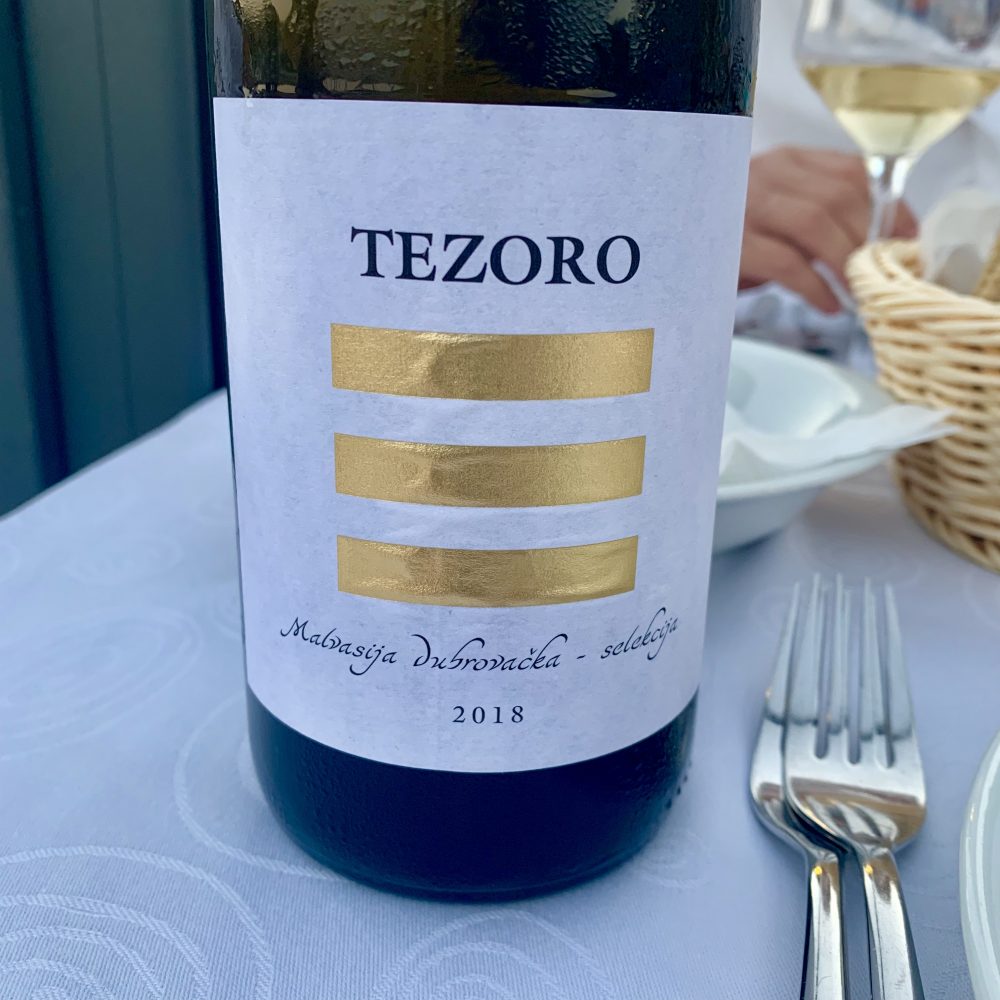
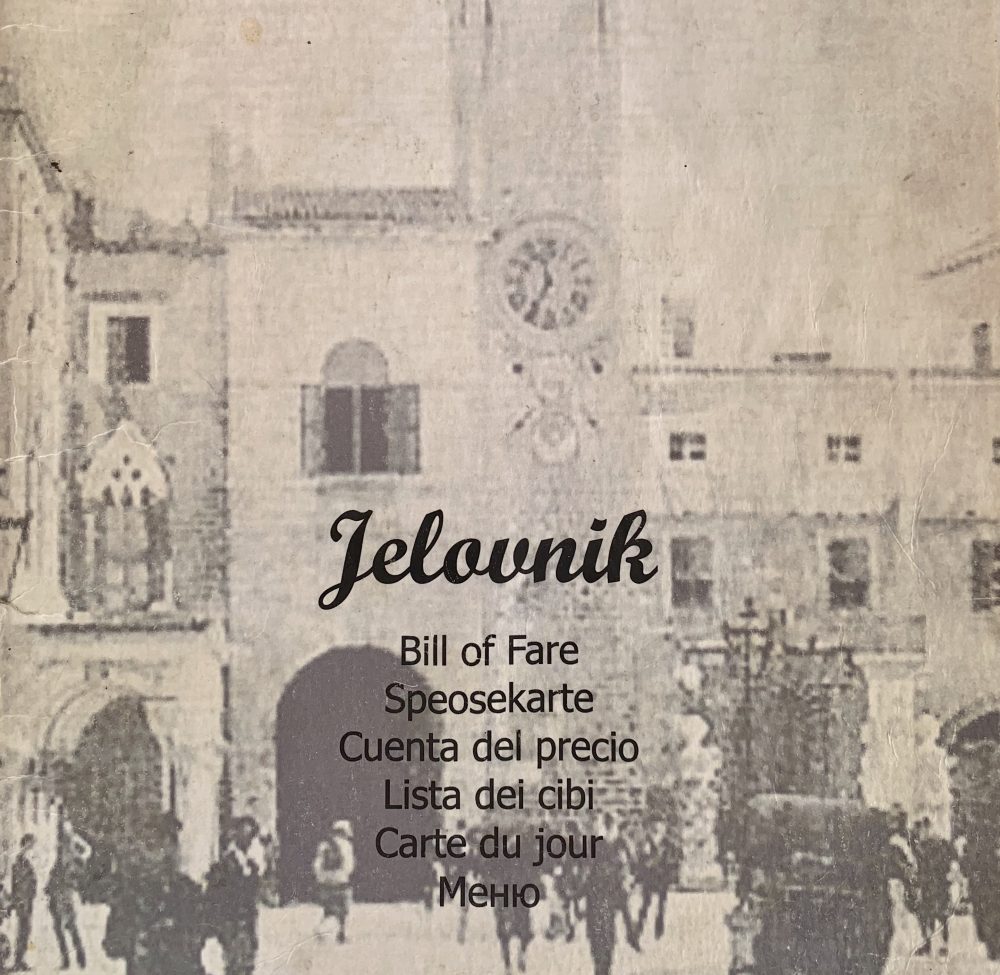
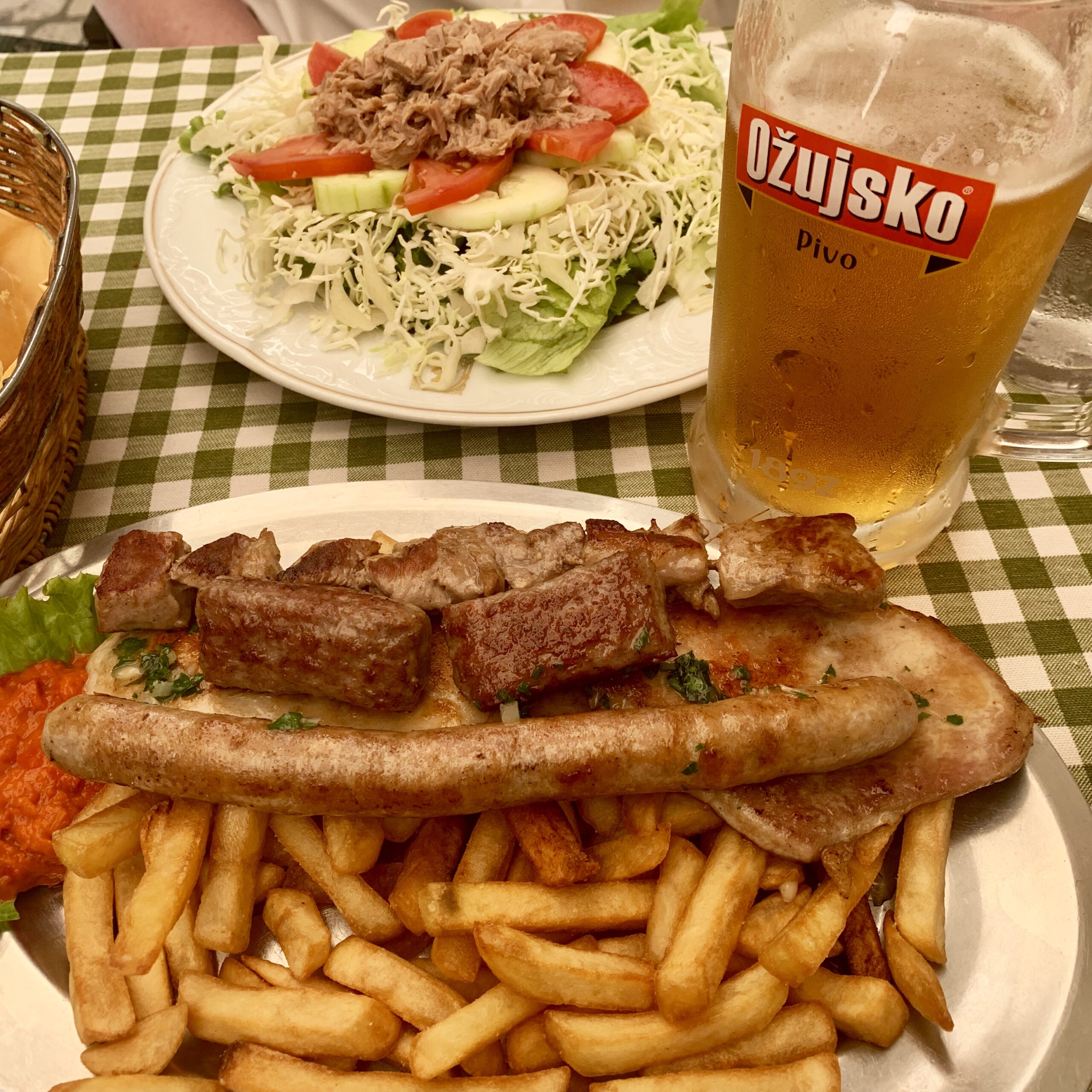
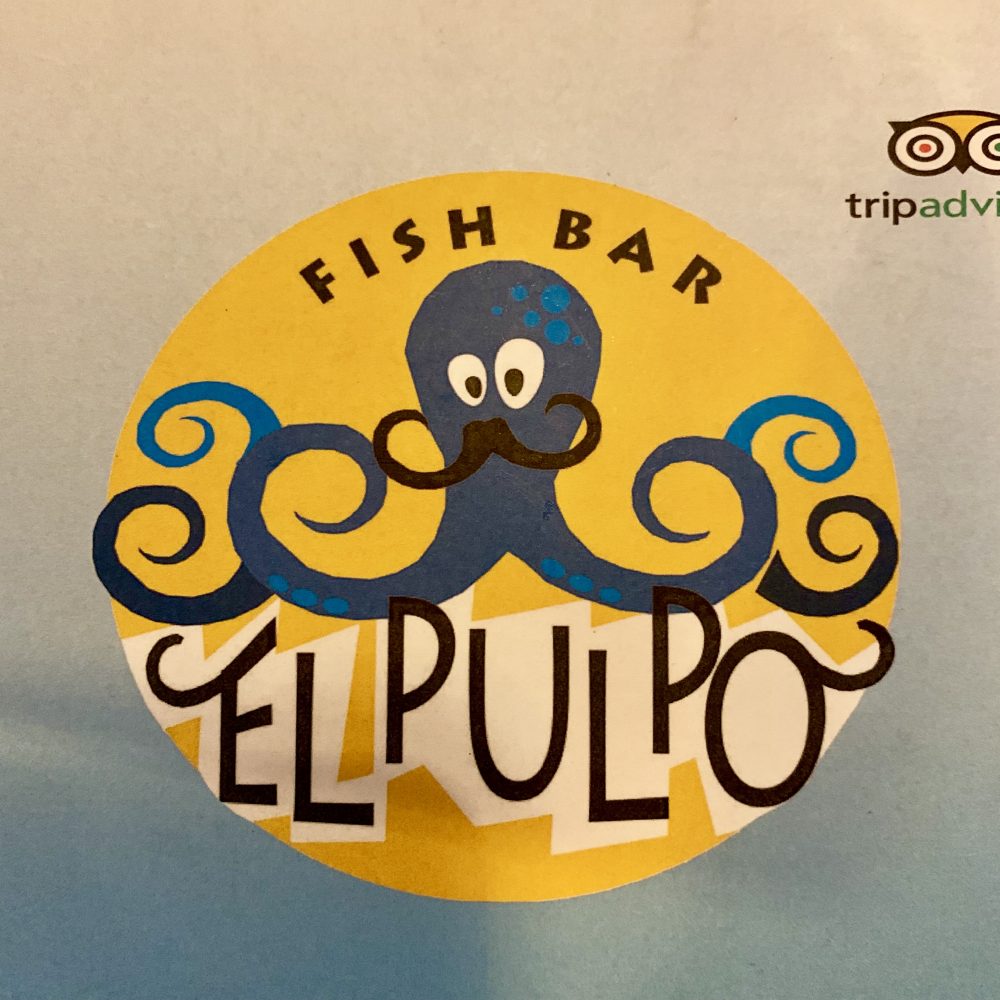
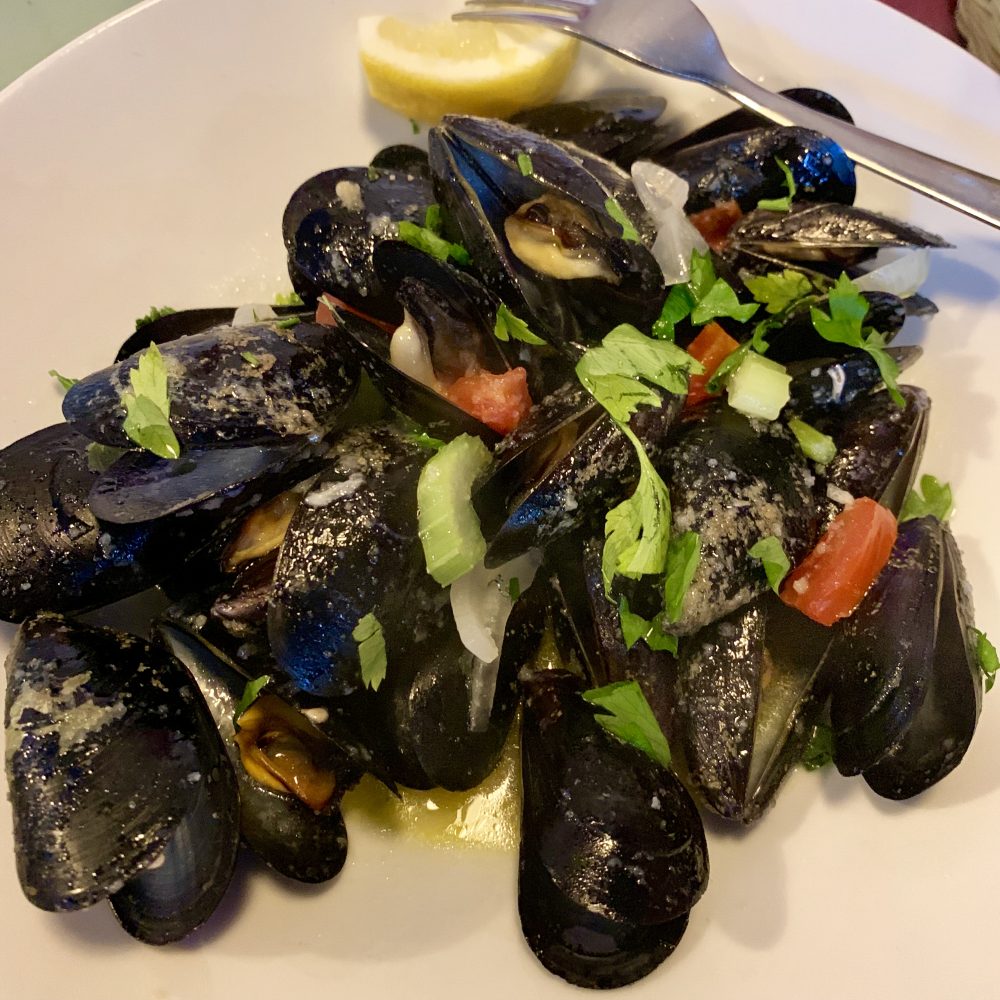
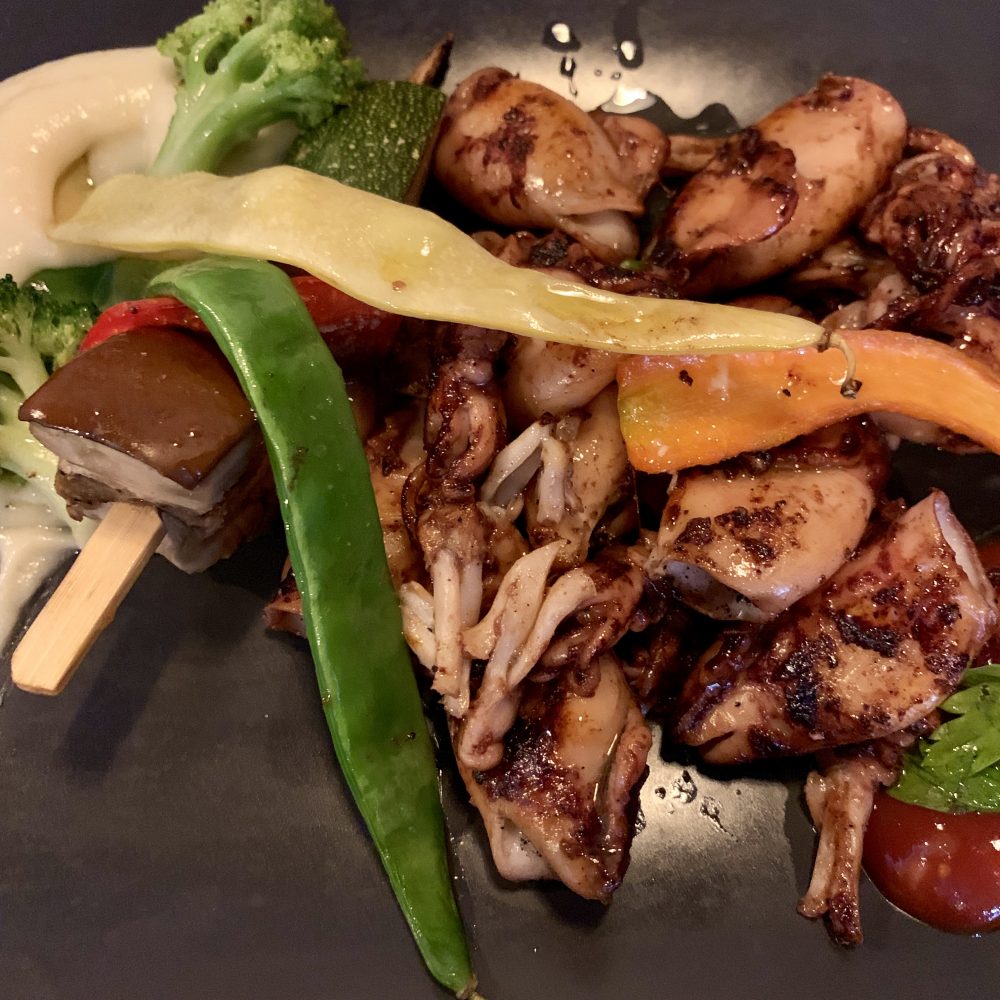
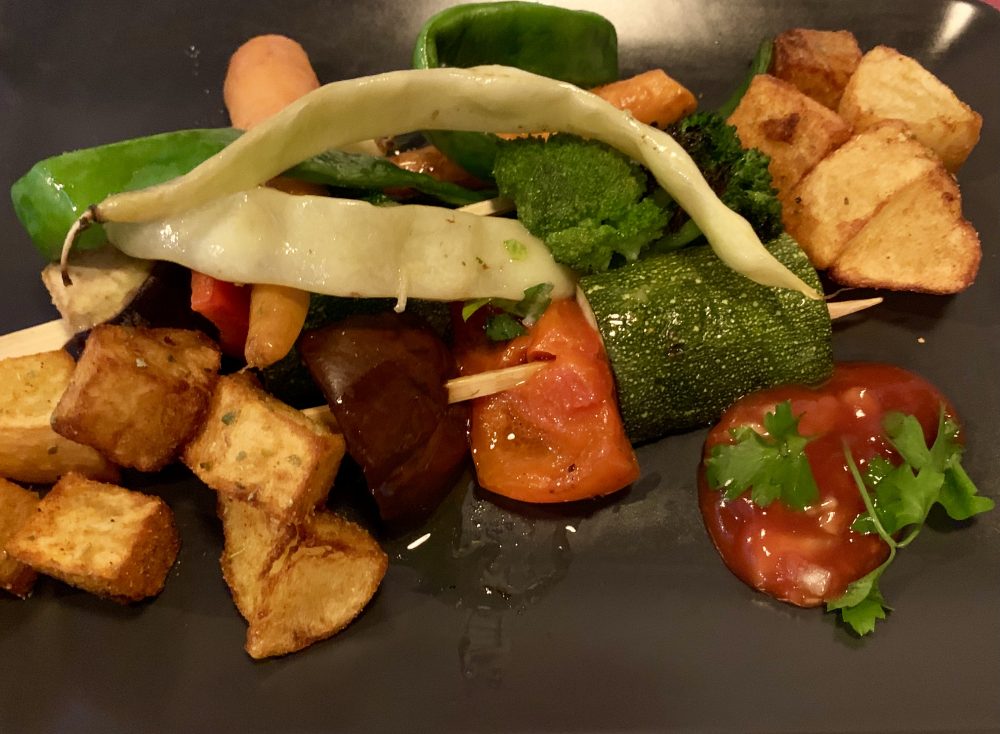
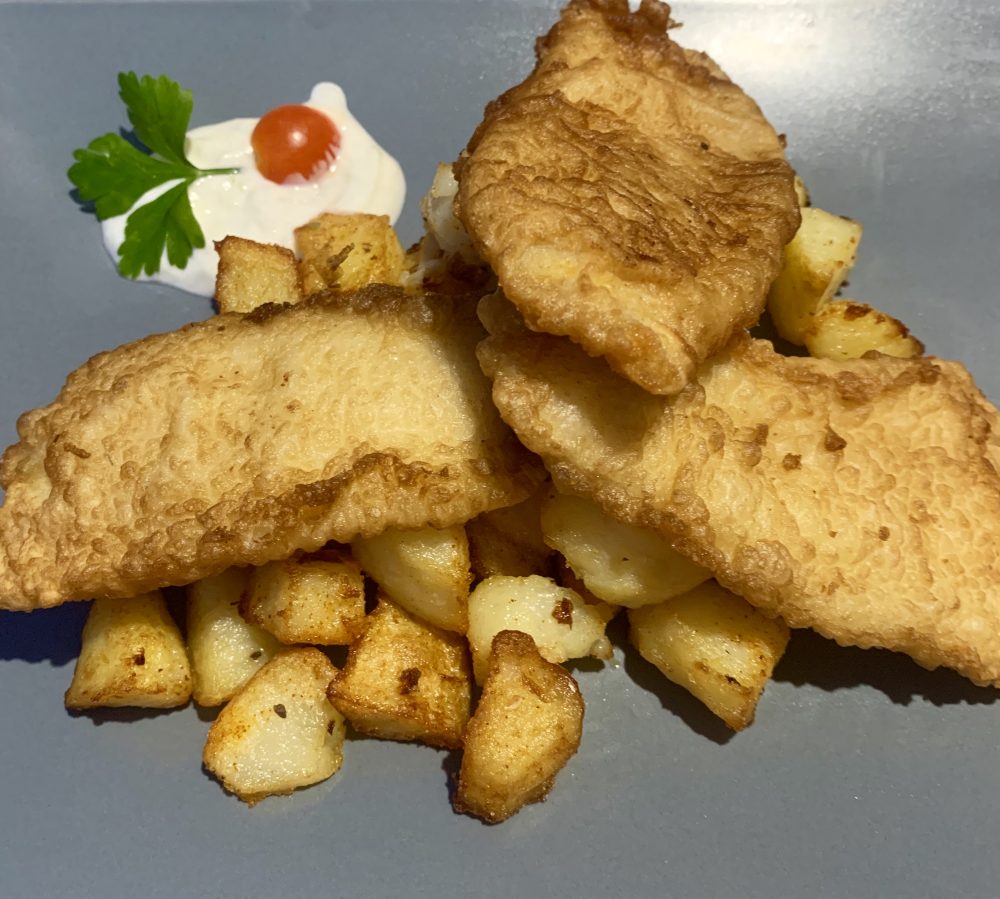
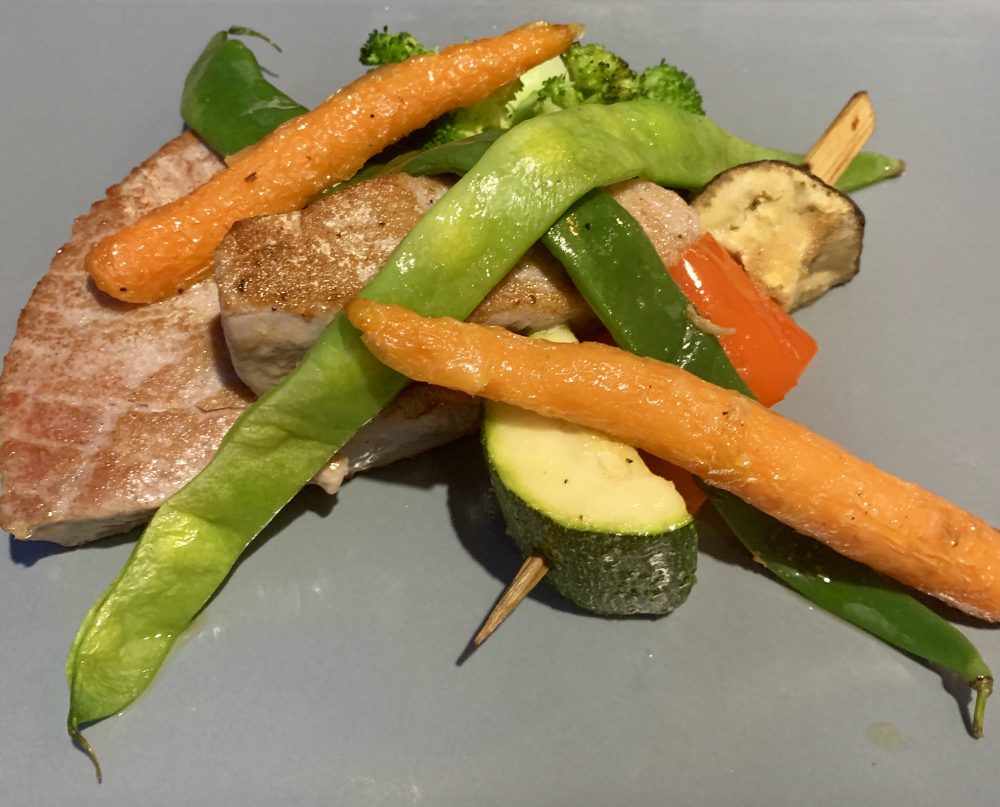
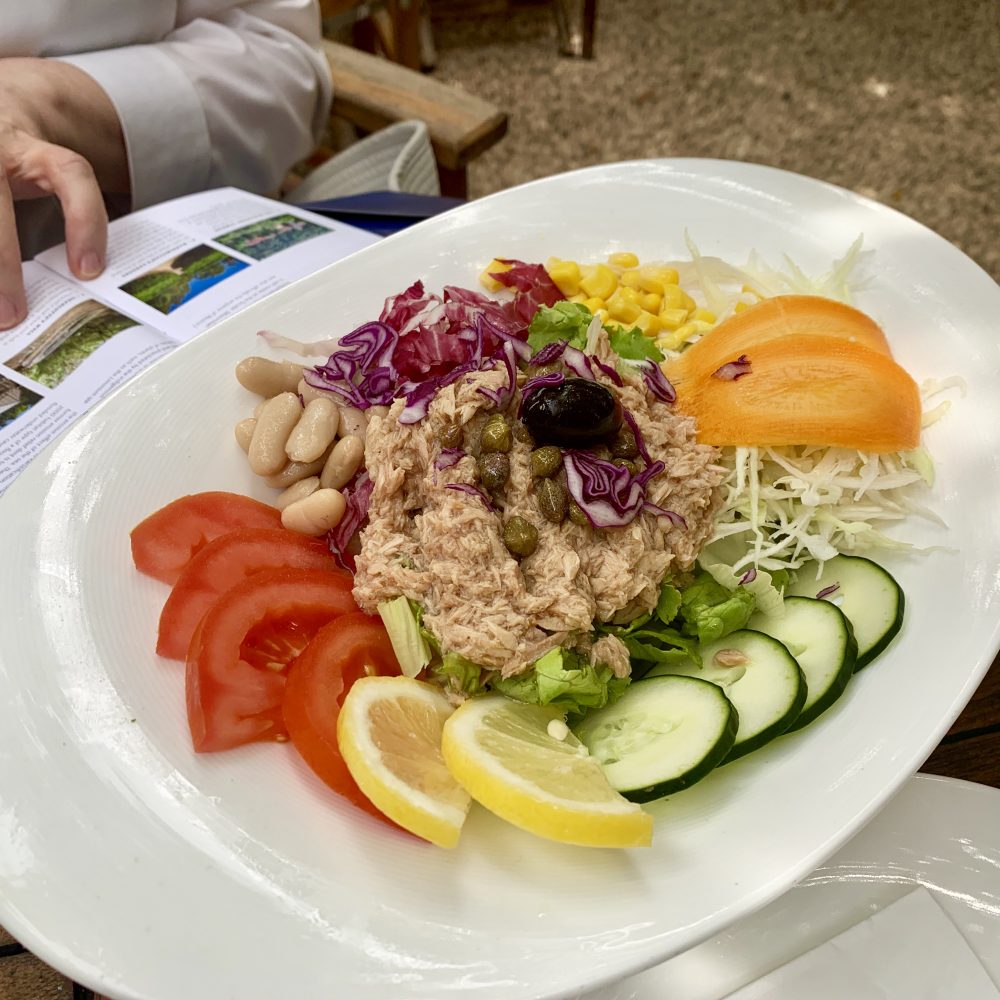
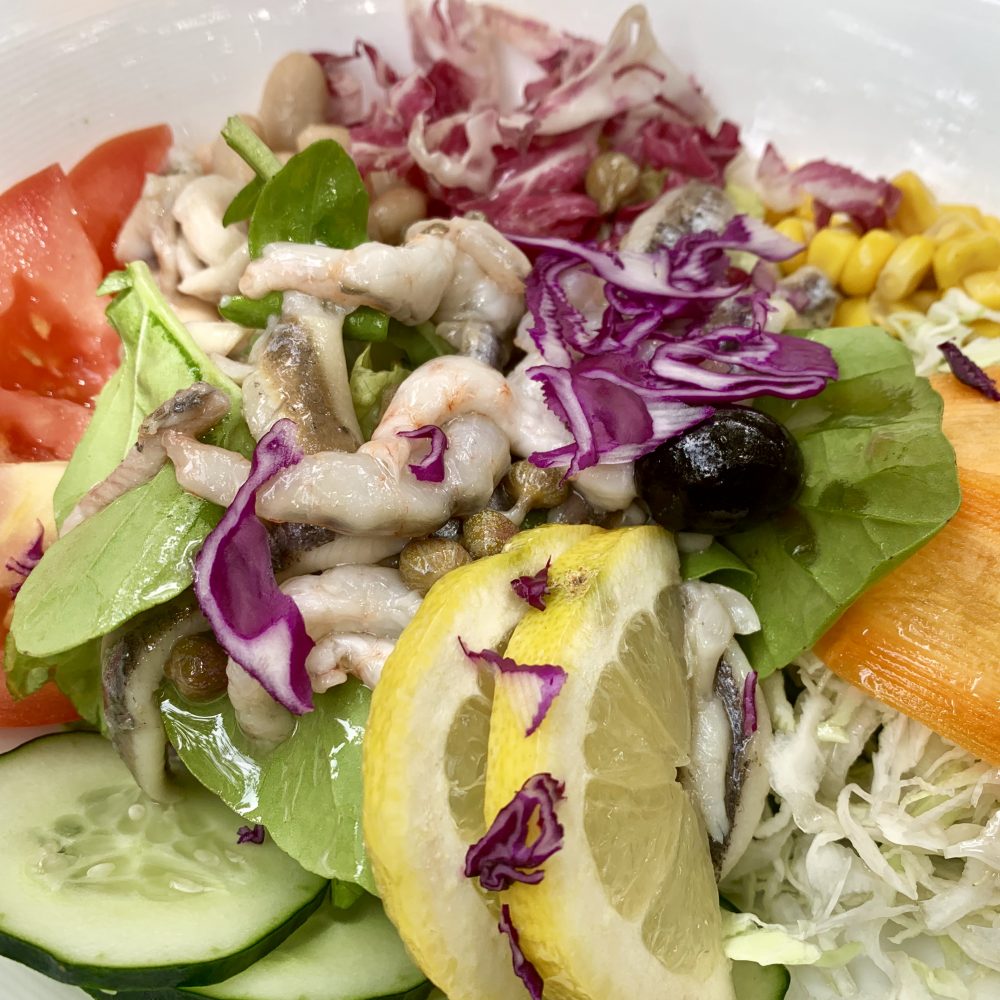
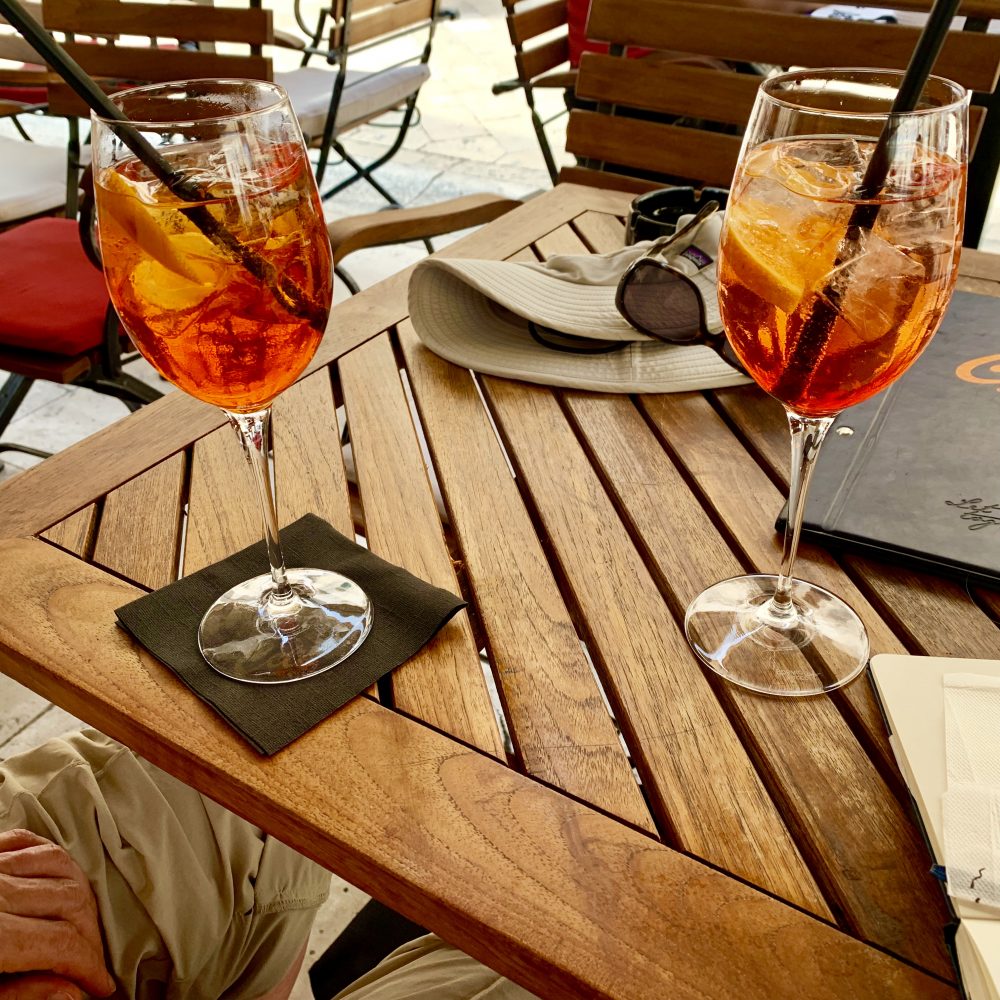
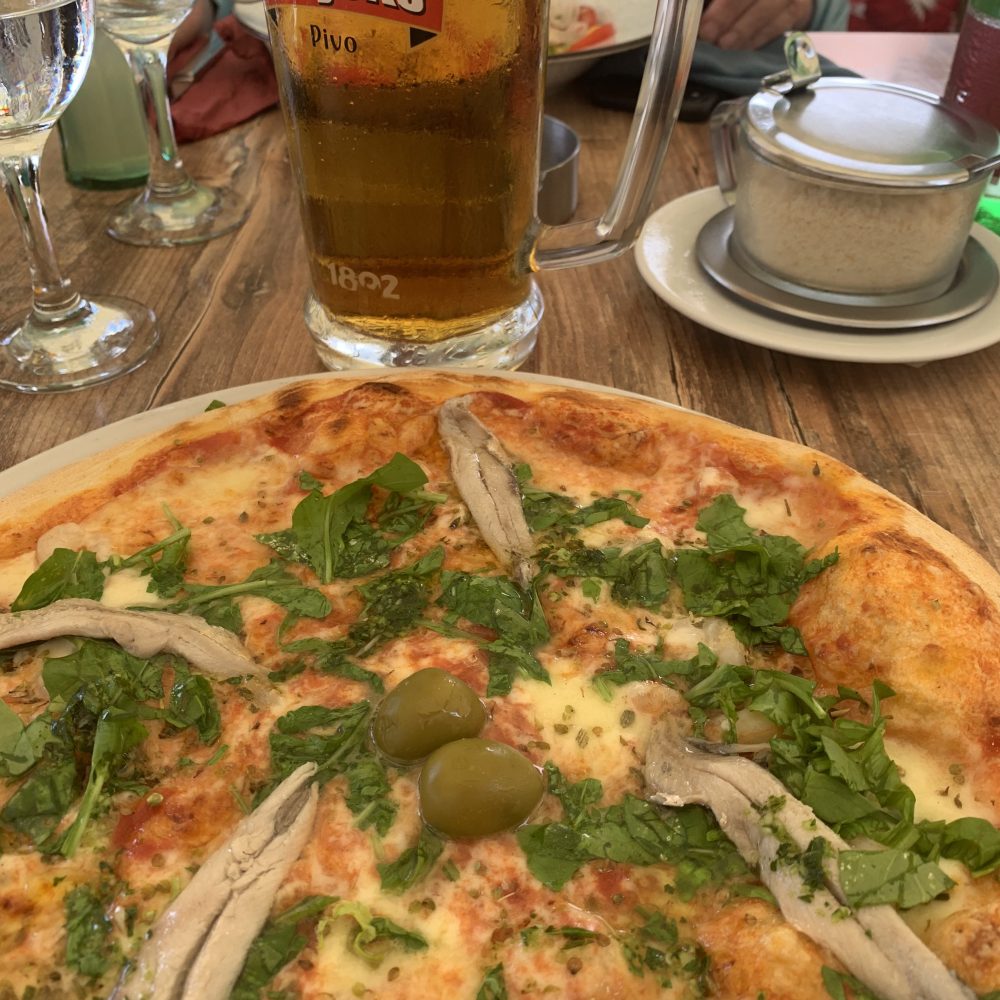
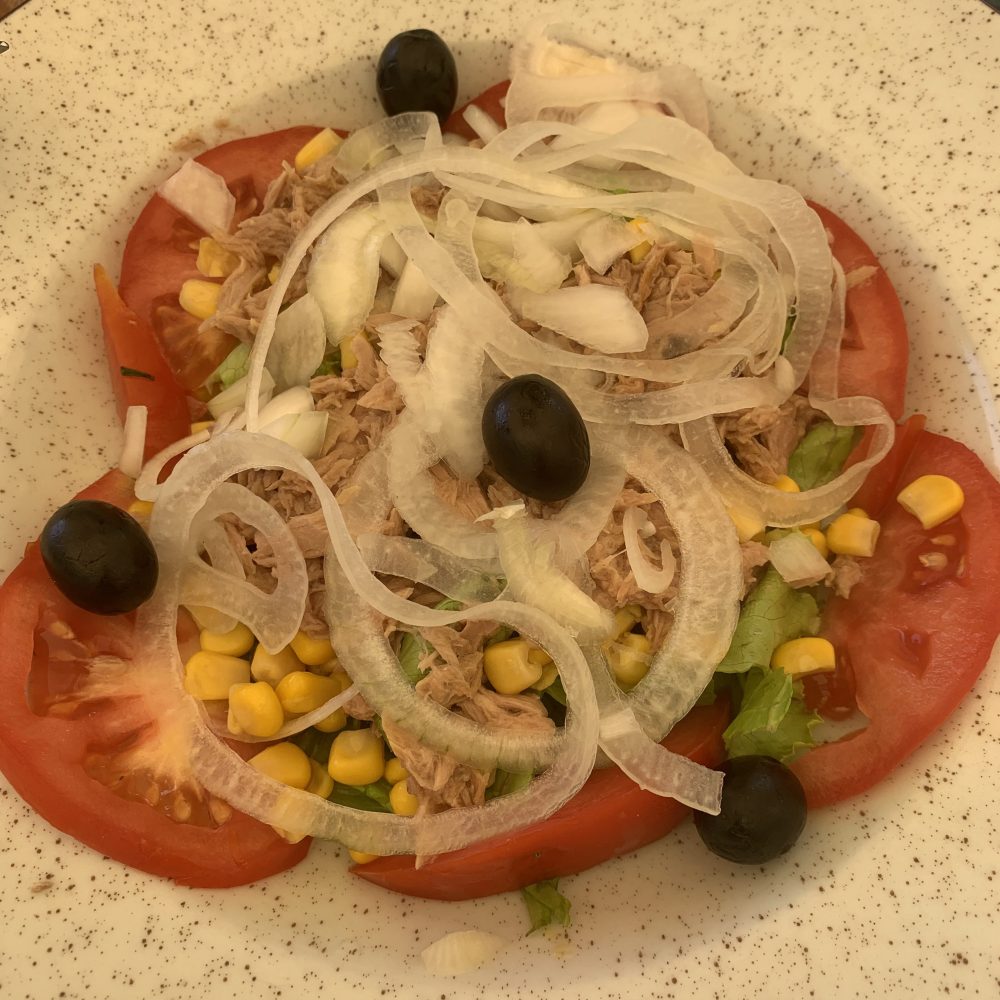
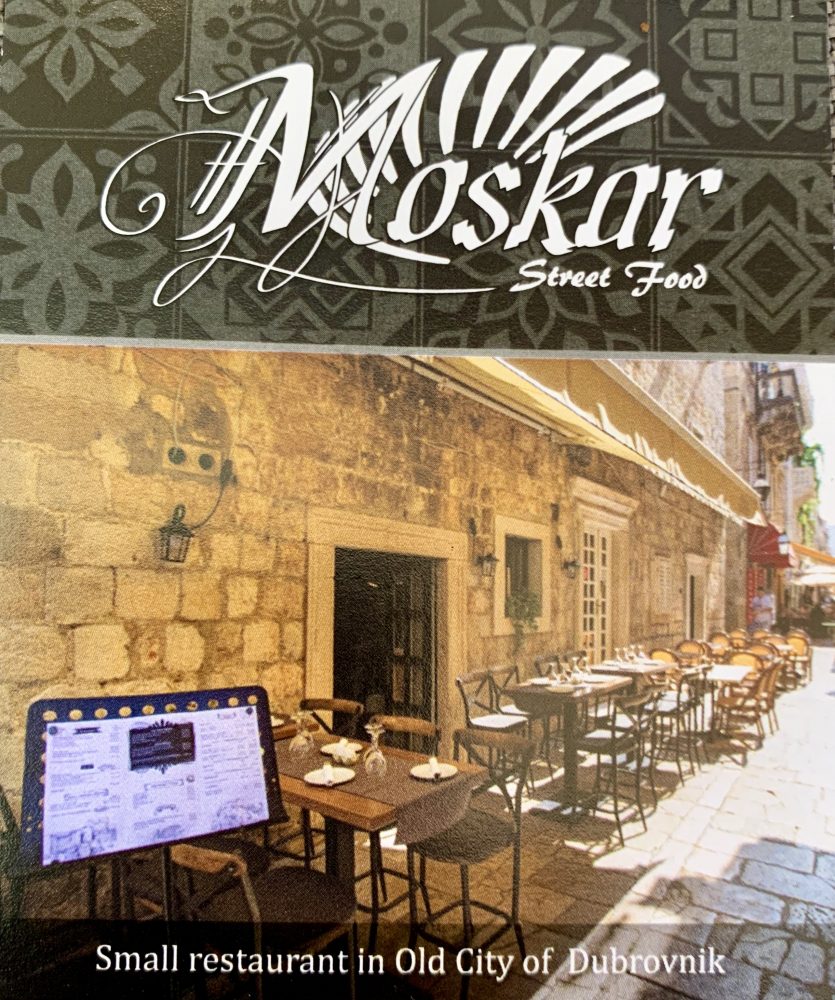
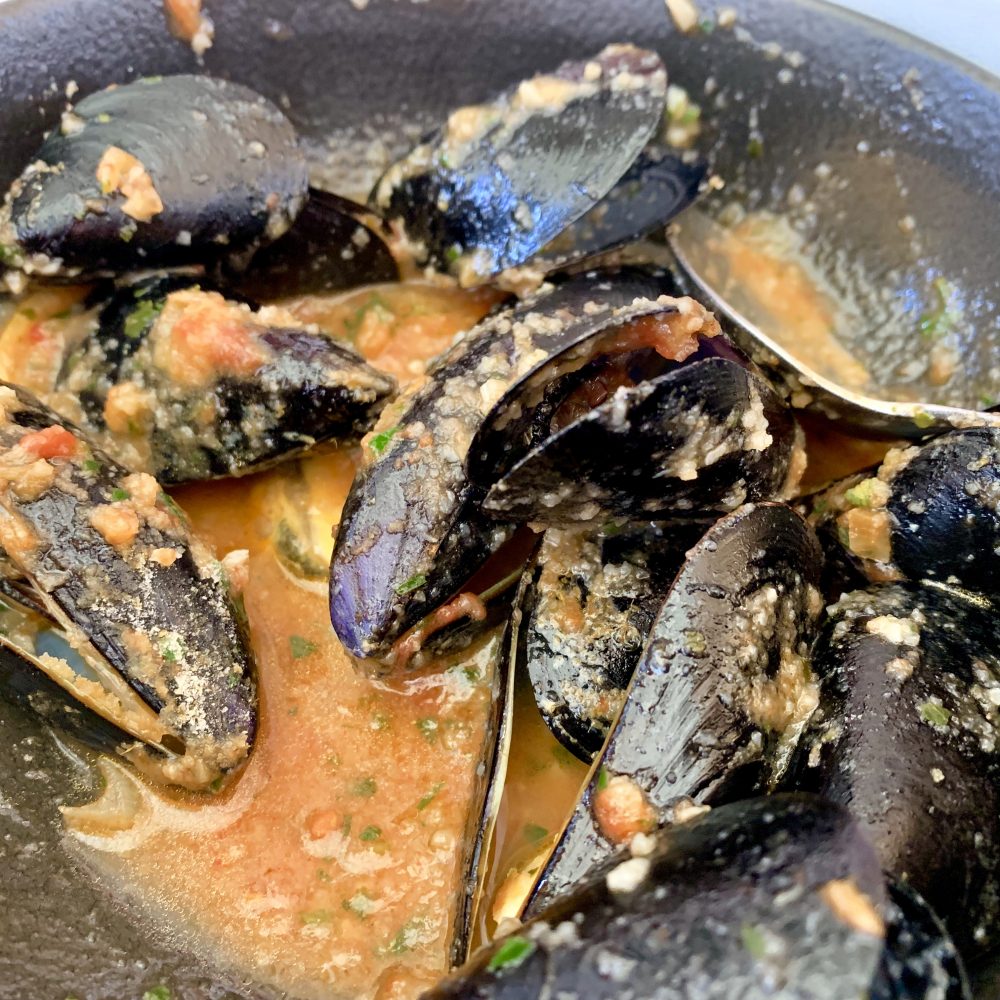
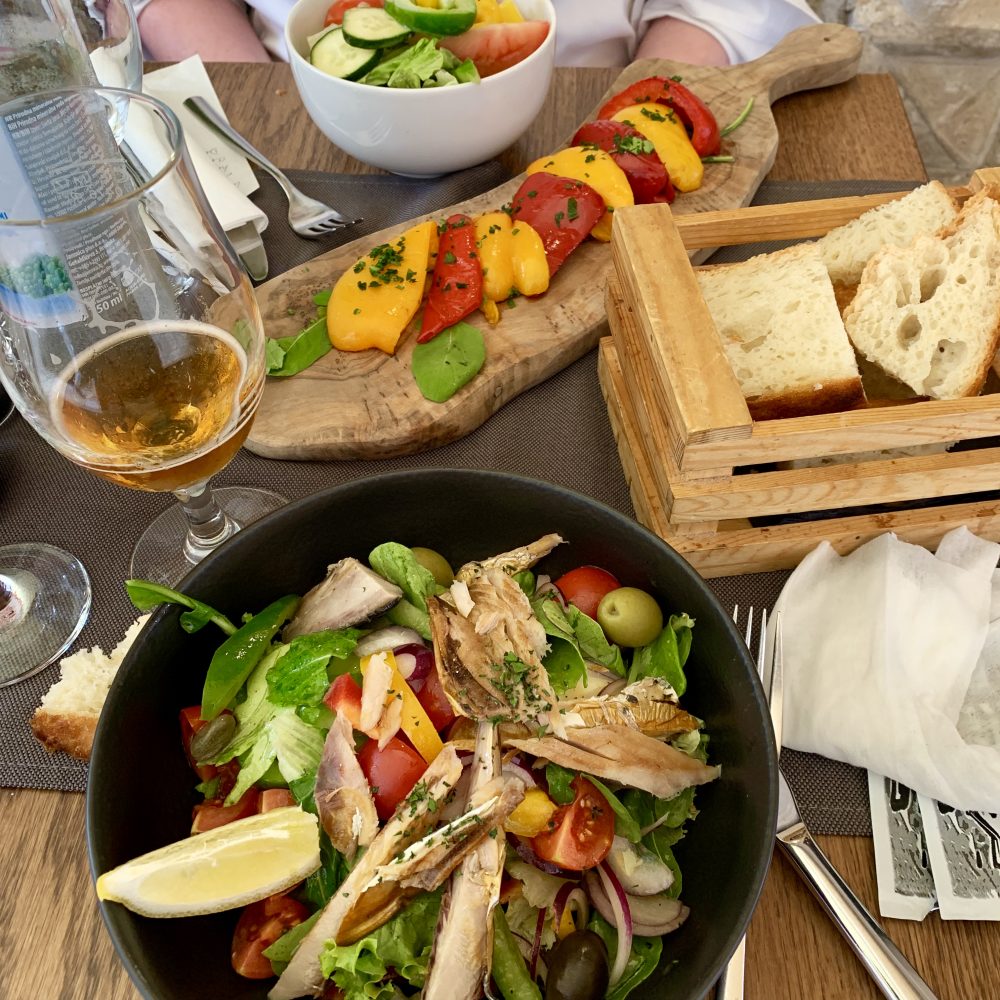
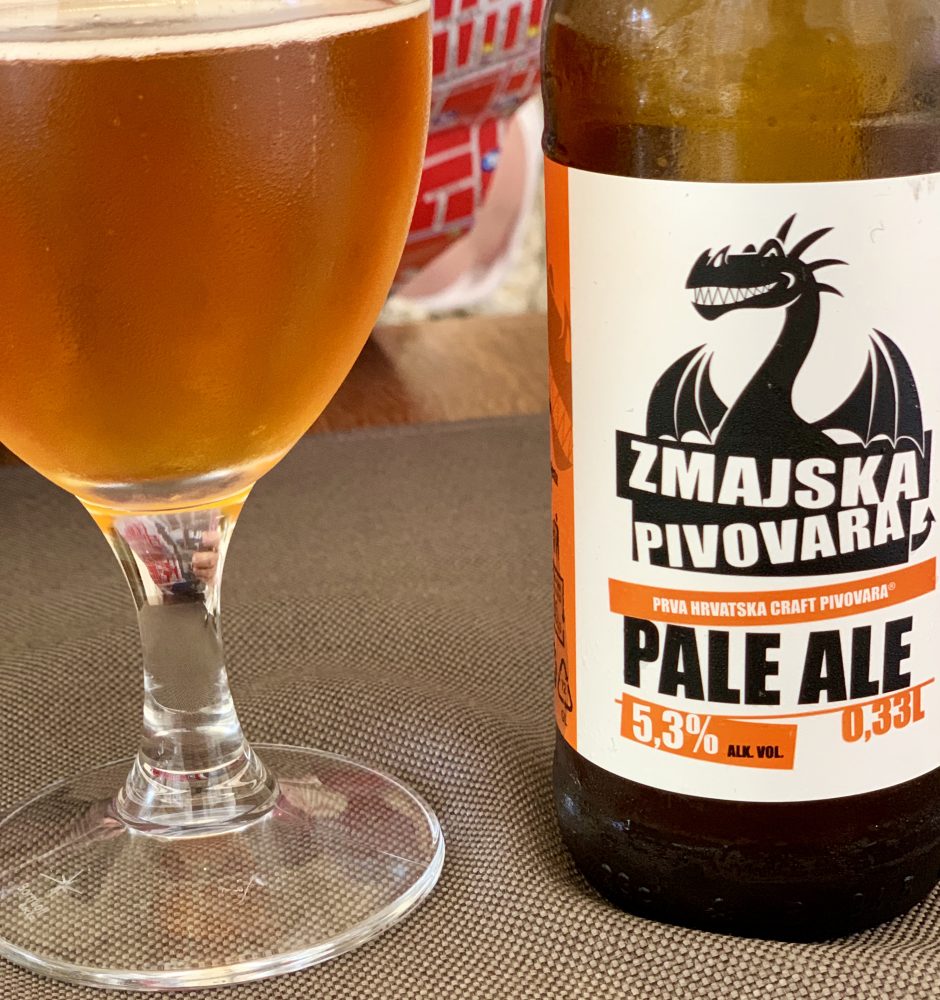

I had no idea Uber had travelled so far! What do you know?
Yep! Their tendrils run far and deep!
Fabulous trip and photos!
Tnx!